ARTIST BUTTONS
I see you
For my artist buttons I wanted to create large scale iris’ of peoples literal eyes. For this, I used a high resolution camera lens to capture as much detail of the iris as possible. I then edited the photos, lifting the contrast to illuminate the photos. I then turned these photos into buttons, which then were turned into hair clips. The idea of the hair clip is that it would be worn as a “third eye”. Oftentimes we wish we could see behind our back, not only literally, but metaphorically as well. Unfortunately in life, not everyone is to trust, making the buttons as almost a comfort. We feel comfort in knowing what other people say or think behind out backs, and with this project is it literally “behind our backs”. The hope is that this would be kind of similar to a button making booth, where people would go in, get a picture taken of their eye, then have it turned into a button. I like the idea that each button will be unique and when wearing you button, it is the same colour and pattern as your actual eye.
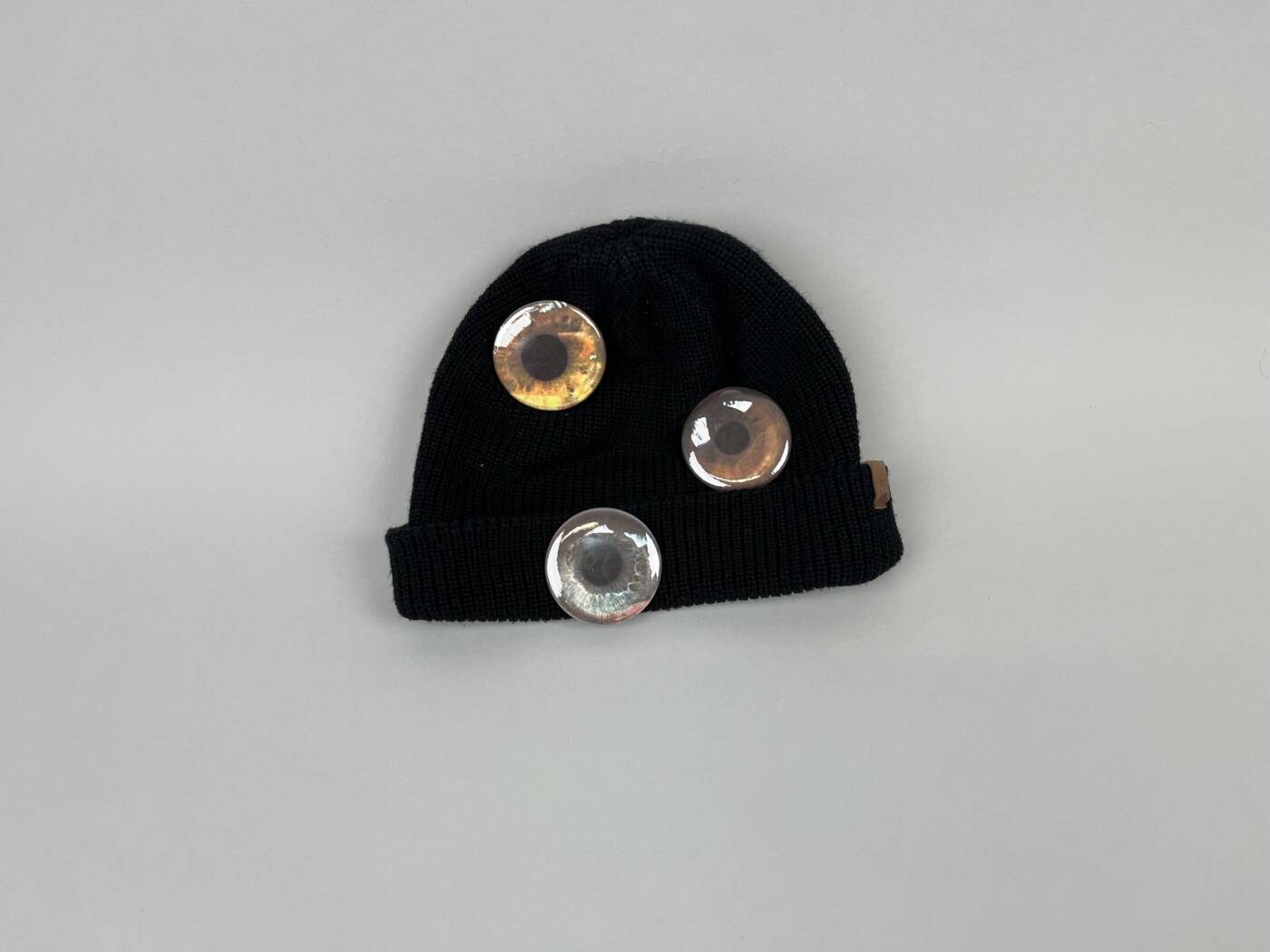
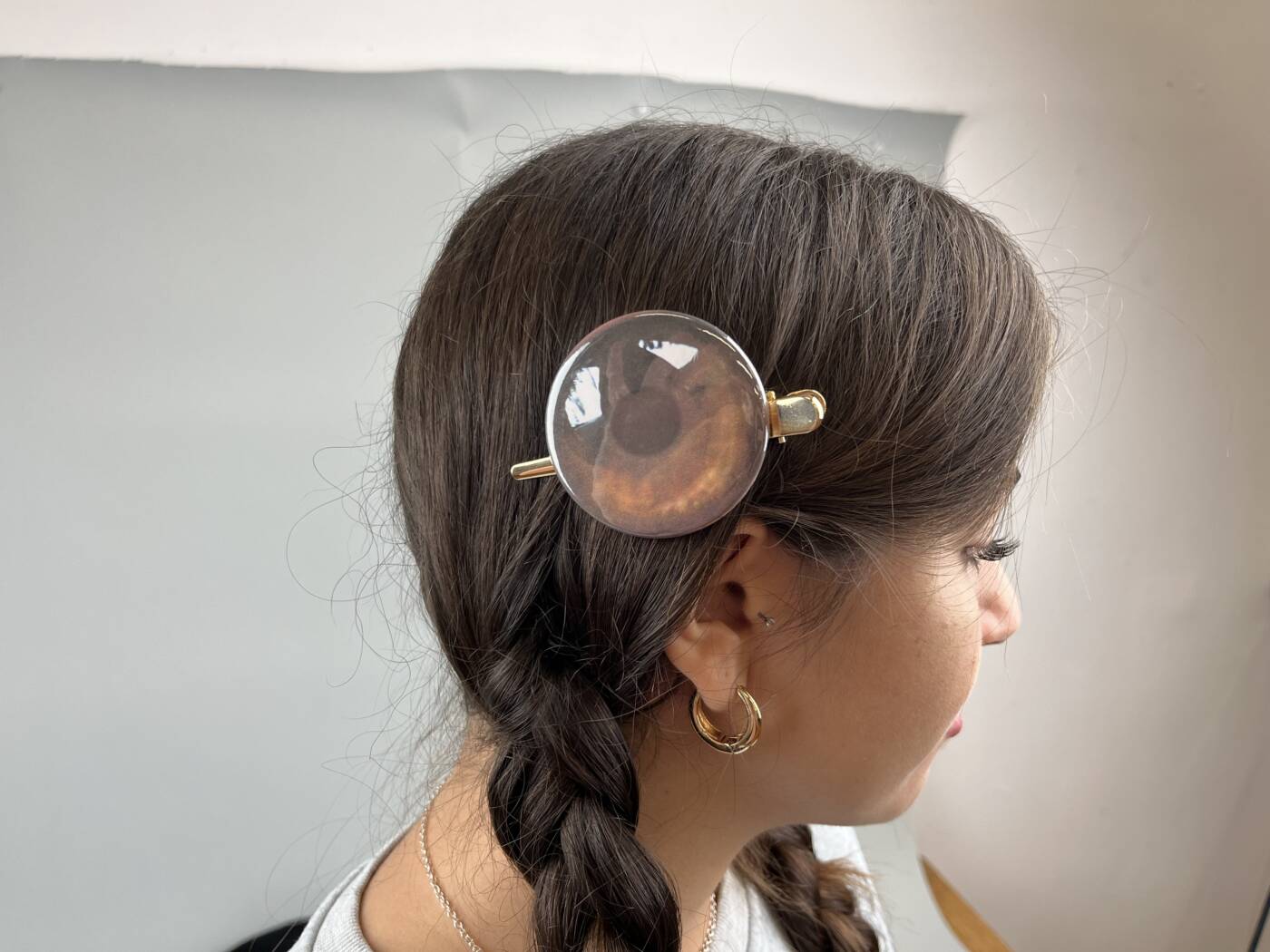
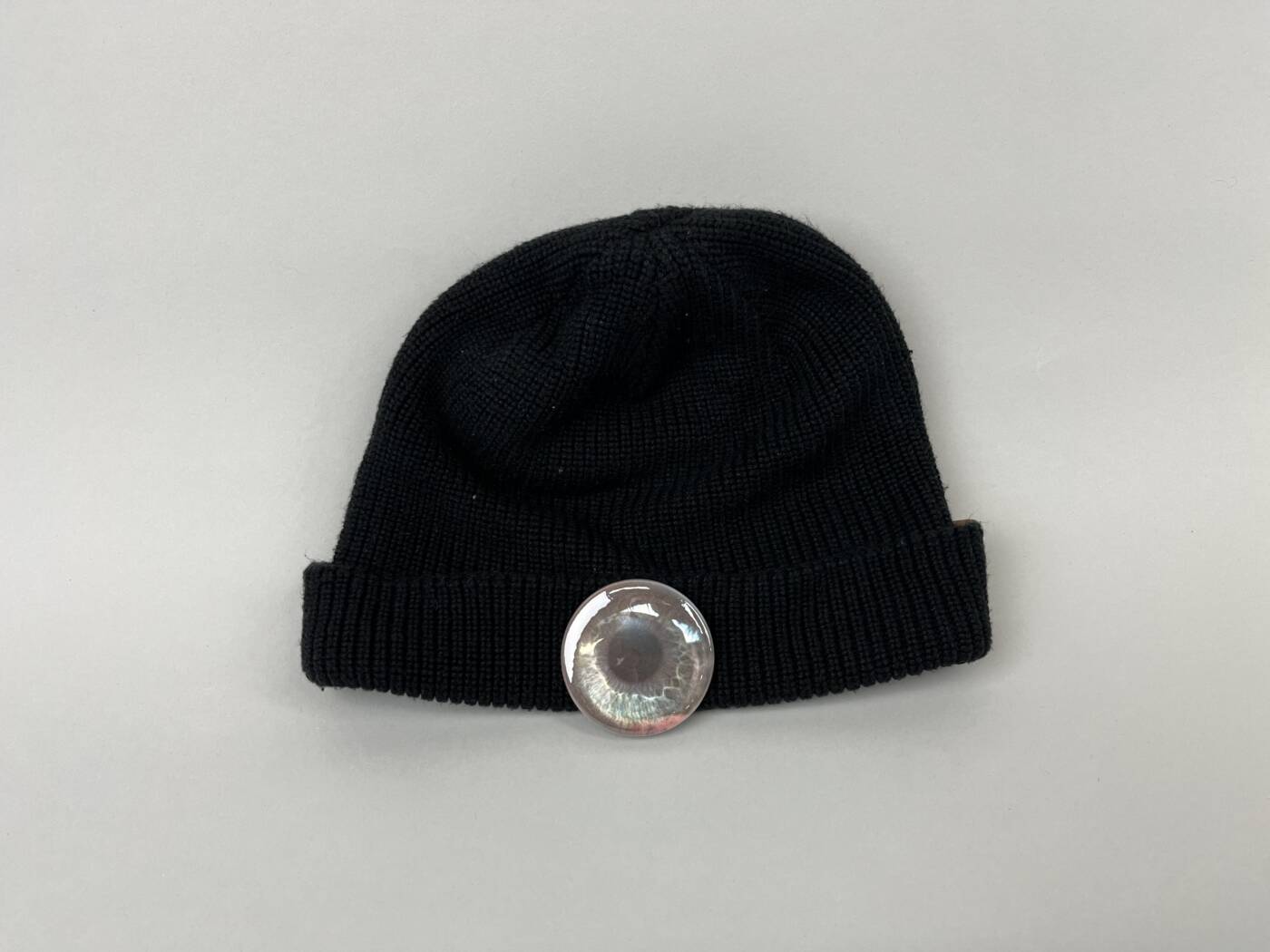
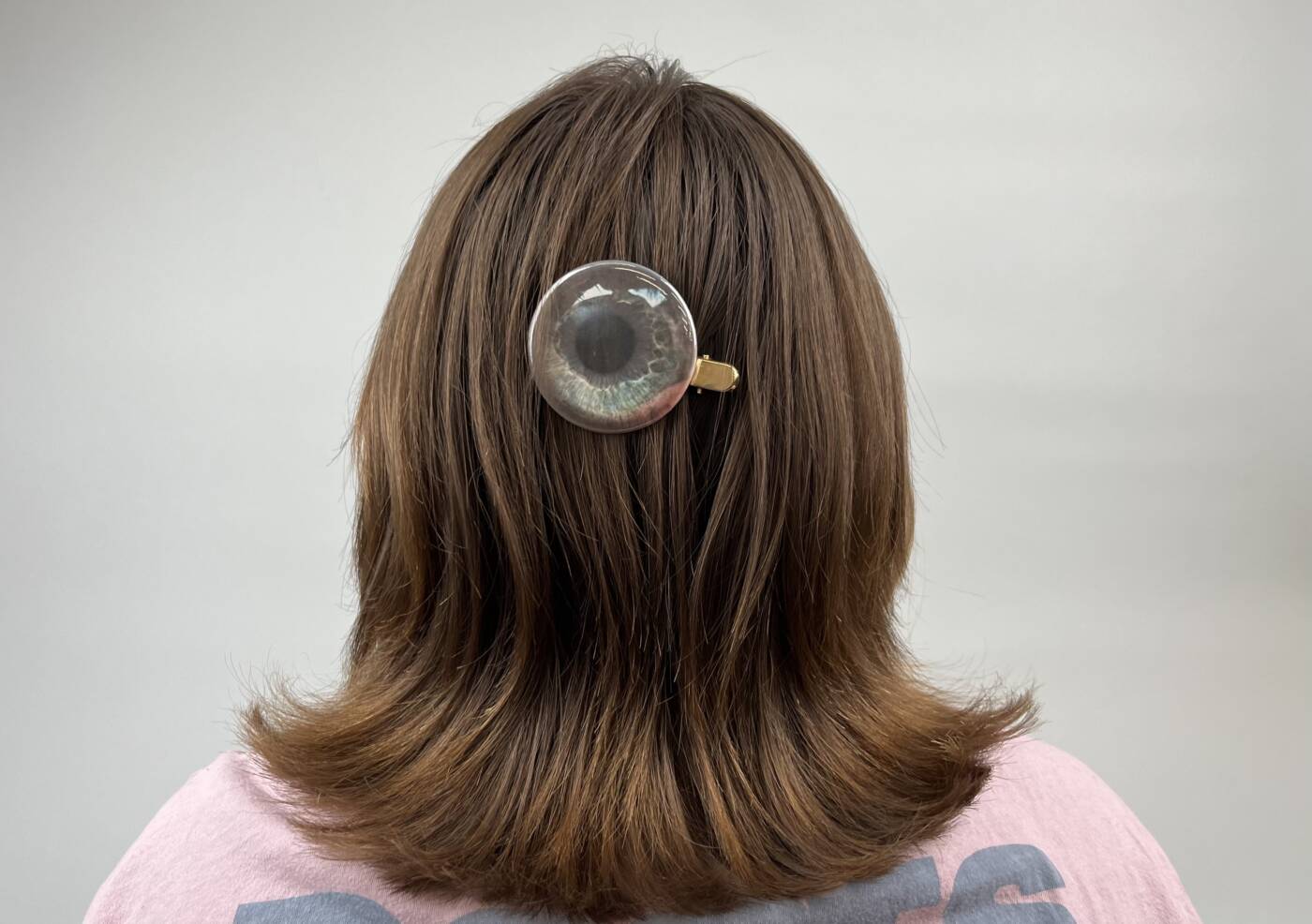
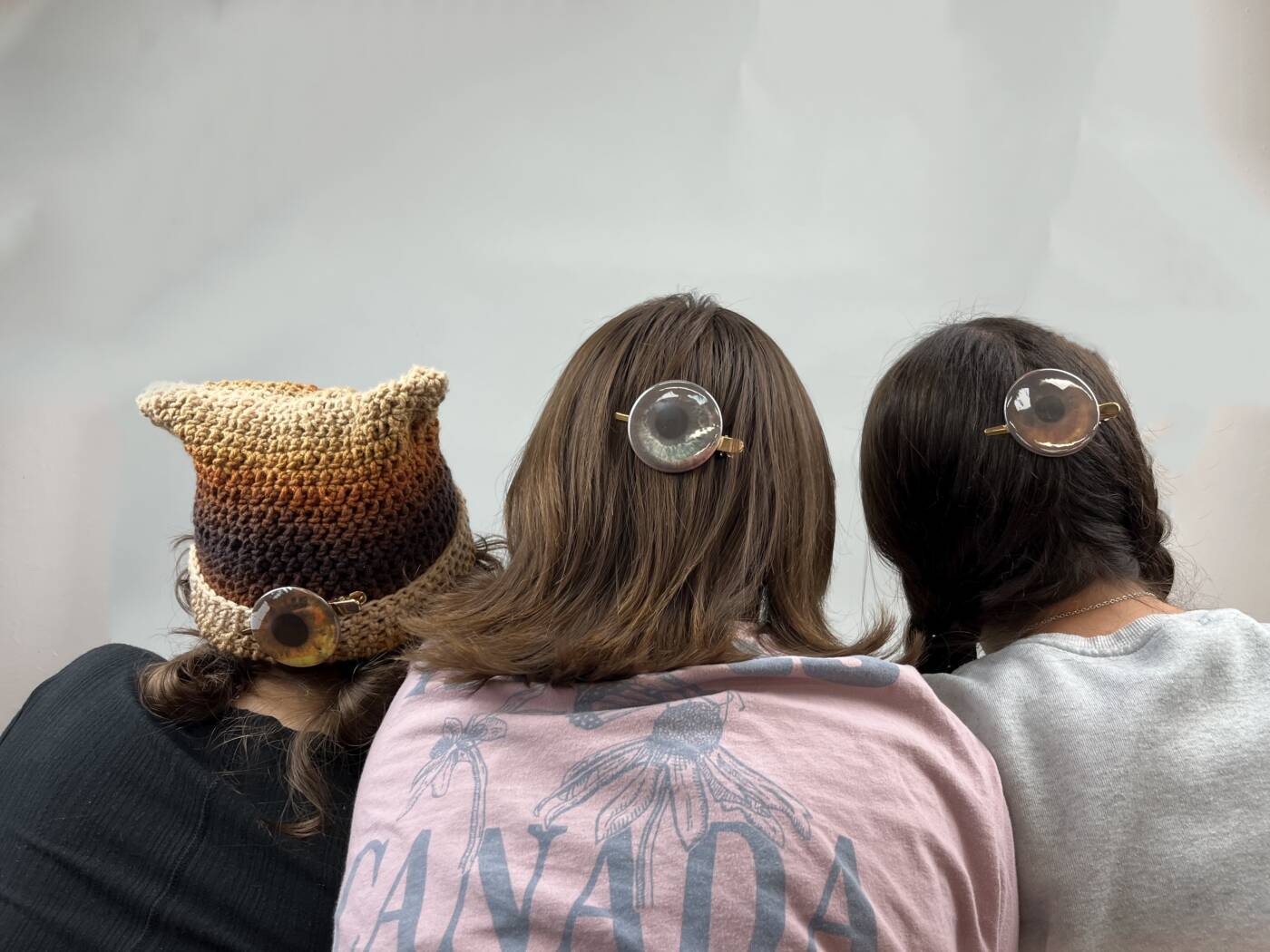
CONCEPTUAL PORTRAIT
“boobtrait”
For my conceptual portrait, or shall I say “boobtrait”, I chose to exhibit several different portraits from several different people. With this piece, I wanted to channel the artists perception on their own body, and how that may look to them. We all see our bodies differently, and unfortunately not always in positive way. This experiment allowed people with breasts to have fun and draw whatever their heart desired. My initial hope was for everyone to draw their bodies how they may see them, but in reality, who would know if they just drew any old pair of breasts? That is what’s great about it, is that we will never know if these portraits are even close to the real thing. Breasts have such a large stigma of being sexualized, rather than being appreciated for all that they do, they give life for crying out loud! Breasts are truly amazing and each and every one of them is unique which makes them so beautiful! This piece would be preferably depicted as a wallpaper, coating an entire room with each sheet of wallpaper being 45×65 inches
I want to thank each and every person who contributed to my “boobtrait” as it would not have been possible without the tremendous amount of extraordinary artworks!

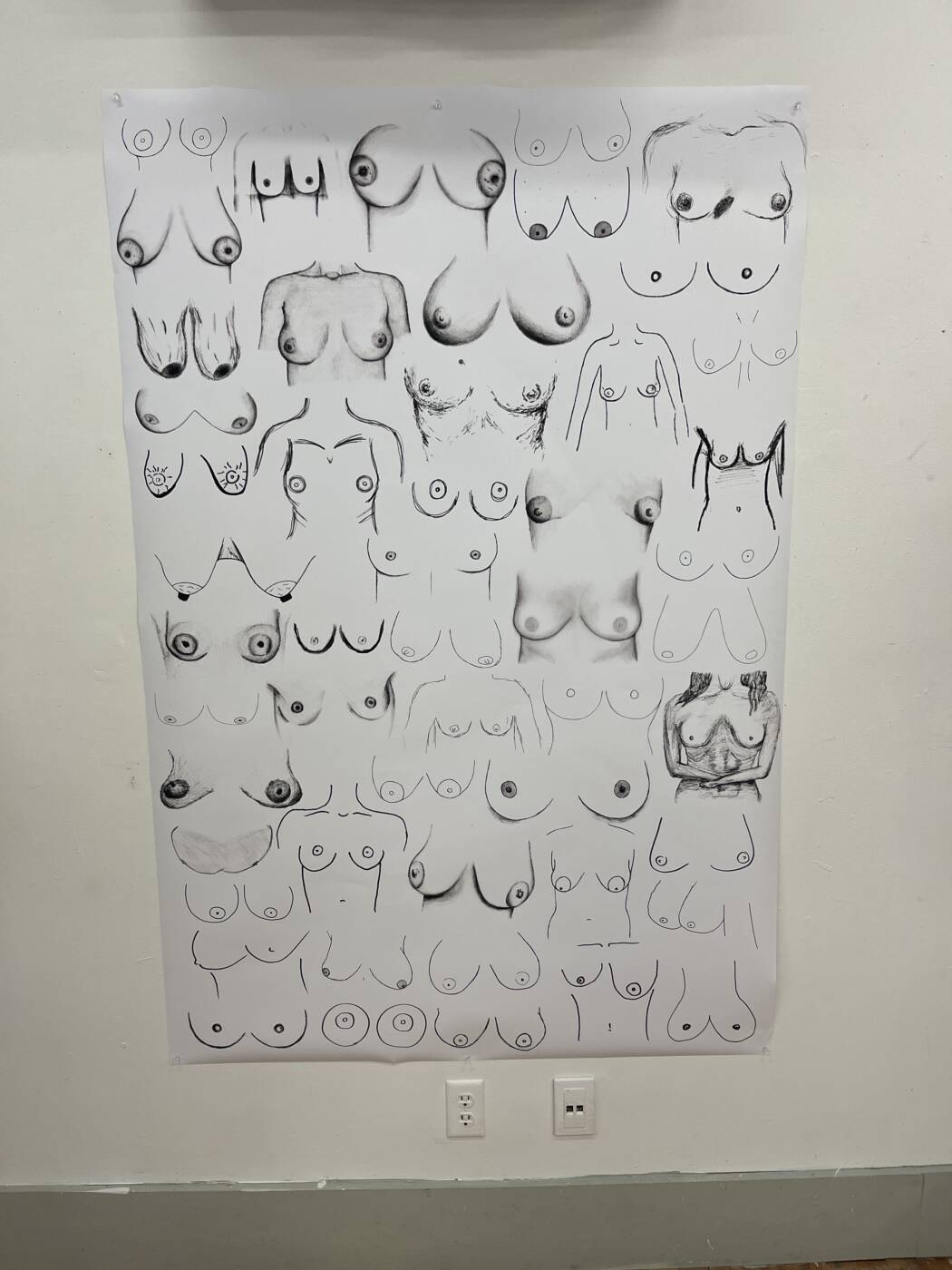
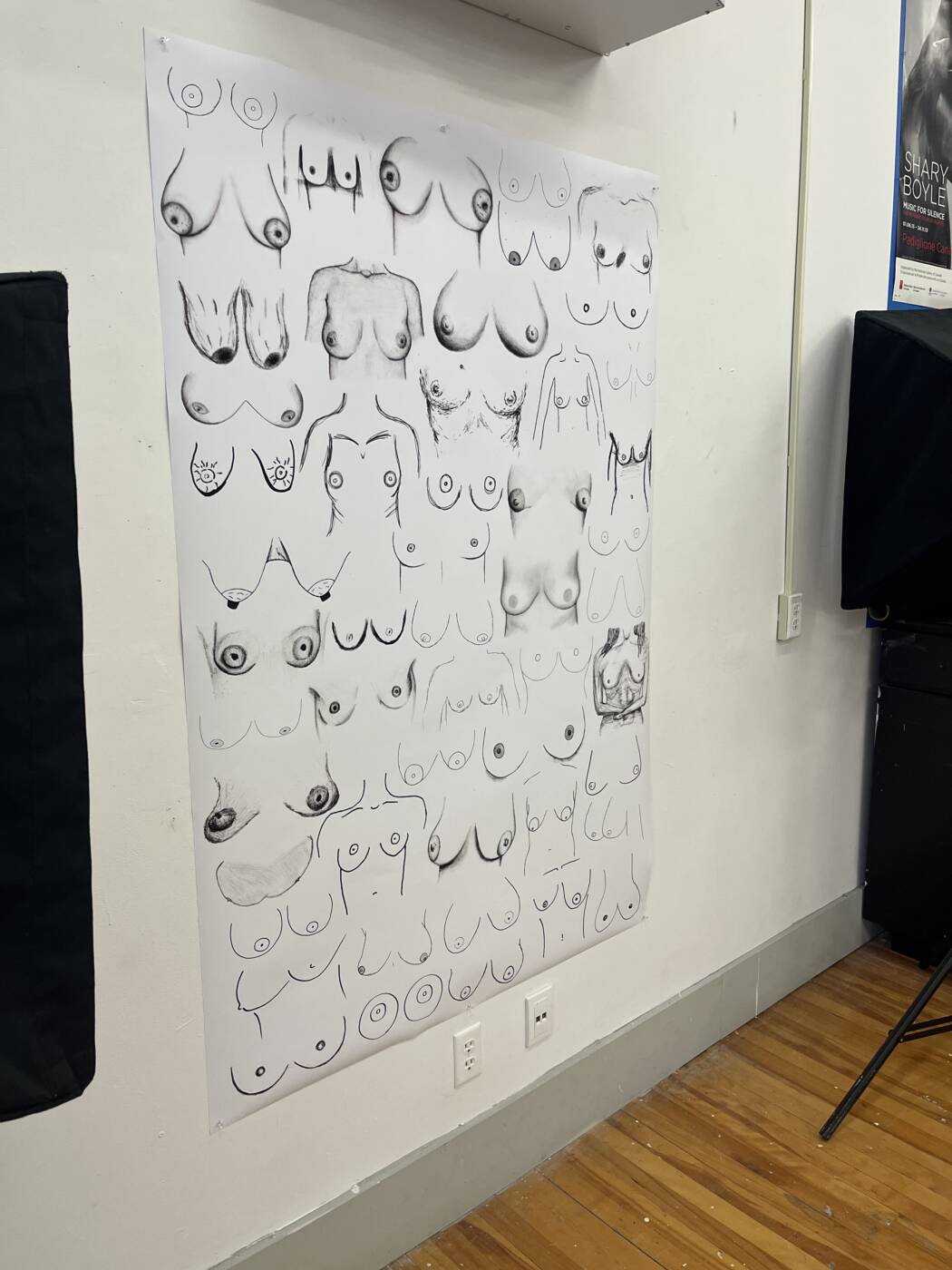
sleep giggling
AUDIO ART
For my audio piece I decided to collect multiple clips of my “sleep giggling” to make one continuous piece. Using the app “Sleep Recorder” I have recorded myself sleeping each night for years. The app is able to start recording when it senses sound of any sort, this could be snoring, talking, giggling or even just movement of the blankets. I quite enjoy listening to my sleep recordings, and hearing the amount of giggling I really do. It makes me question what my dream was about, am I laughing because I find something funny? Or is it because I am uncomfortable? Oftentimes, in my conscious day to day life, I laugh when a situation may seen uncomfortable, or maybe I just don’t know what to say so laughing comes out. I wonder if my sleep giggling is true authentic giggling, or is it just merely a coping mechanism.
One Feat, Three Ways (video project)
 Lick: The Loop
Lick: The Loop
For our loop, we decided to use Cyprus as the main performer while I sat without movement (trying my best) to take in all the licks. This performance shows the strong relationship many dog owners have with their dogs, and how the simple action of licking can convey that. For myself, I am very used to Cyprus and his love of licking peoples faces, yet this act was still difficult to say the least. As he continued to lick, his tongue went into my mouth, eyes and nose, while I had to stay as still as possible and let it happen. What is interesting here is that this is probably the first time Cyprus has been allowed to unconventionally lick my face without my hesitation and pulling away. He had free range to lick and lick and lick, until I could no longer take it. This being our loop shows a great demonstration of something going on and on forever, never truly knowing the end.
Discipline: The Sequence
For our sequence, we decided on doing multiple acts with first our subject (Cyprus) and then our actress (Serena). As the acts go on, Cyprus does a trick and Serena follows. In this particular video, the actions are all very expected, but what isn’t always expected is the outcome of what a dog is going to do. Is he going to listen to his trainer? Is he going to do whatever he wants to do? Being that he is a dog, he is very unpredictable, Serena on the other hand, is not. Going through and recording these clips, we were aware of what Serena was going to do, we could tell her exactly what we wanted and she would do exactly that. With Cyprus, it was a different story, we had to take twice the amount of clips as he is in a way, his own “boss” who comes up with his own ideas and actions. I feel this sequence went well as there are smooth and understandable cuts between each action, and the actions flow from one to the next. I also feel that there is sense made knowing he is a dog and not an actor, this leaves room for trial and error.
Tempting: The One Shot
For our one shot, we shot an unedited video of Serena, Cyprus and I in a line. This involved Serena and I sitting cross-legged while Cyprus was laying down in between us. As we sat, Serena and I passed a carrot back and forth, each time taking a bite. While this was happening, Cyprus continued to be in between us looking back and forth at the carrot, in awe. Although Cyprus was very interested in the carrot and eating it, he kept his composure throughout the video which showed amazing discipline. May I add, carrots are one of Cyprus’ favourite snacks, so of course he got the carrot when we were done. He showed tremendous self-awareness while being tempted. I feel this worked really well as a one shot, as it did not need any editing, it is a stand alone piece. Cyprus was great throughout all of the videos and I am super proud of what a good boy he is.
Ever is Overall, Pipilotti Rist. 1997
I have chosen Ever is Overall, which is a video of Rist walking down the street, smashing car windows as she passes them. This video installation consists of a large-scale projection of a woman in a blue dress walking down a street while smashing car windows with a large flower. I see this work as a feminist statement and a surreal exploration of female empowerment. The framing of the piece consists of a mixture of close-up shots and wide-angle shots. At times, the camera zooms in closely on Rist, capturing her facial expressions and actions in great detail. This framing allows the viewer to connect with the character on a personal level, emphasizing her emotional journey and the rebellious act of smashing car windows with a flower. It allows you to feel what she is feeling as she continues to smash the windows. As for the colours, wears a vibrant blue dress, which stands out against the urban backdrop, as well as blue being a colour of stability and strength. The red flower is a great choice as it stands against the blue dress, with red flowers being a symbol of passion. The sound features melodic music that includes a blend of electronic and acoustic elements. The music is often soothing and hypnotic, with a gentle and repetitive quality that helps to establish a dreamy atmosphere. It is installed in a gallery and projected onto a wall, with the other part of the wall being up-close flowers. I think this helps convey the feelings she wants the viewer to feel because it almost sucks you in and makes you feel as if you are watching it firsthand. This work makes me feel a sense of empowerment. Watching this made me feel like women can do anything if they put their minds to it. I think knowing this was an older piece it also helps put into perspective that women were seen differently at that time. To relate it to videos we see today is a bit hard because today making videos is so accessible, versus when more production was needed to make such a video. I find that Rists’ pieces have a lot of very obvious relations to feminism, but also a lot of hidden meanings as well. Her performances hold so much emotion and feelings, I feel it would be hard for anyone to deny these feelings while watching any of her performances.
Wearing my sweatshirt inside out:
While doing this experiment I felt very self-conscious at first, but as the day went on I started to realize that no one really even noticed or cared. It made me realize how many times I walk around in public and worry that others are judging me based on my looks, but in reality, everyone else is just worried about themselves and how others are seeing them. We are so focused on others’ thoughts, that we forget that everyone is thinking/feeling the same thing we are. I really enjoyed doing this experiment because it helped change my perspective, knowing there probably wasn’t anyone who even noticed my shirt was inside out, and even if they did, did they care? No.
Smo’km out
Have you ever been in a car, whether you’re the driver or not, and someone lights a cigarette? You instantly smell the smoke, it fills up your lungs as you gasp for fresh air. It feels like you have been driving with the smoke in the car forever, yet it has only been a Km. For my Km project, I chose to drive for exactly one Km, while my dad lit a cigarette, and continued to smoke. As the air filled my lungs, I instantly began to cough. I coughed and coughed, while he continued to smoke. I wanted to represent that feeling of being in a tight enclosed area with a smoker. Many times we are too anxious to say anything, and we suffer in silence. In this video, I chose to express my feelings and vocalize them by coughing. The Km felt like 10, as I was gasping for air, I felt like it would never end. My dad has smoked my whole life, and although he has never smoked with me in the car, I have hated it my whole life. Many children are subject to parents smoking in the car, while their kids cough and pray fresh air will arrive soon. A Km for them may feel like 100. Although going 60 Km an hour takes only 1 minute to drive 1 Km, for people in a car with smoke, it feels like longer. It can be hard to gauge how long a Km really is. When you drive normally with fresh air, the minute goes by fast. We usually don’t even feel each new Km. When you are in a state of discomfort, the minute can feel like an hour. The state of our emotions affects the way we feel a Km and the length it takes to travel. Everyone perceives time differently, some may experience larger amounts of discomfort than others. This can affect the way they feel the time passes, my dad probably felt normal as he smoked for 1 Km, but for me, it was hell.
Marina Abramovic
- What are some of your first impressions of Marina Abramovic’s performance works, based on the documentary? Use an image/example of one or two works. to describe aspects you admire, and aspects you might agree are problematic?
At first, I was very taken aback by her work, but I was intrigued. This is my first time hearing of Marina Abramovic. The longer the documentary went on, the more I began to love who she is and what she has done. She takes art to a whole different level, many of which can be very controversial. I think what I admire most about her is the fact that she seems to not care or worry about what others are thinking. For her, her work is art, it is everything art is. She comes across as almost emotionless, but yet full of emotion. Her performances are more than performances, they are her life.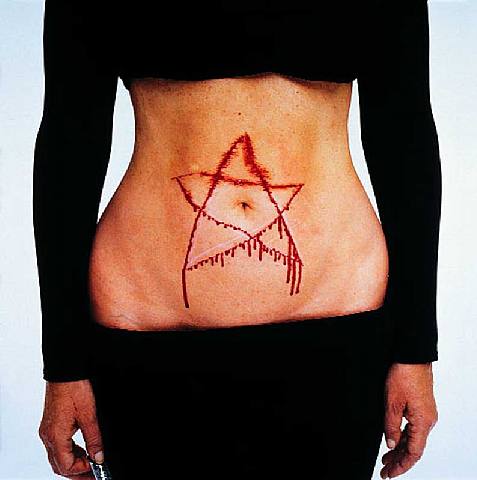
One of her pieces that I admire most is her “Lips of Thomas”, where she has taken a razor blade and cut a star into her abdomen. This piece has been both admired and criticized. I personally admire the emotional aspect behind the piece. The emotion that pulls from not only the performer, but the audience as well. I would assume, watching this piece in person there would be many different energies and emotions flowing around the room. I also admire the spiritual exploration as she begins to dive into the realm of spirituality, with trying to connect with those who may be beyond the “physical world”. Her commitment is what amazes me the most in all of her works. She always stands strong and with such confidence, it is so admiring. Although this piece can be seen as beautiful, there is also the side of it being problematic to some. The fact that she is performing an act of self harm in front of many can be problematic. The self inflicted pain is seen different by everyone, so this work can cause some issues with not only the real world, but in the art world as well. Many viewers may experience some discomfort while watching the performance, it can be uncomfortable to watch. This piece is one where emotions are flying rancid, and opinions are all over the place. I think that art is meant to confuse us, make us uncomfortable with unanswered questions. Art is here to push our “everyday” thoughts outside of the box and think creatively.
- What have you learned about features of performance art based on Abramovic’s work? Name a few key features according to her precedents. Include an image to illustrate. Consider her quote “When you perform it is a knife and your blood, when you act it is a fake knife and ketchup.”’
Abramovic’s art has had a significant role in shaping what we call “Performance Art”. One key feature I want to focus on is Durational and Endurance-based art. Marina uses this in many of her pieces but in particular her piece “The Artist is Present” she gives a whole new meaning to what endurance actually means. For Marina to be able to sit in a chair for so long, while her body aches and her stomach growls, it is truly an amazing thing to witness. She not only pushes her physical state but her mental state as well, she tests things many are afraid to do. Another feature used in her performance piece is the Physical and Emotional Vulnerability. Through her work she allows the audience to connect on a different level, she feels what they feel, sees what they see. In regards to her quote, I feel it is a great reflection of her work. As mentioned in the documentary, she is not an “illusionist”, she performs real life performances.

- Discuss the ways performance art resists many museum and commercial art world conventions. How does Abramovic solve/negotiate some of these challenges, and do you find these compromises add to, or undermine the ideas at play in her work?
I think that performance art can be tricky for museums because they know it’s not something that can be sold, it isn’t something a big buyer can come in and take home to their penthouse. Performance art is something that is solely happening in the moment, it can be recorded, but it will never be the same as it was in the very moment it was originally being performed. During the MoMa exhibit, another issue arose. The issue was that the museum was only open for a certain amount of time each day. This means there is only a limited amount of time where the performance can be performed. There was a point in the documentary where a man was angry because it was time for the museum to close, and he was unable to sit in front of Marina and perform with her. I think she overcomes some of these challenges that occur by giving people feelings they have never experienced. When setting up her piece, she originally wanted it to be harder on the body and mental state than the museum would allow. They did eventually come to a compromise on how the performance was going to take place. Another issue was when she wanted to remove the table in between the two chairs. Security had a bit of an issue with this being that they were worried she was “too vulnerable” without the table in between. She assured them it was not going to be an issue, and she was right. Everyone was there to feel the whole experience rather than destroy it. I don’t necessarily believe any of these compromises undermined her work per se, but I do think they shifted the work in a different direction. I think when she originally had the idea to sit for such a long time, many were worried. She was able to overcome this by inviting others to experience the performance and be fully immersed in it. By allowing the audience to participate, she was able to share the experience and create the piece as a whole.
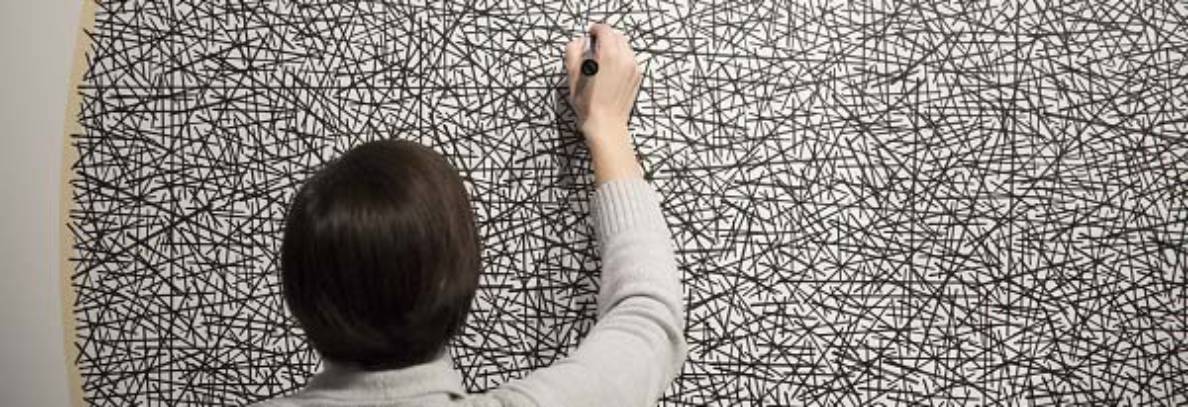
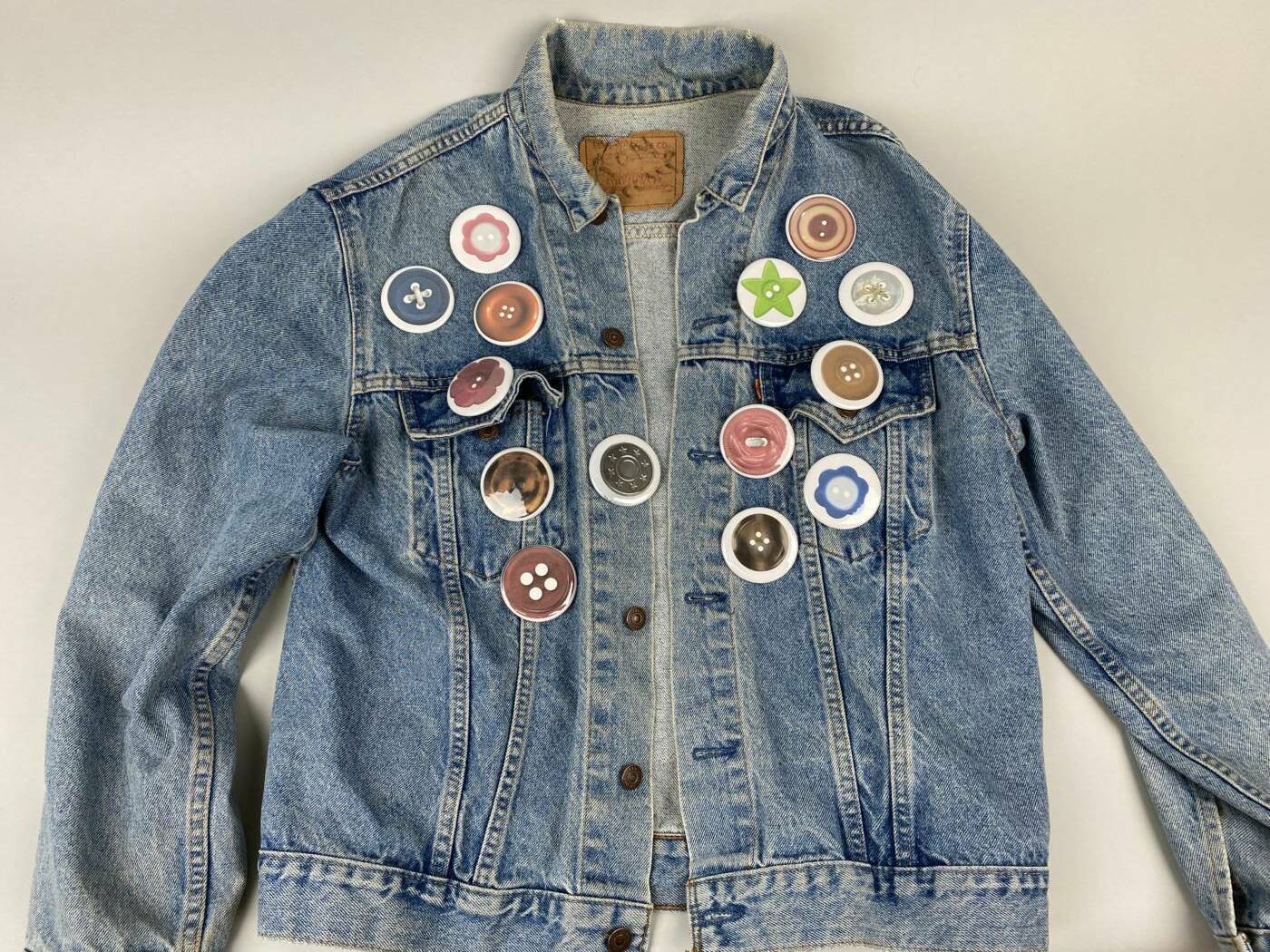
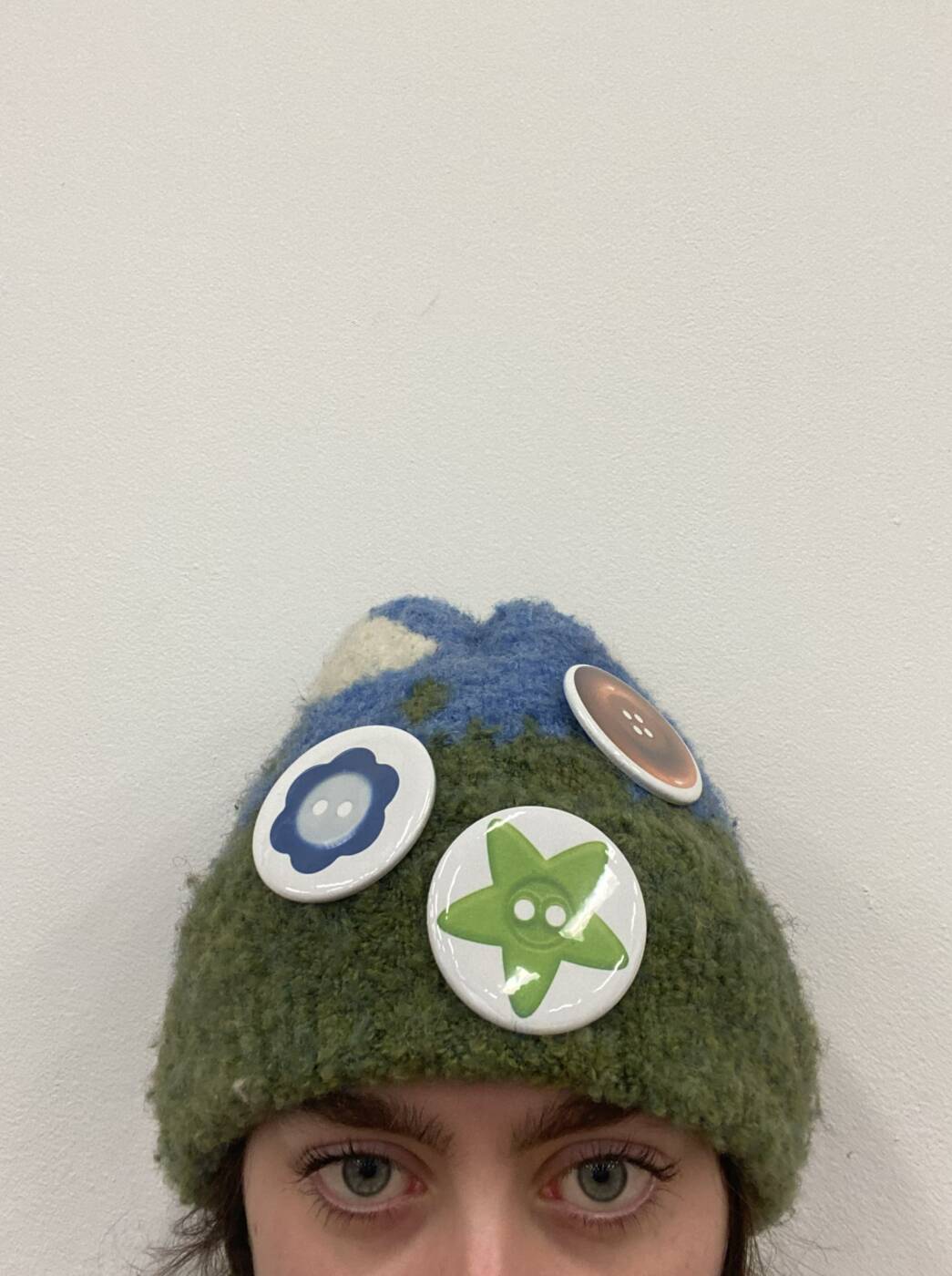
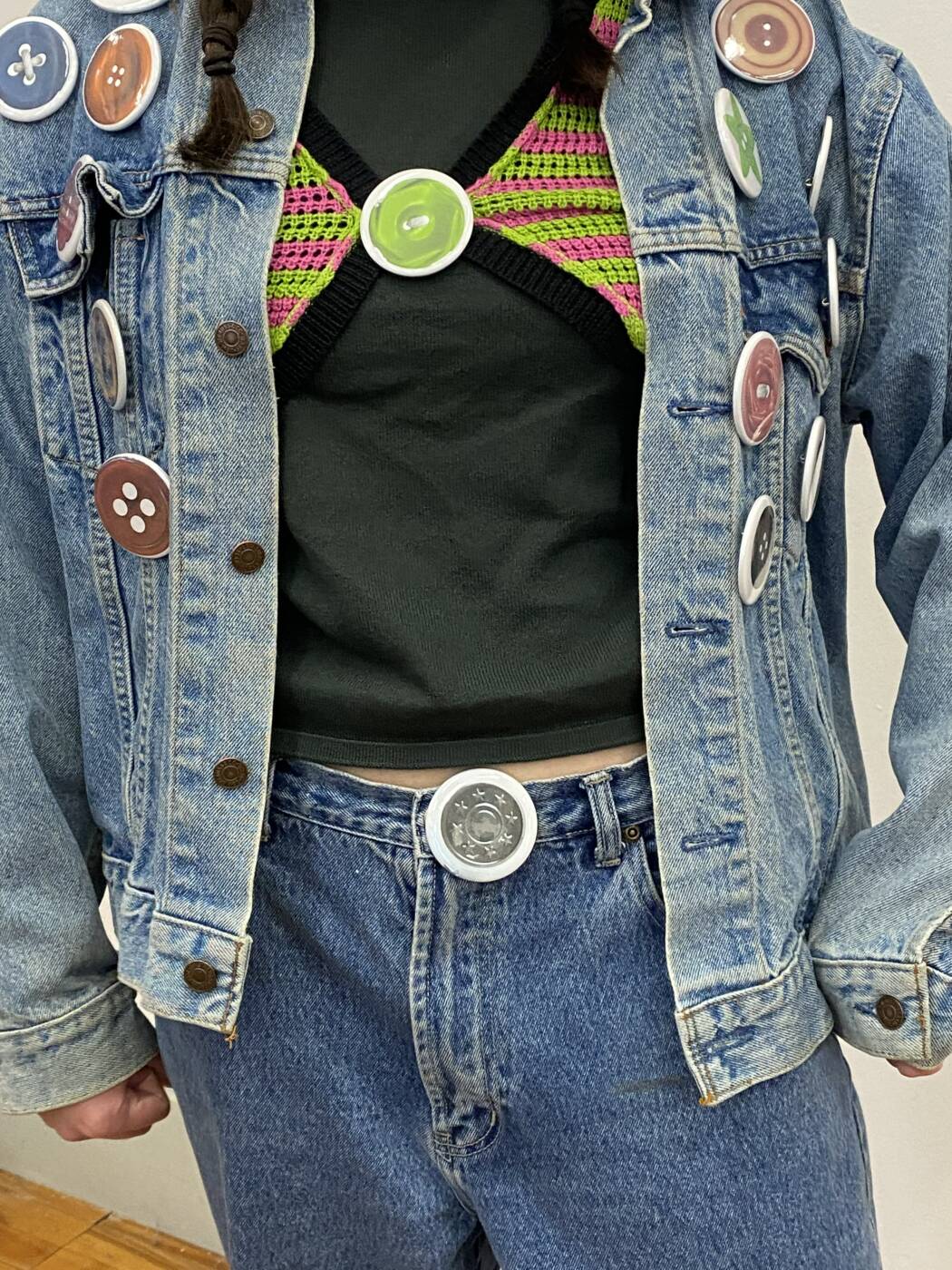
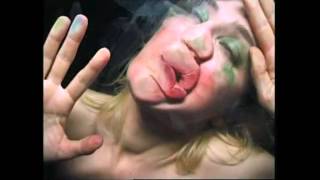
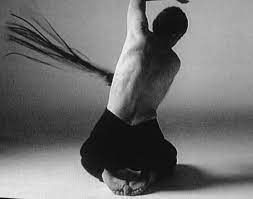
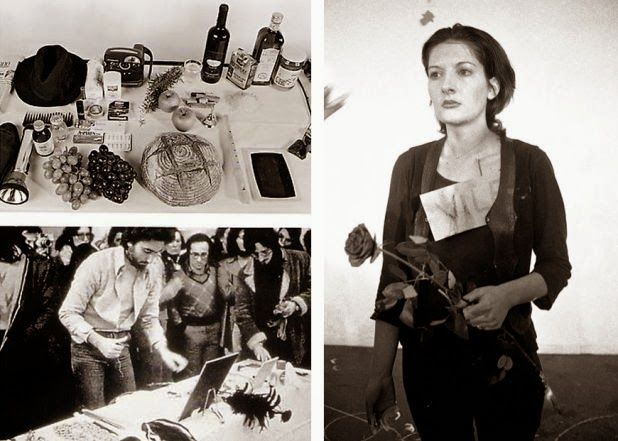
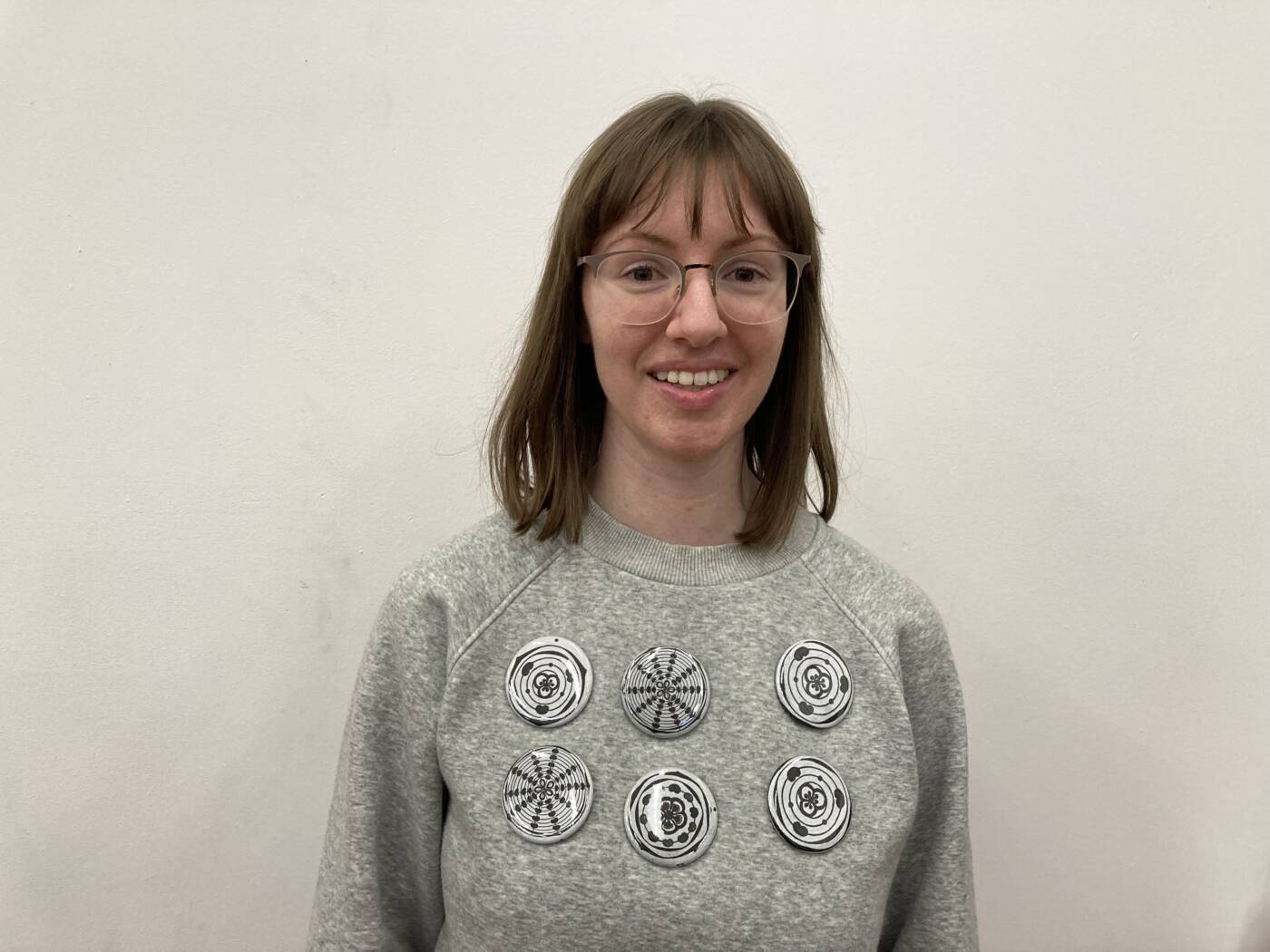
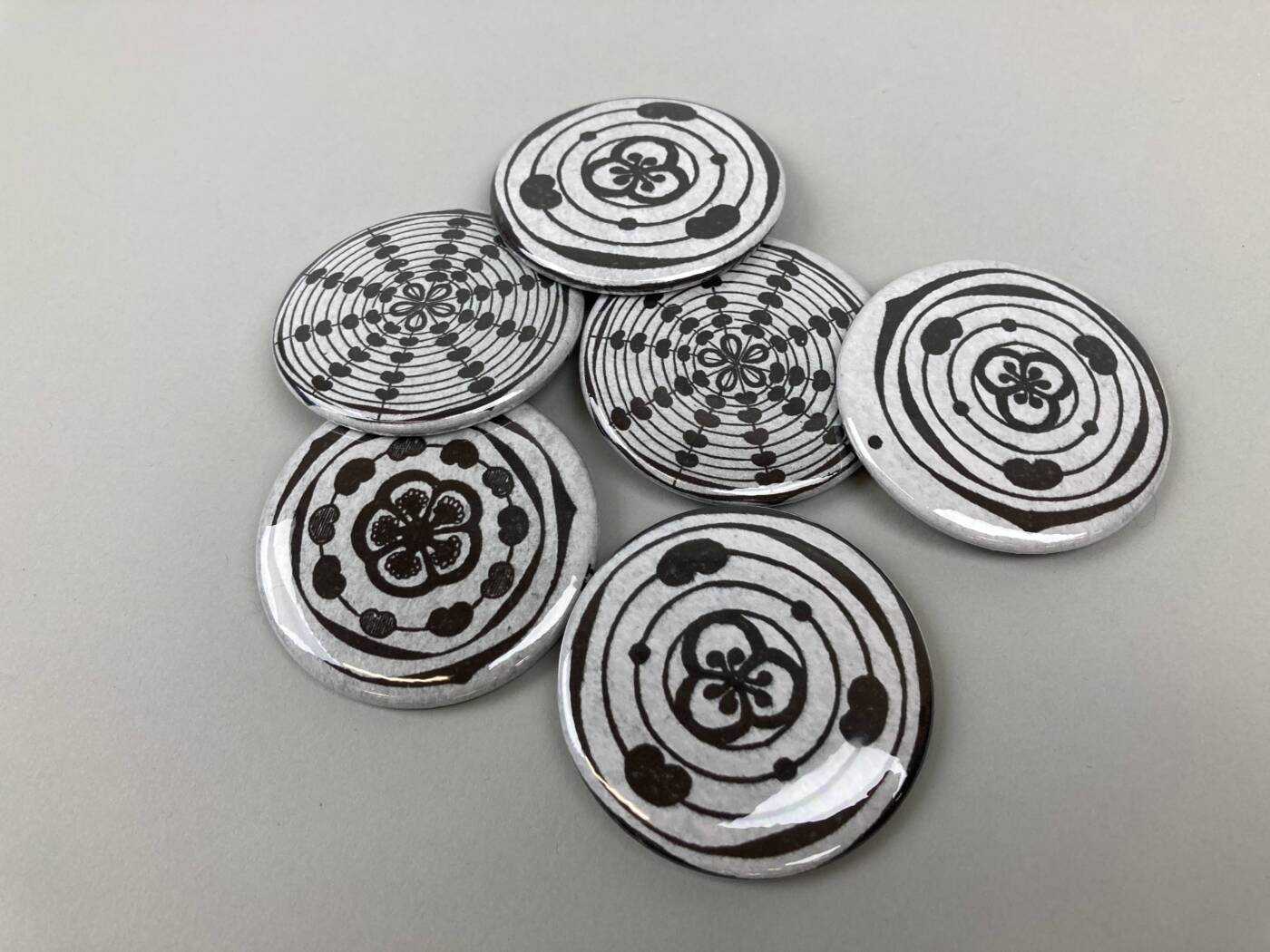
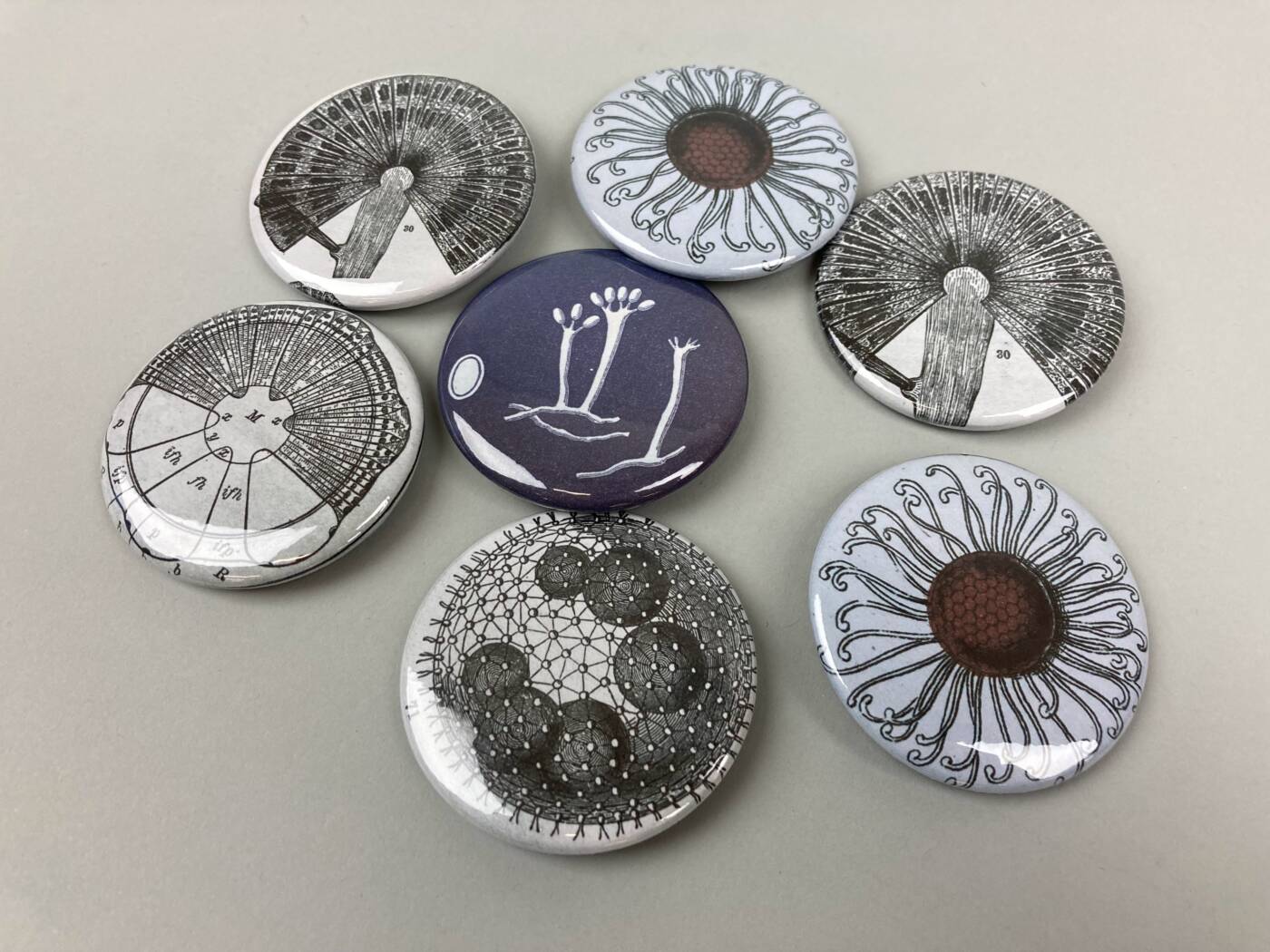
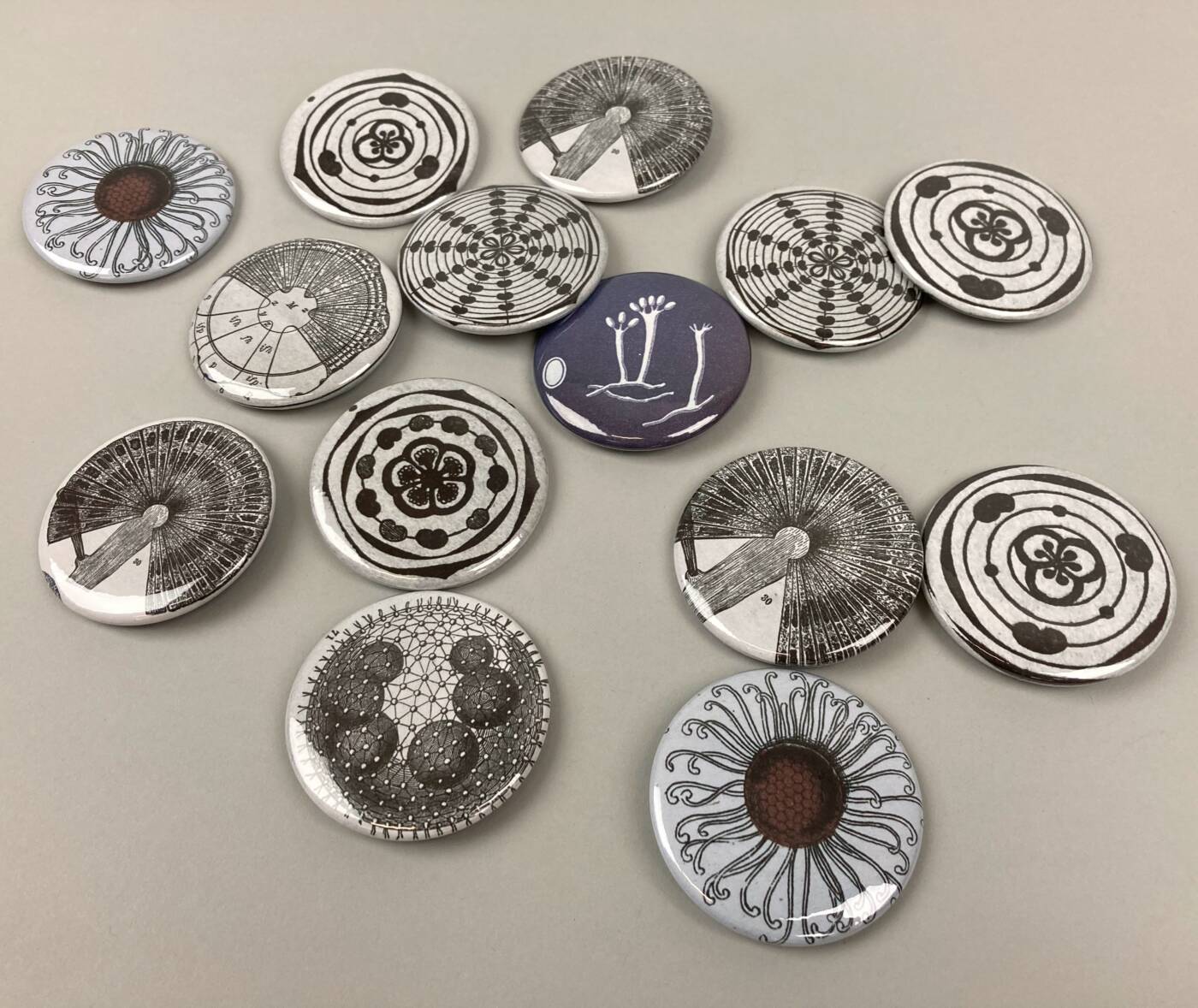
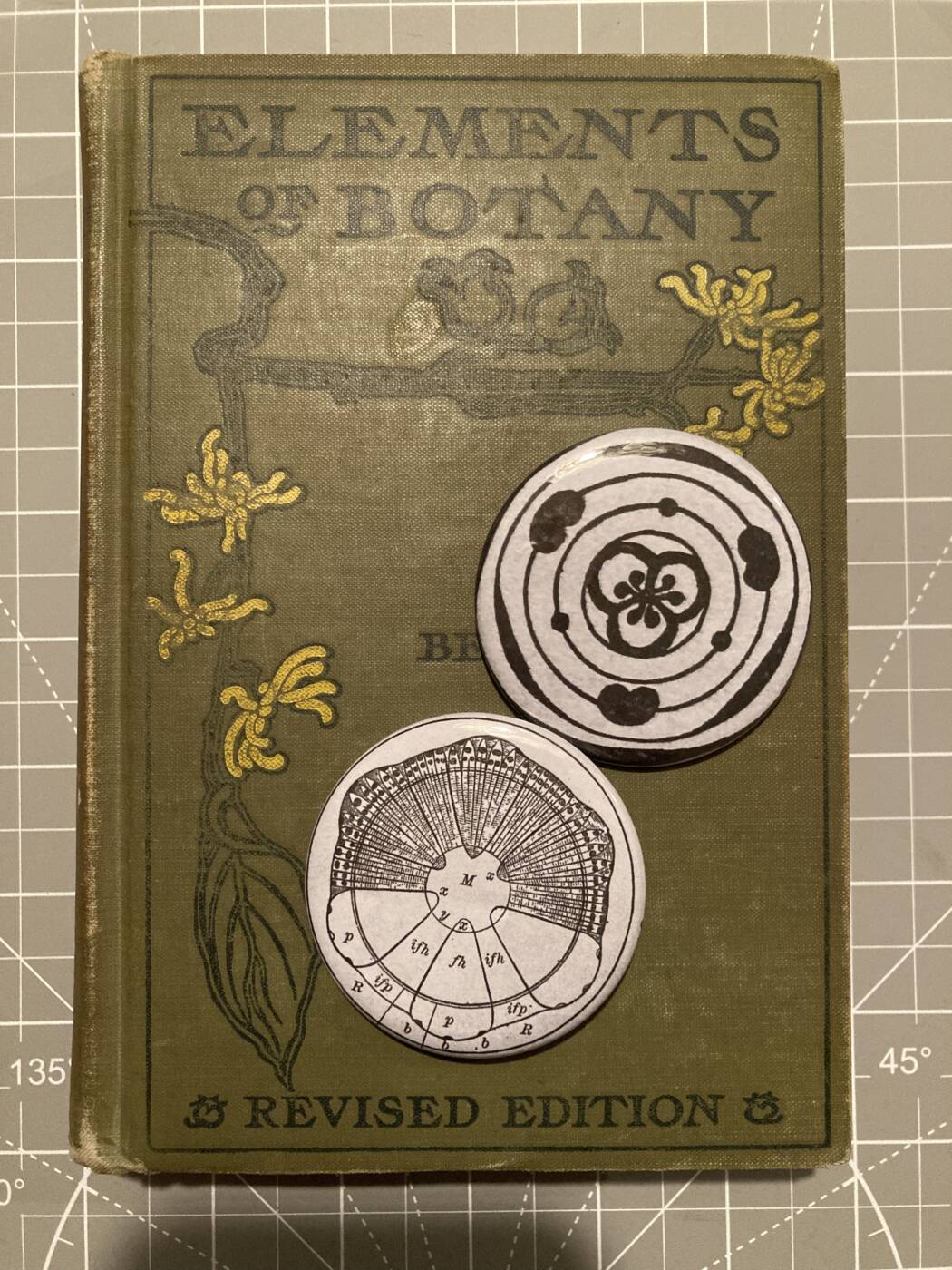
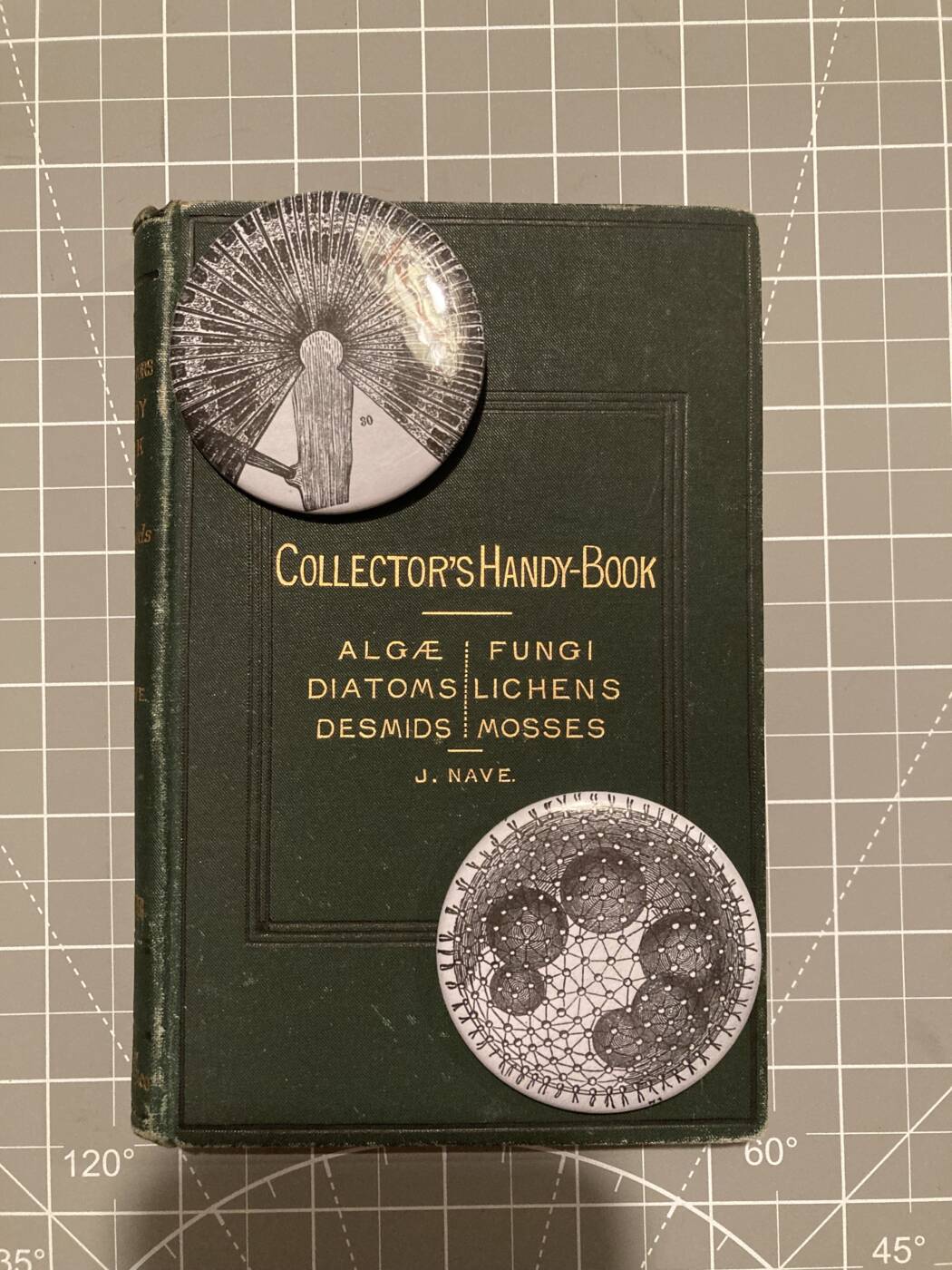
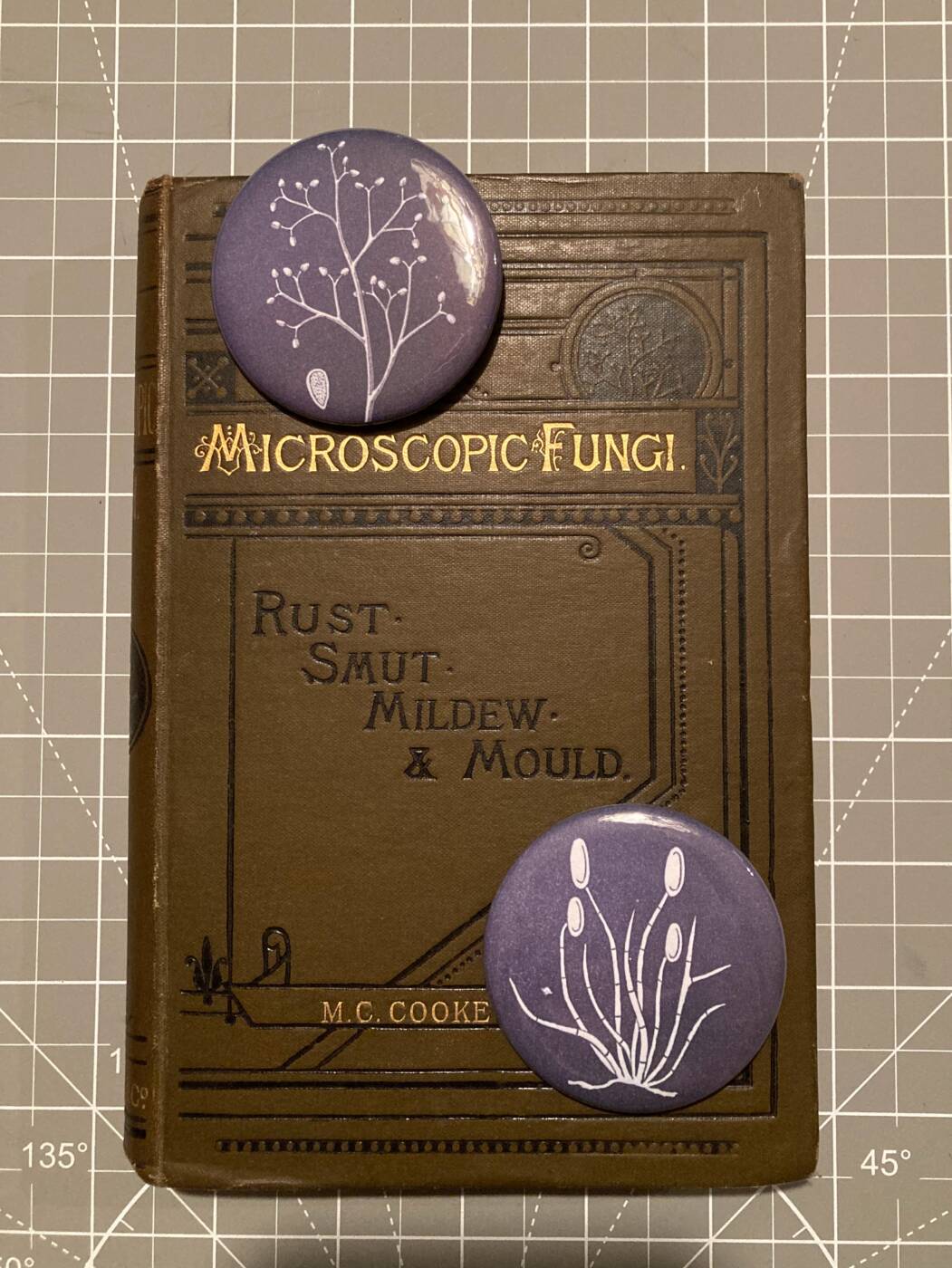
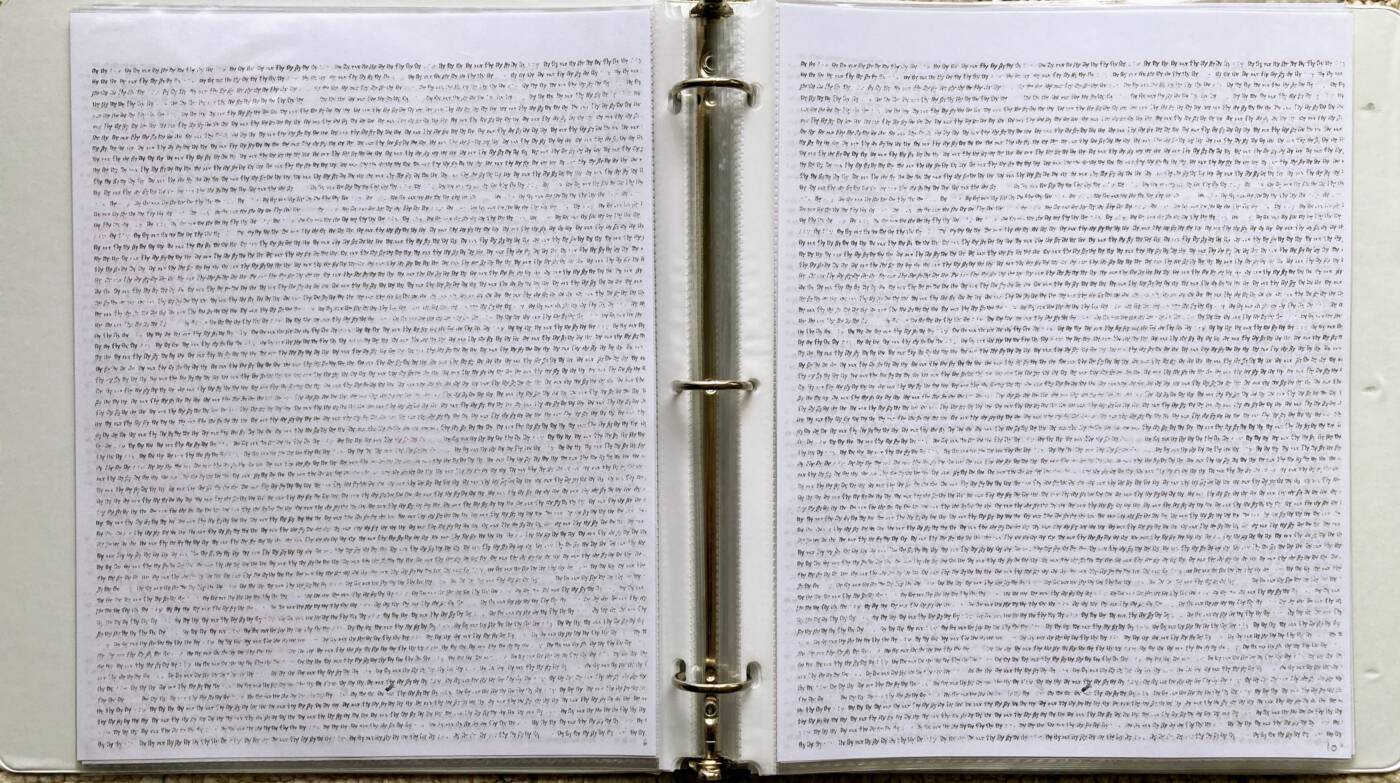
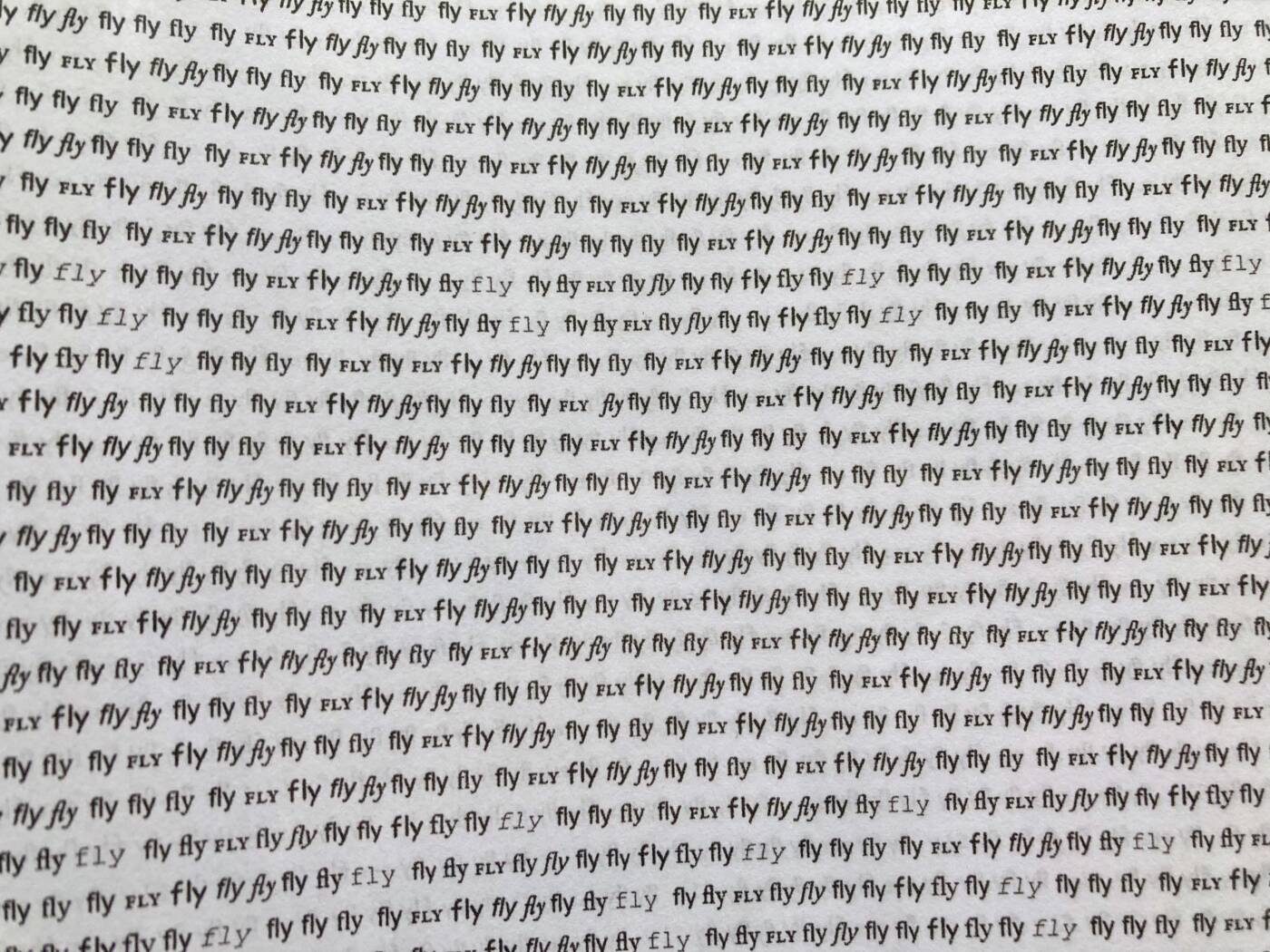
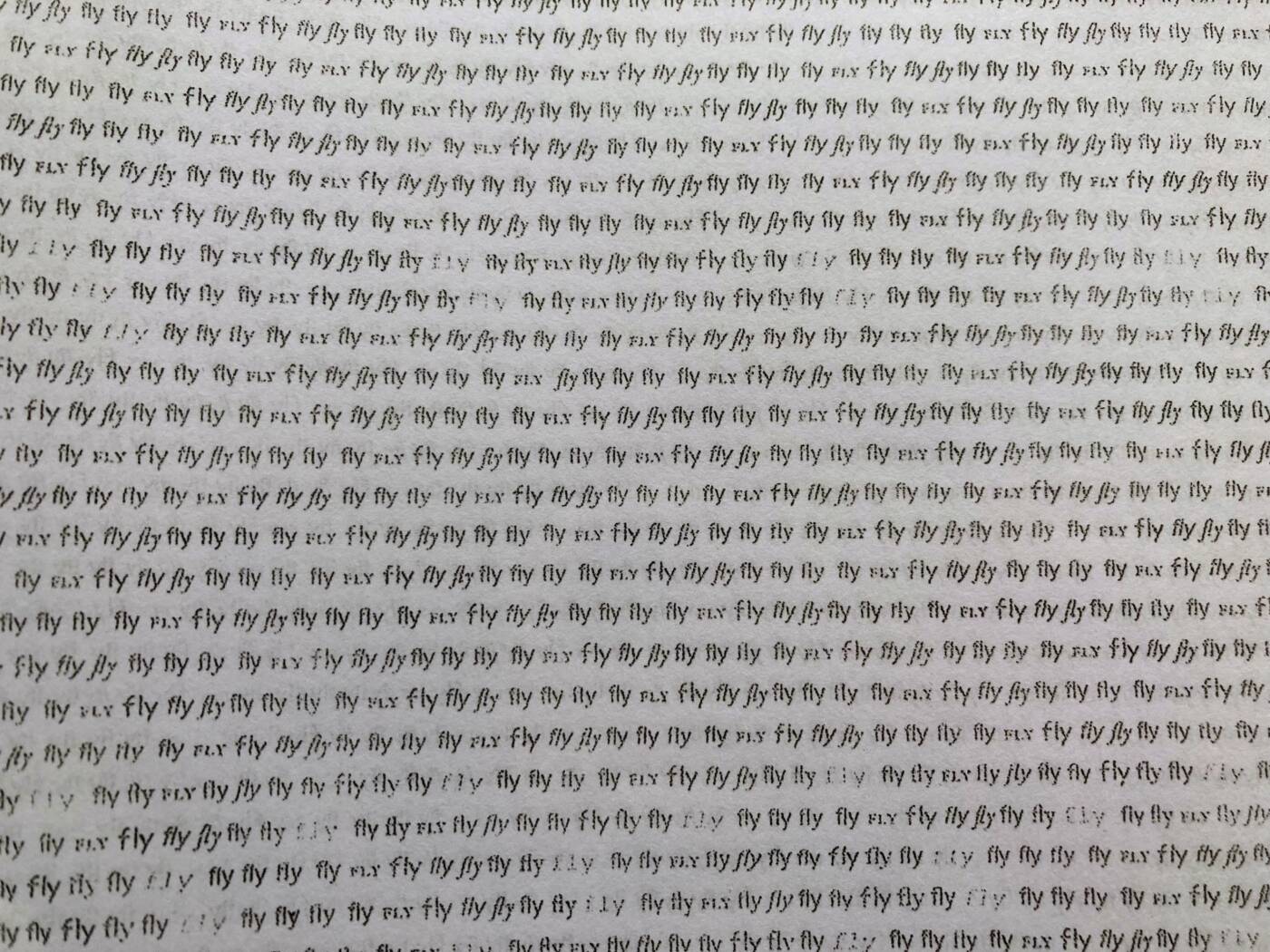
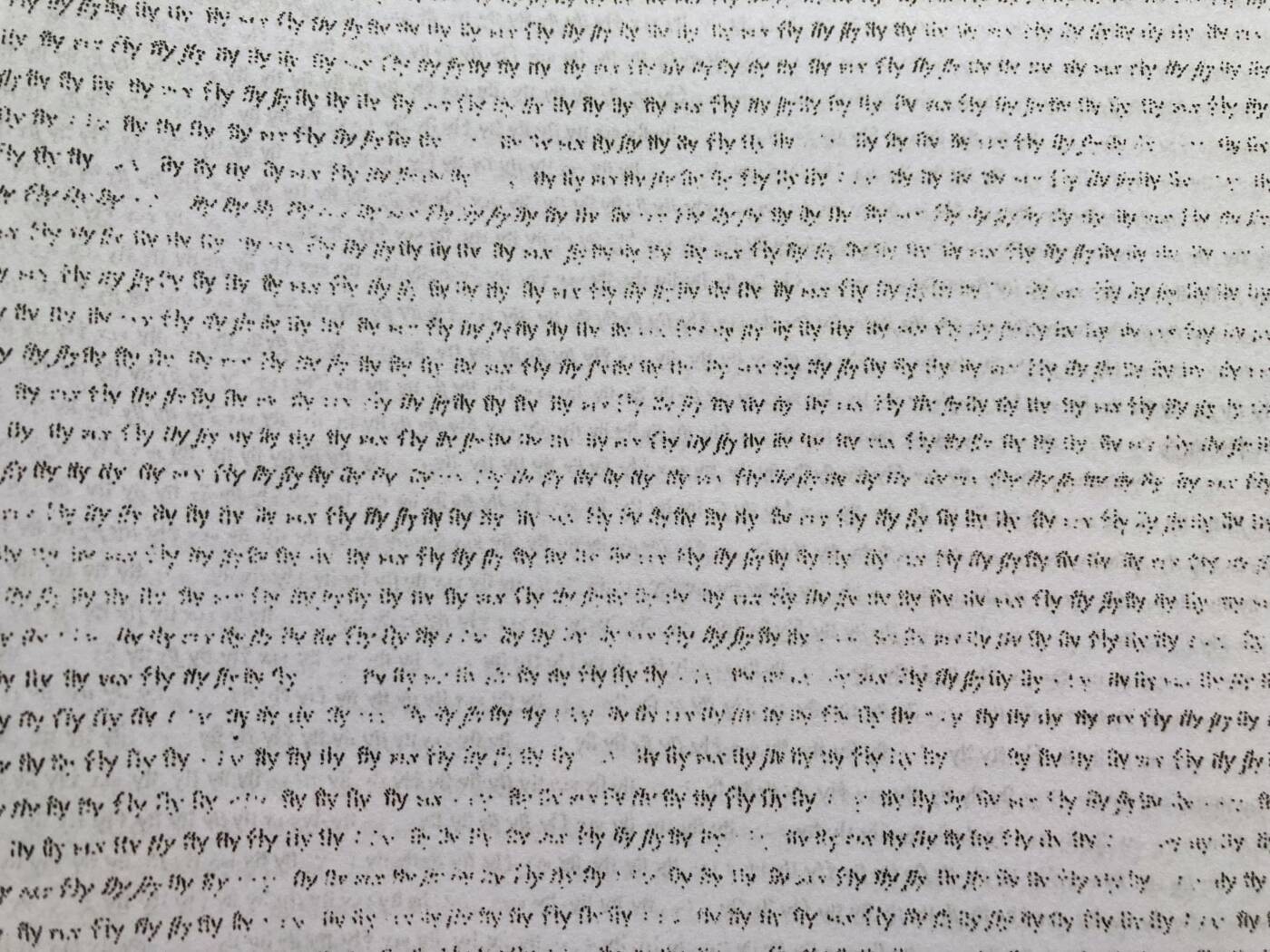
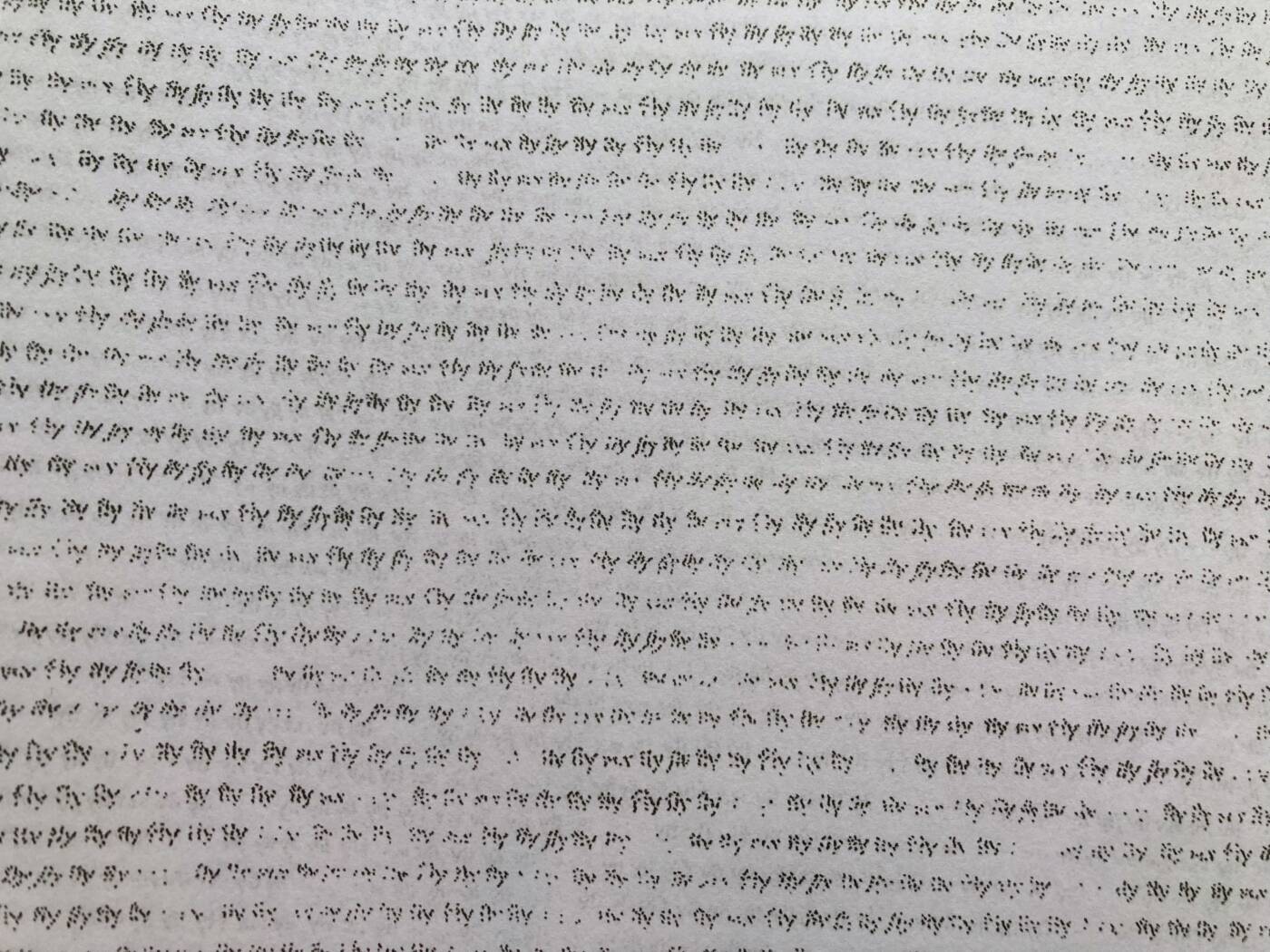
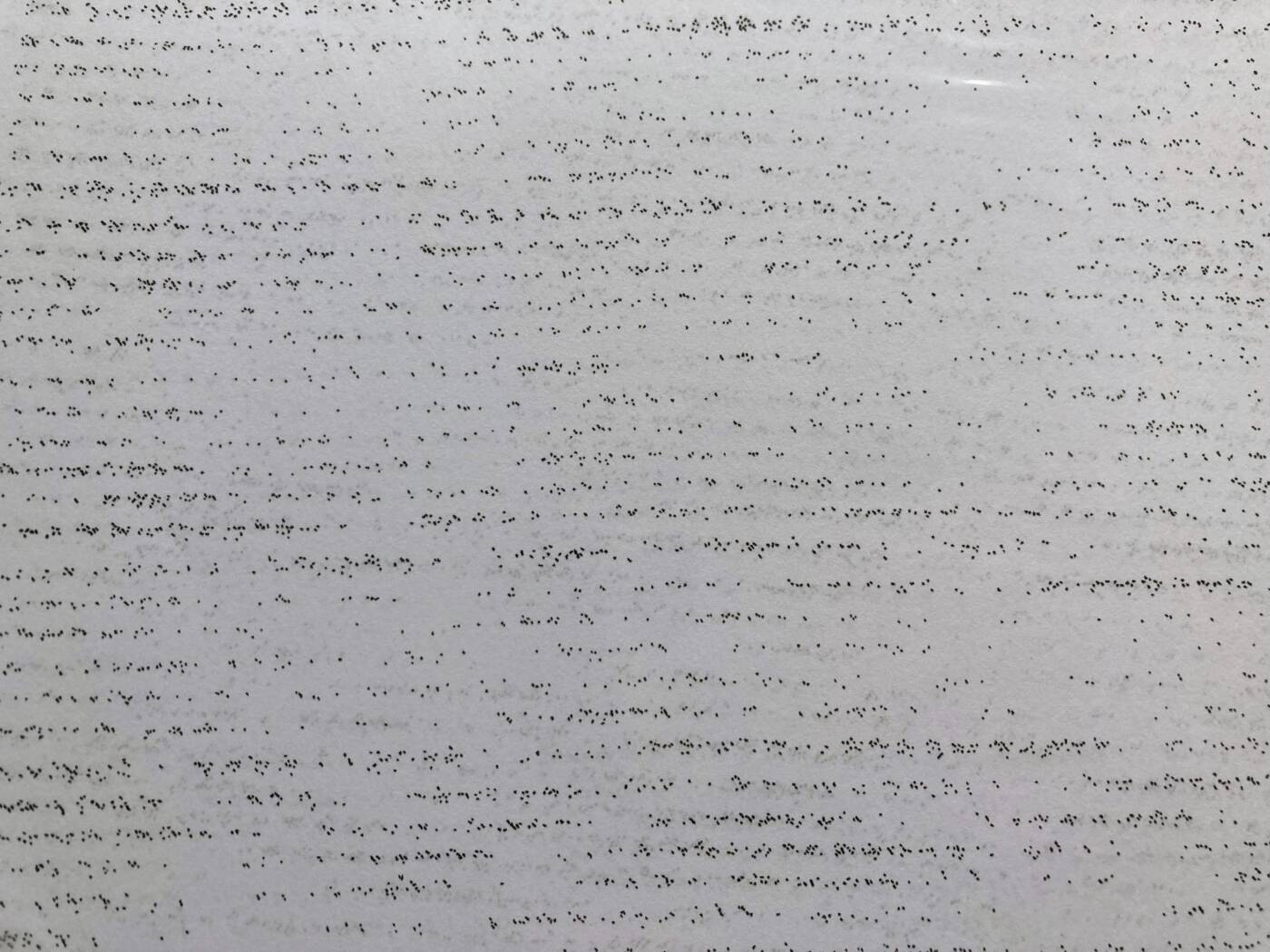
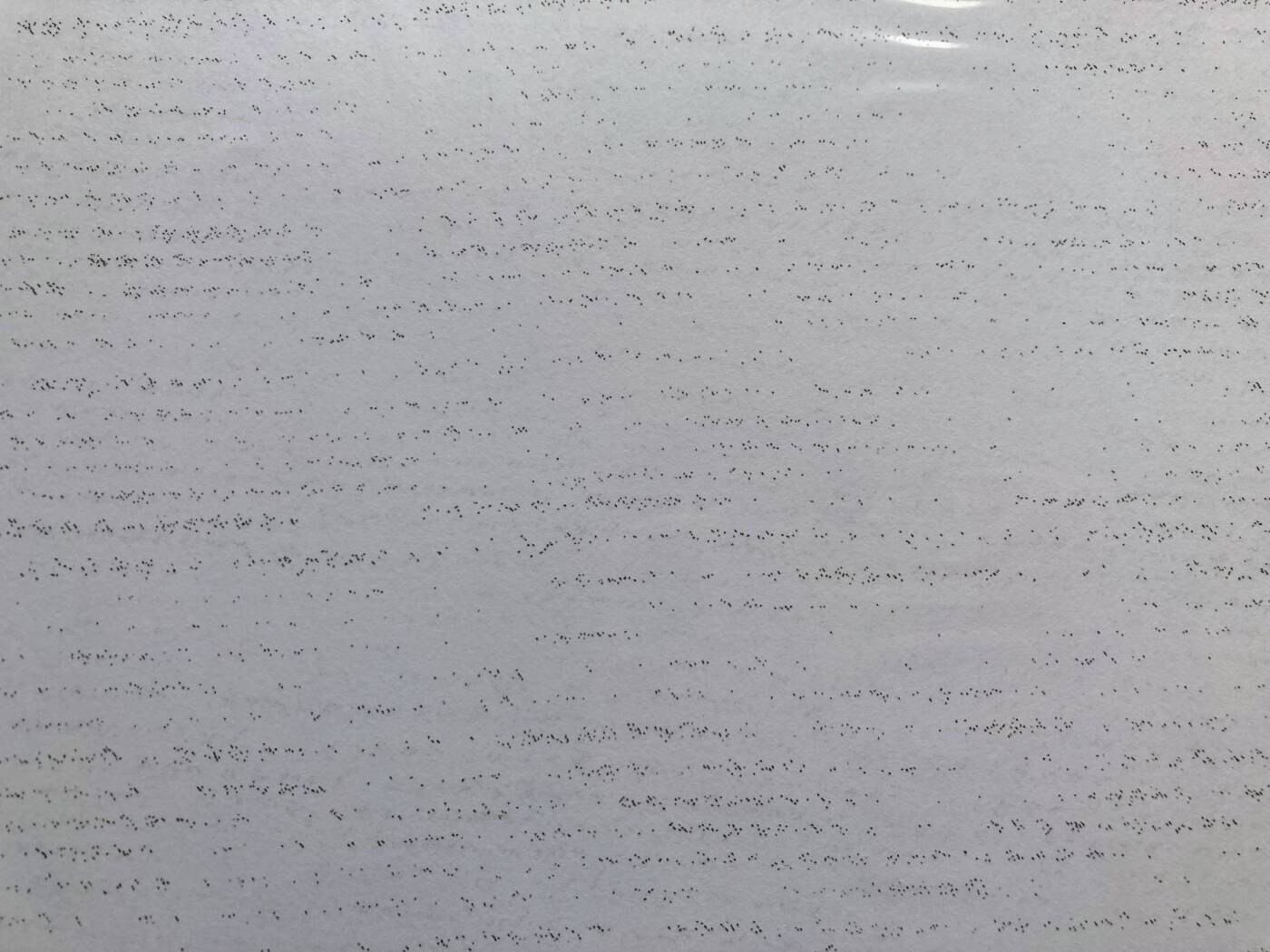
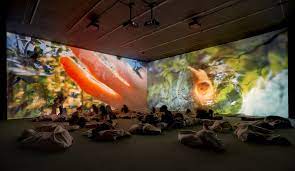
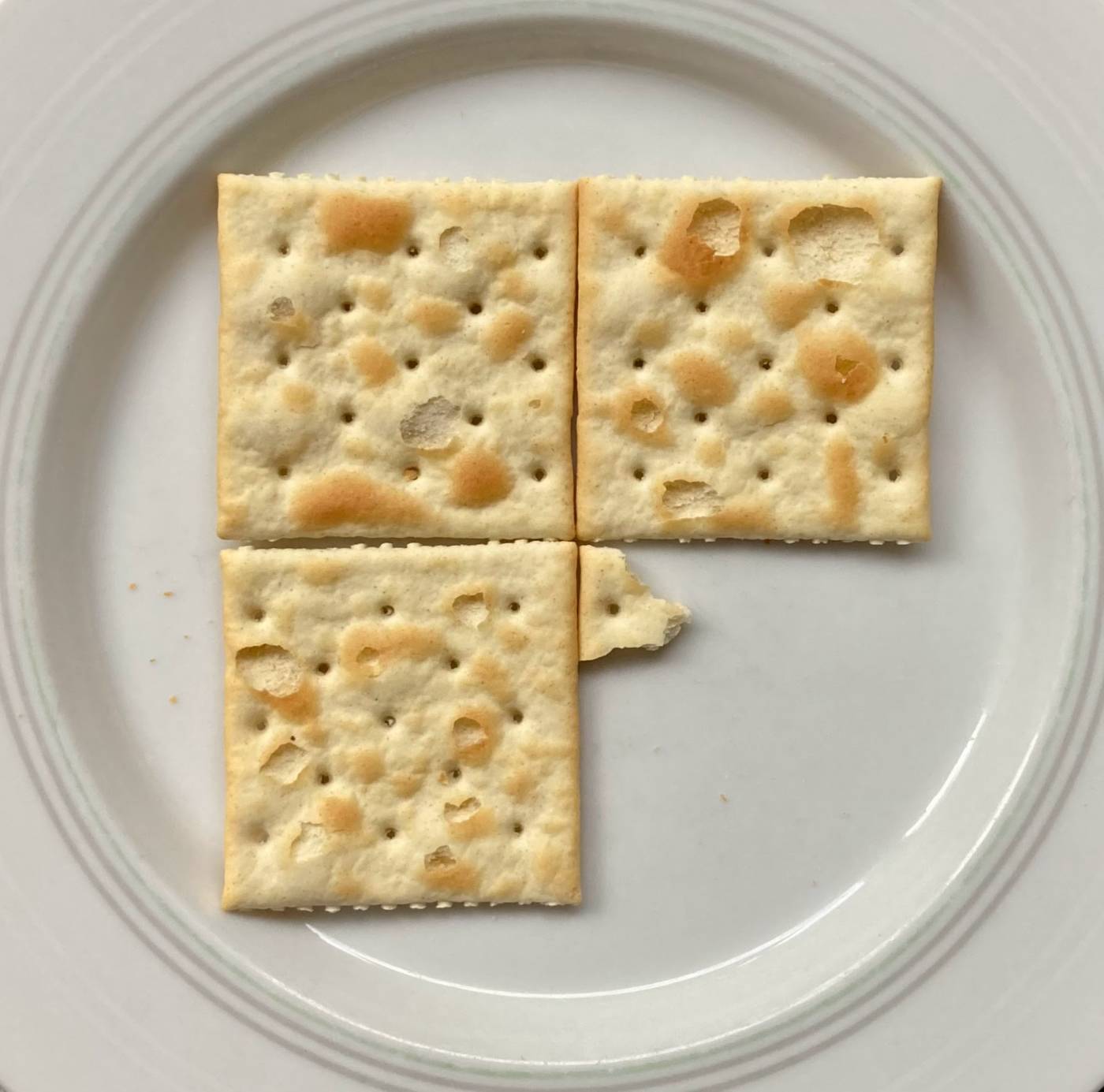
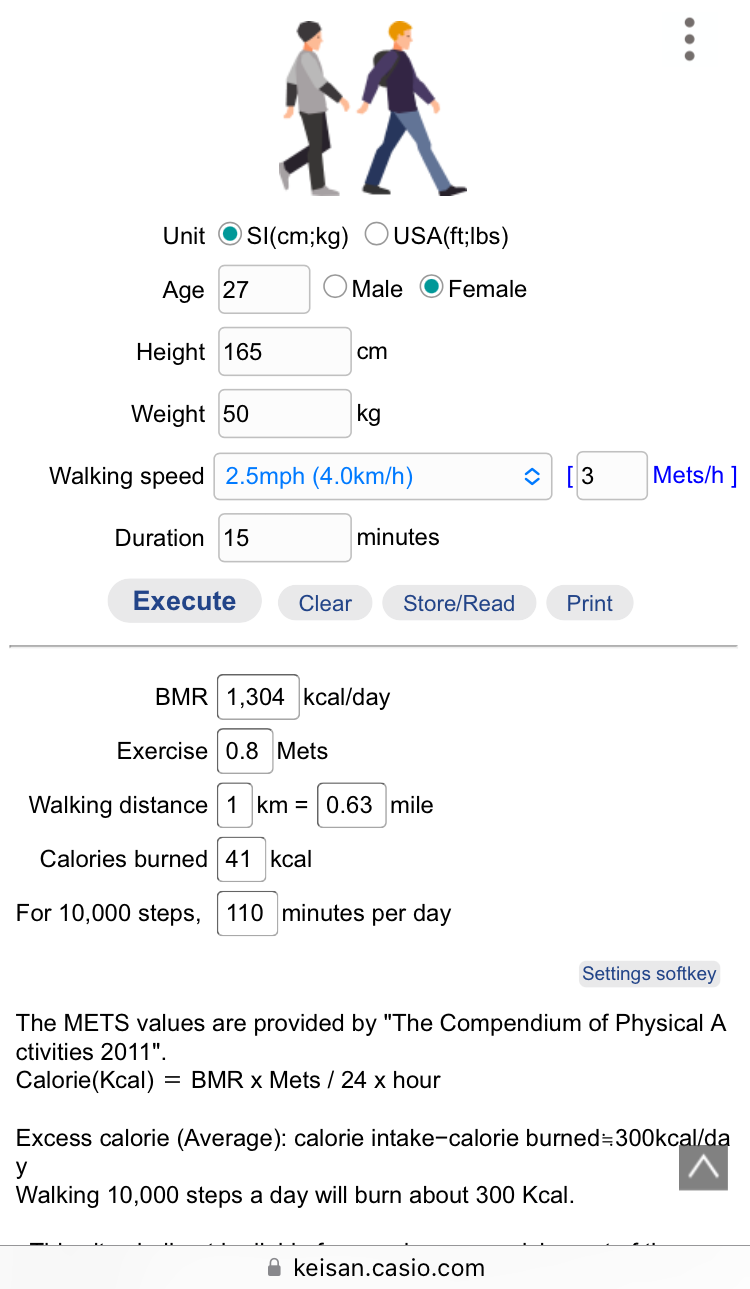
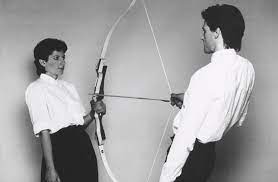

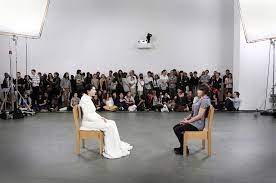
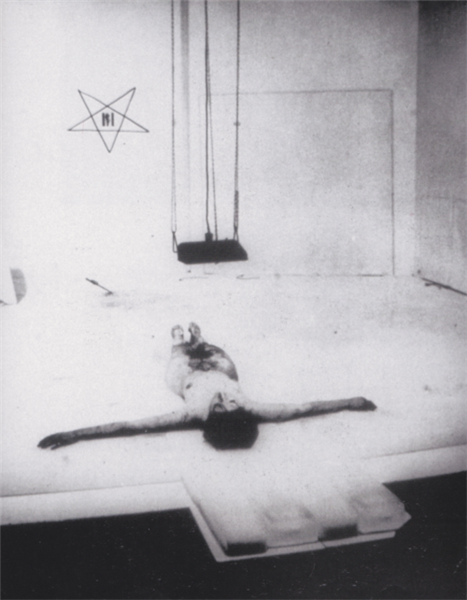
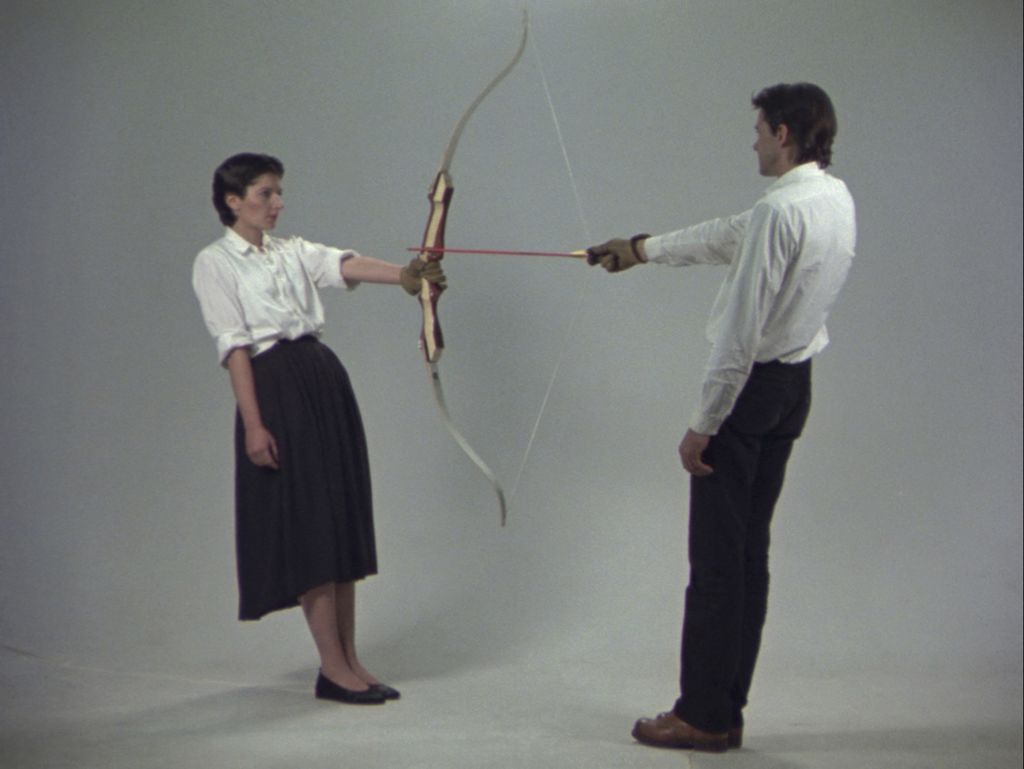
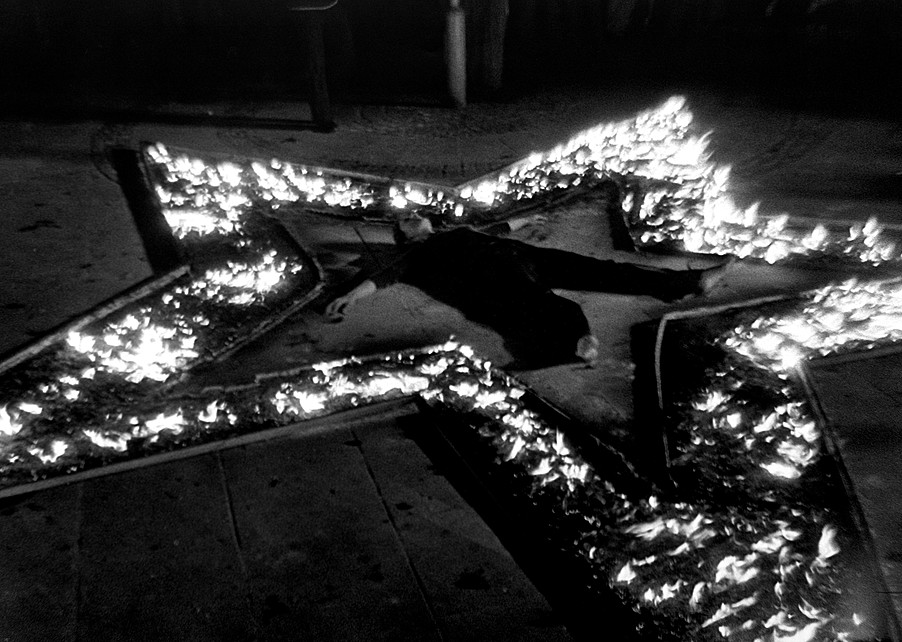
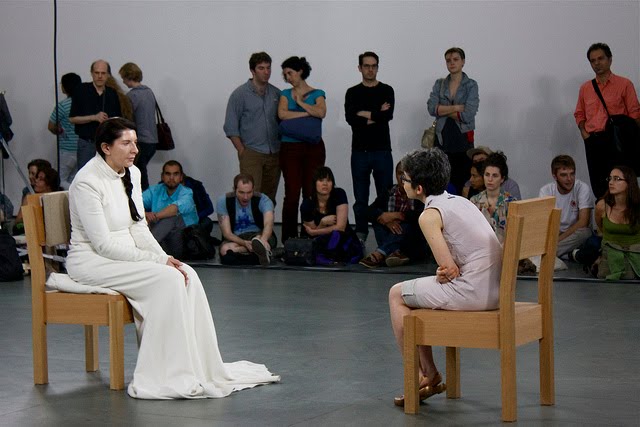
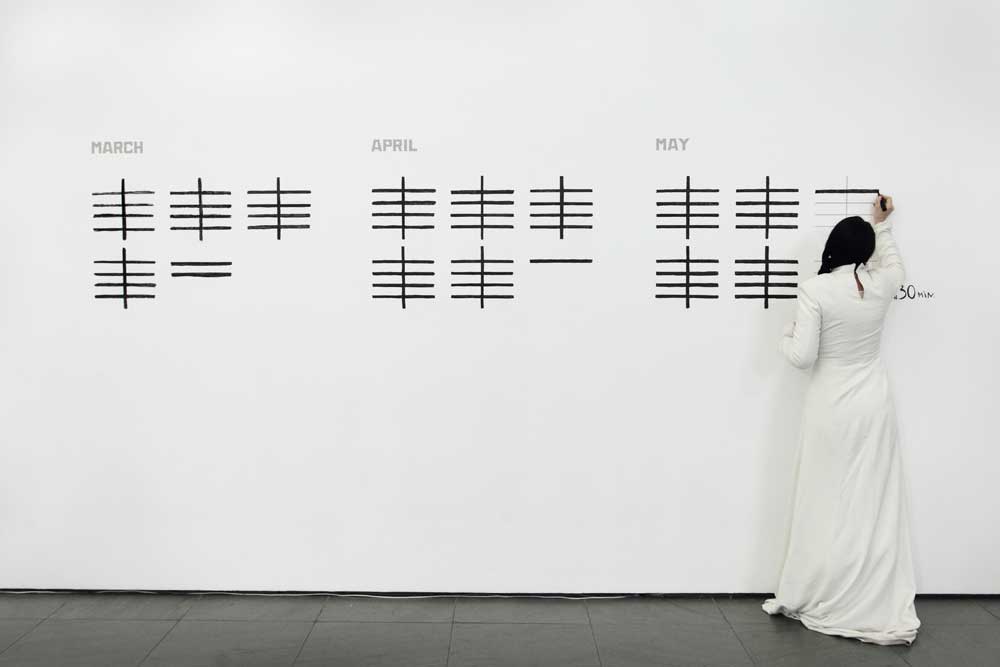
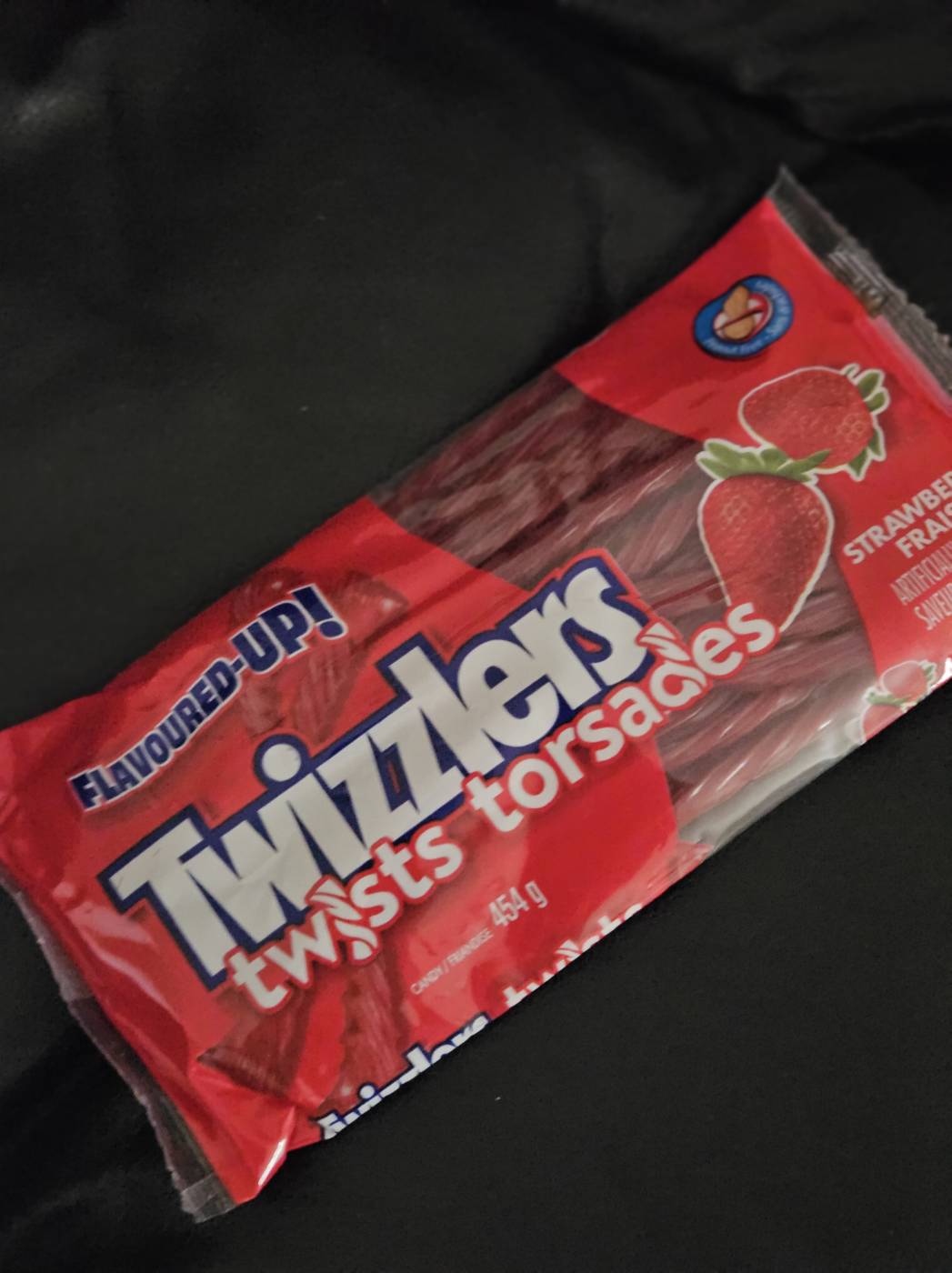
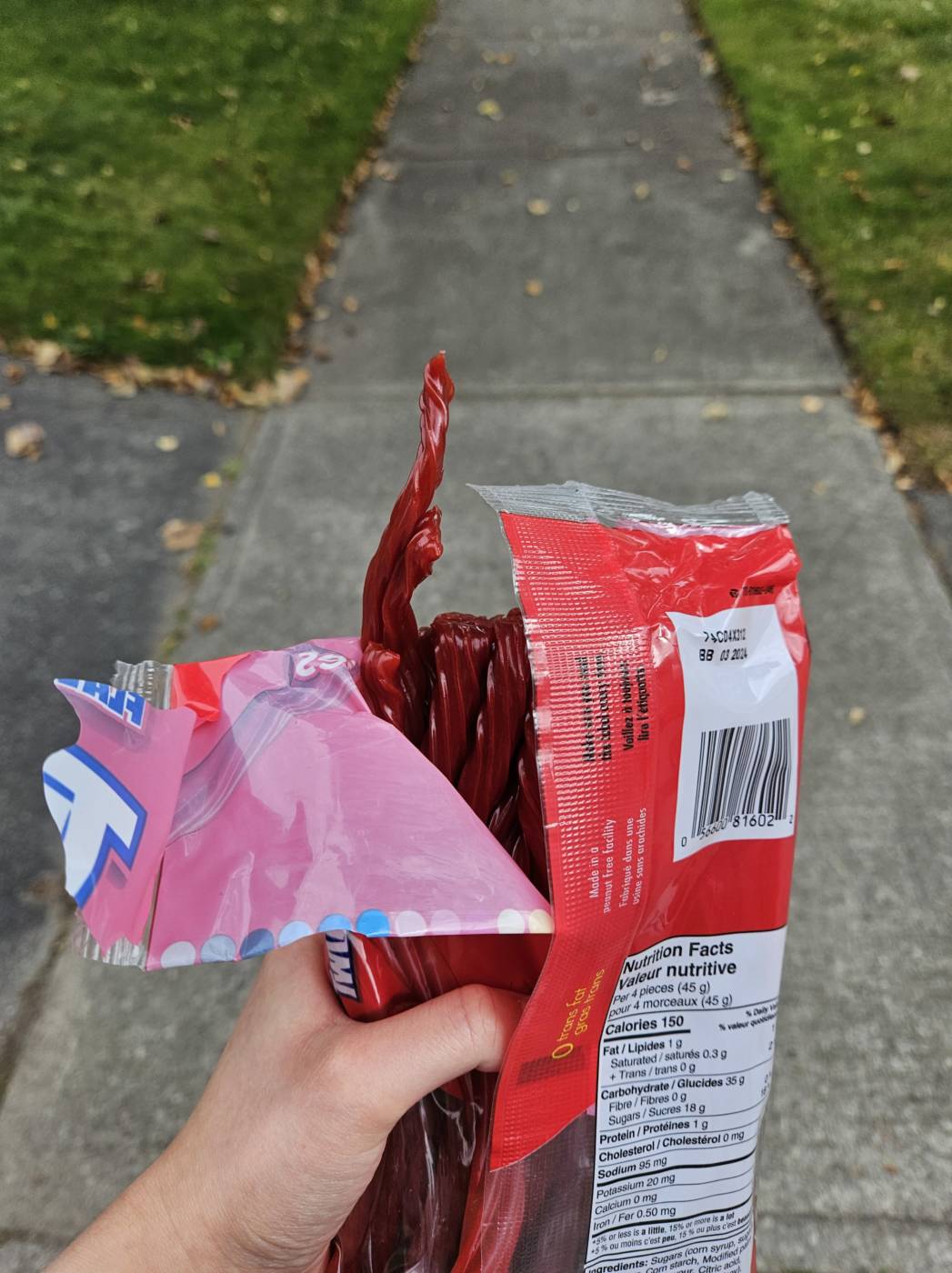
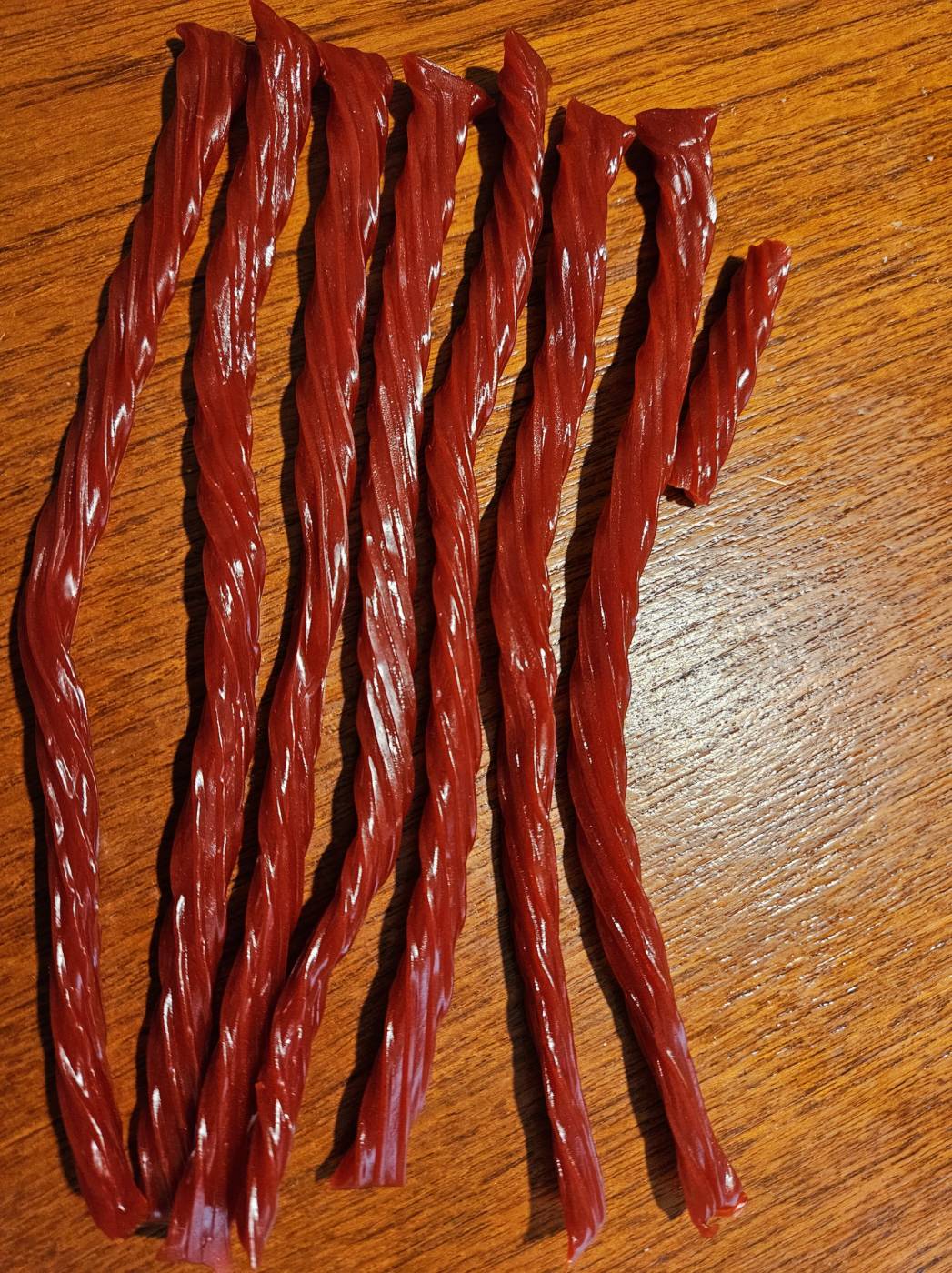
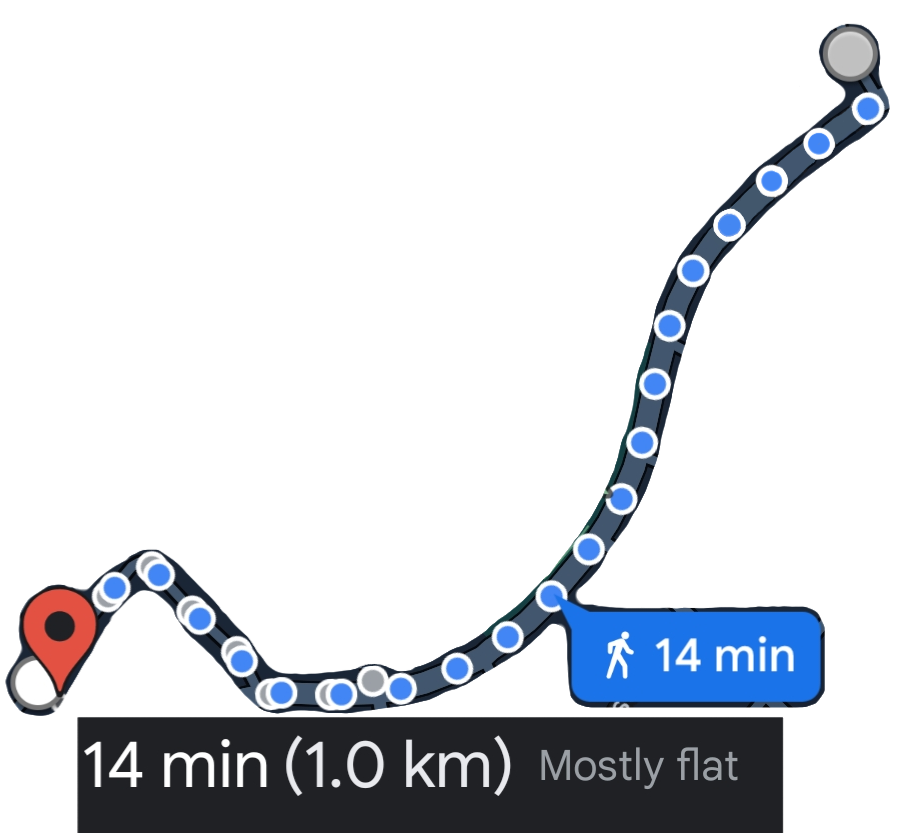
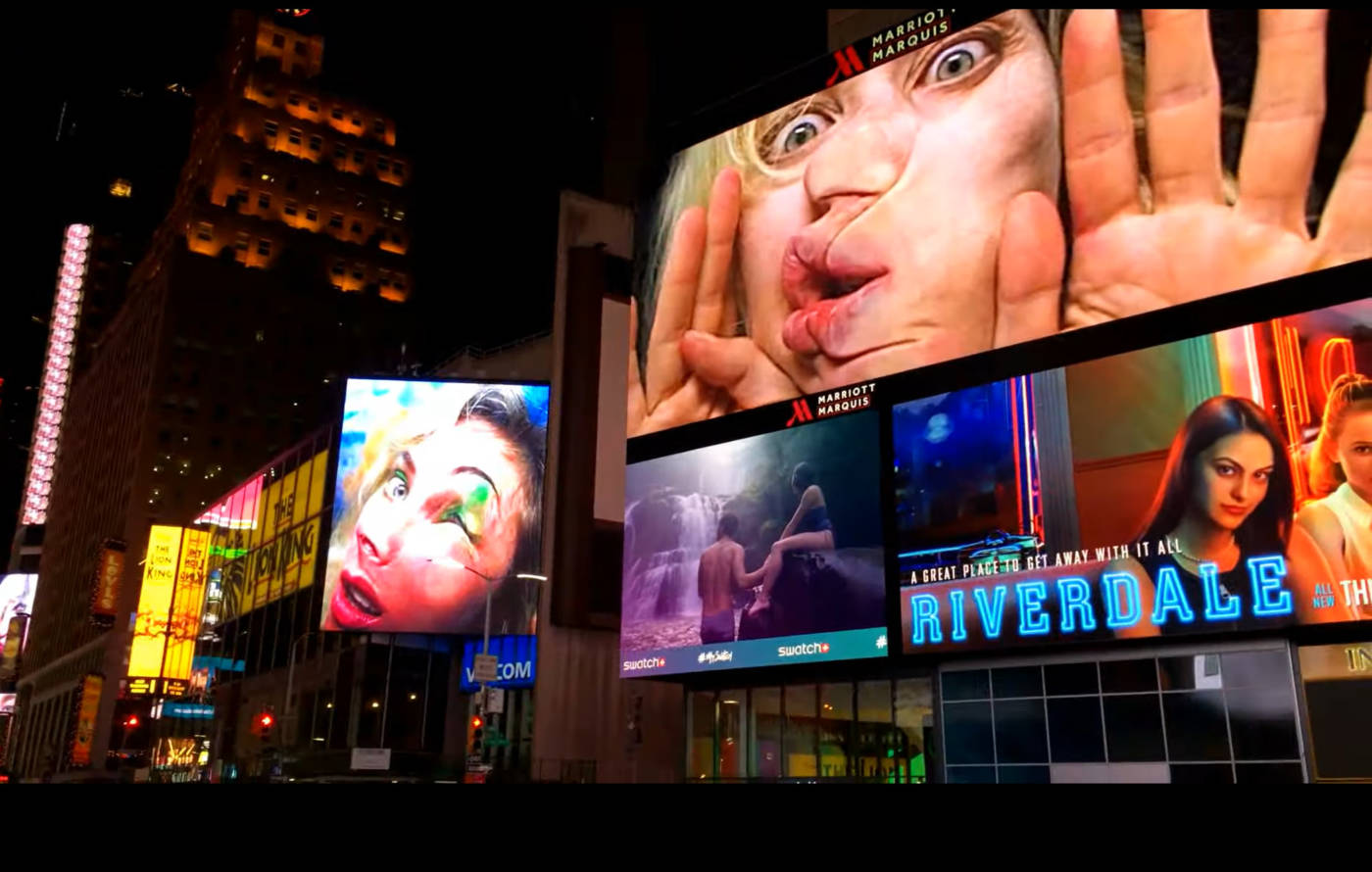

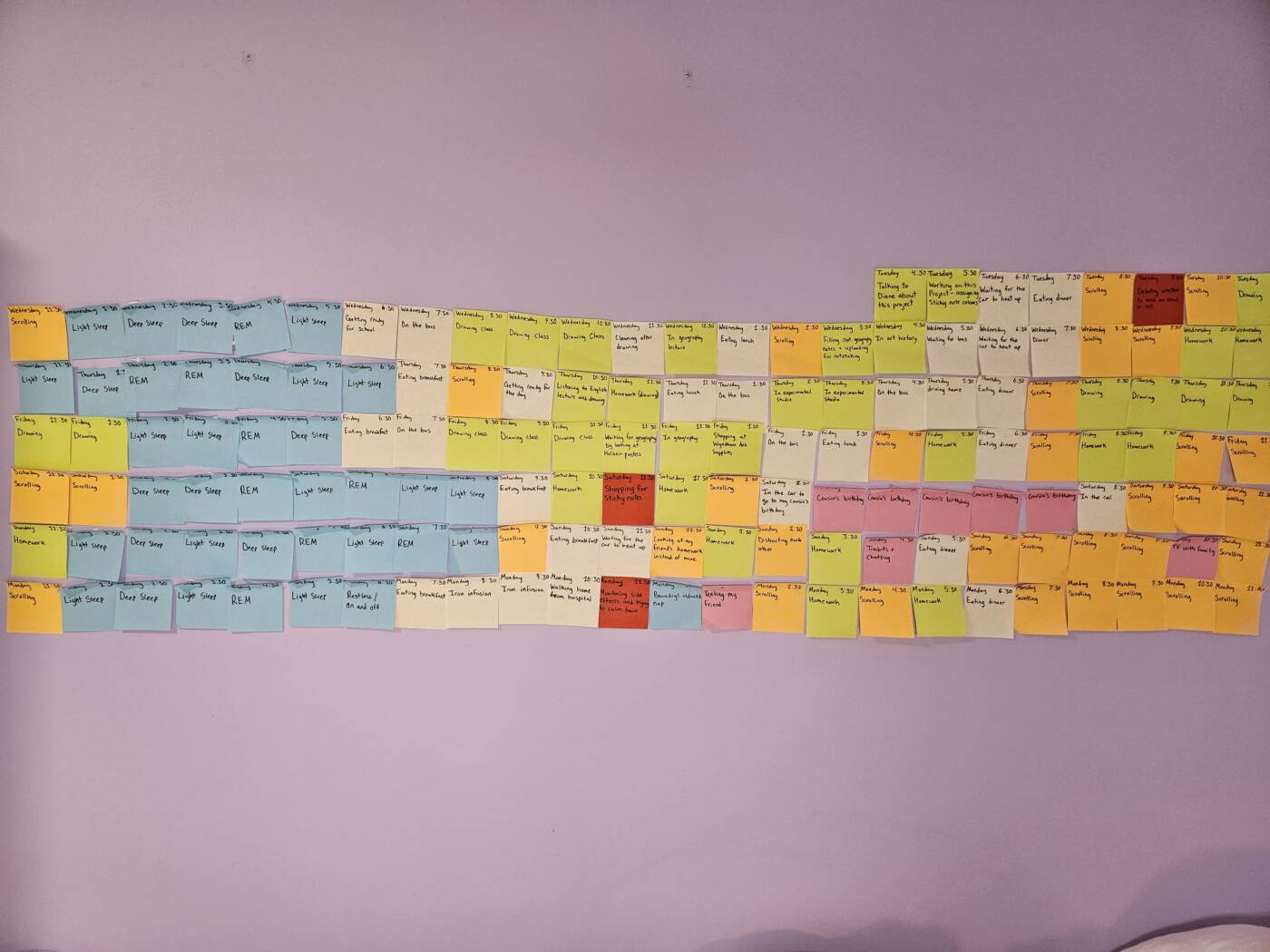
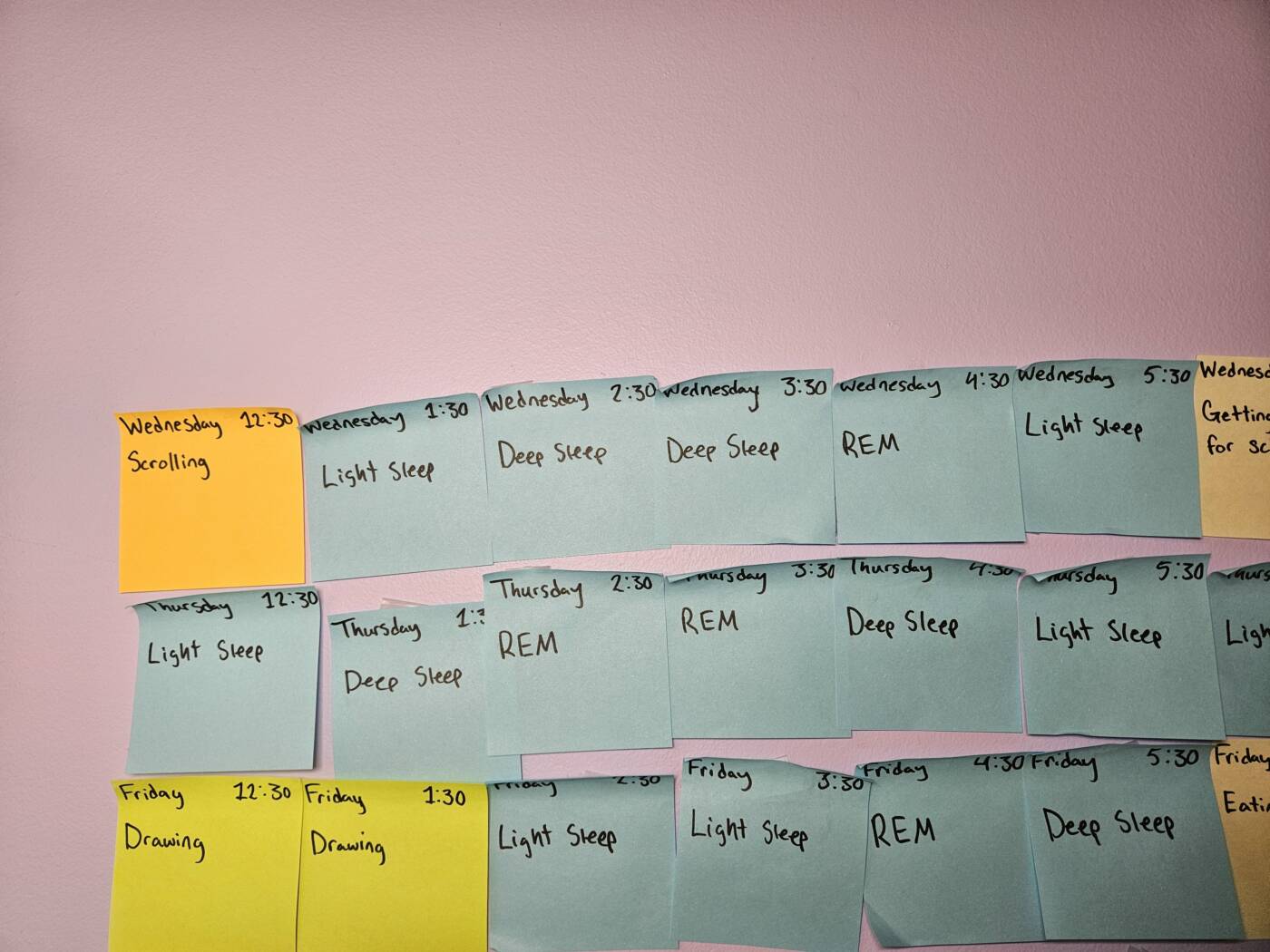
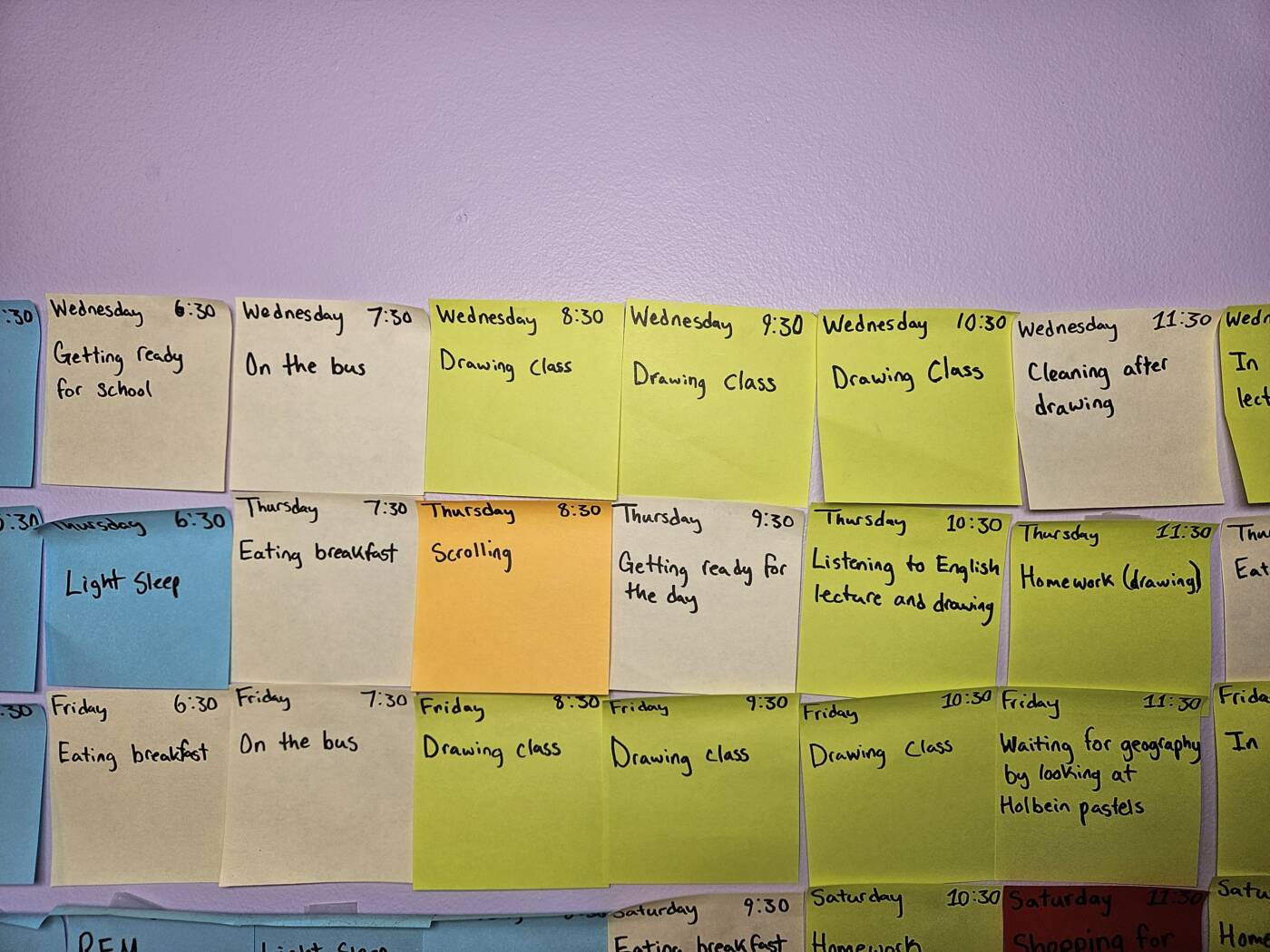
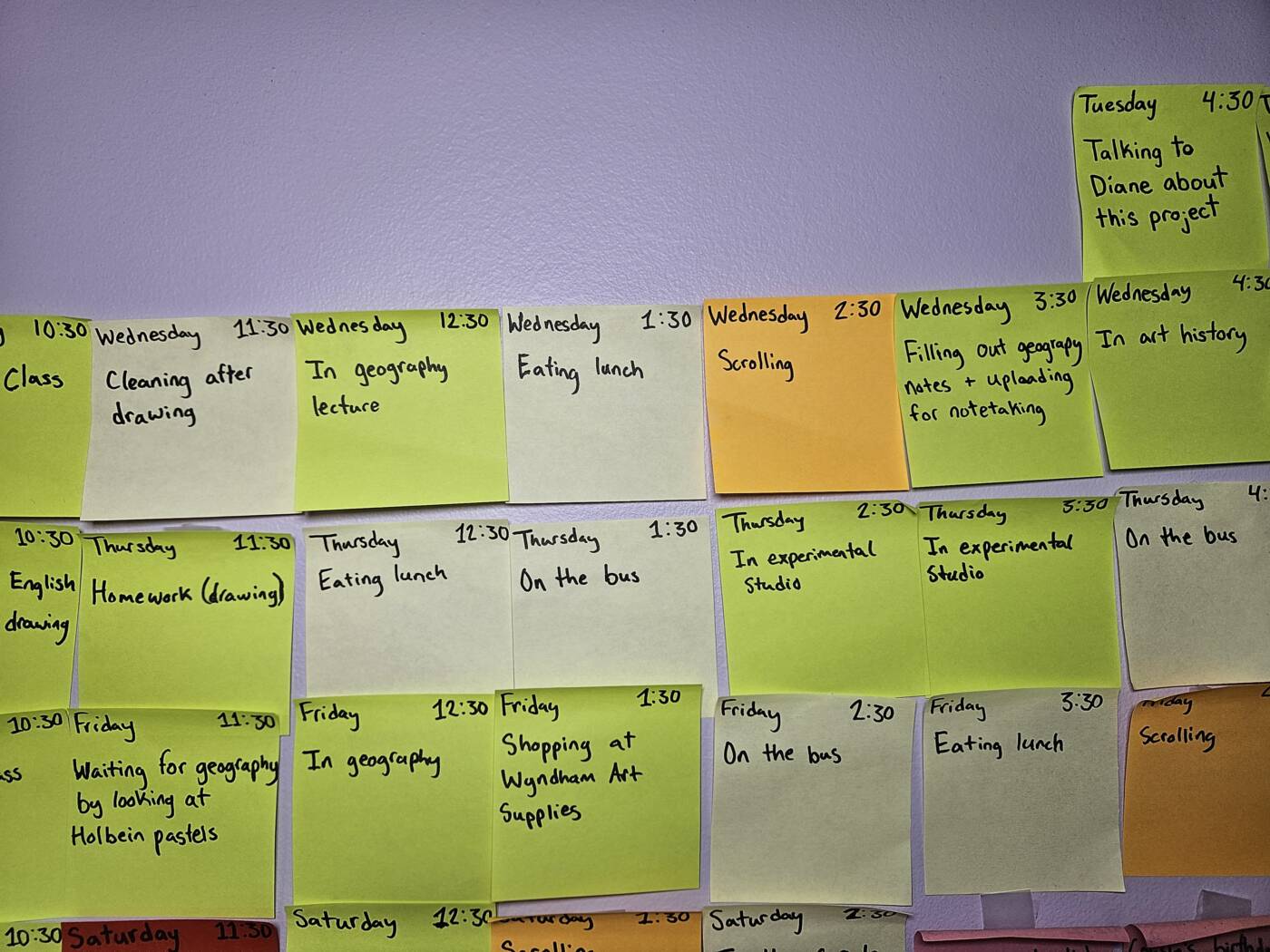
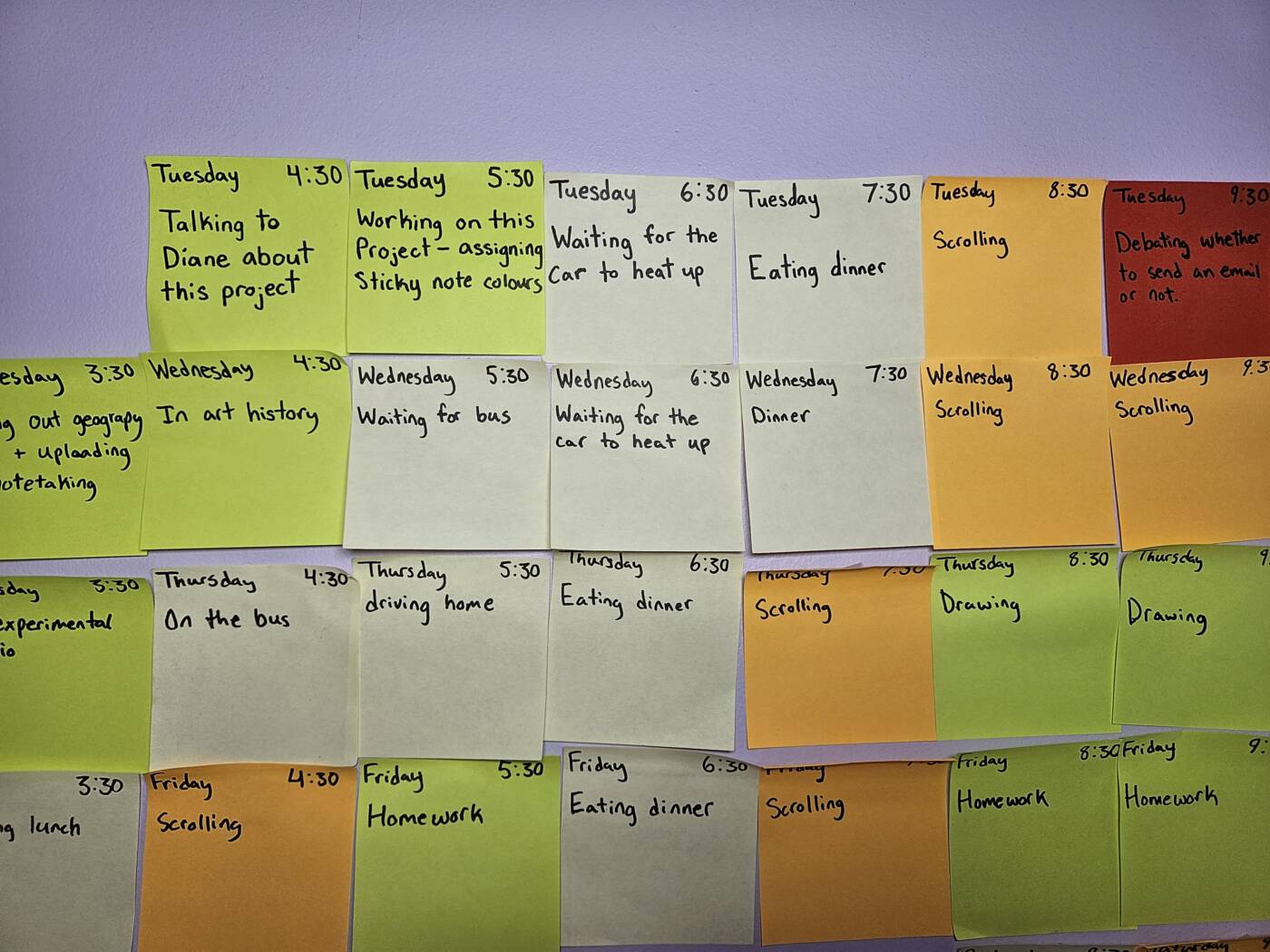
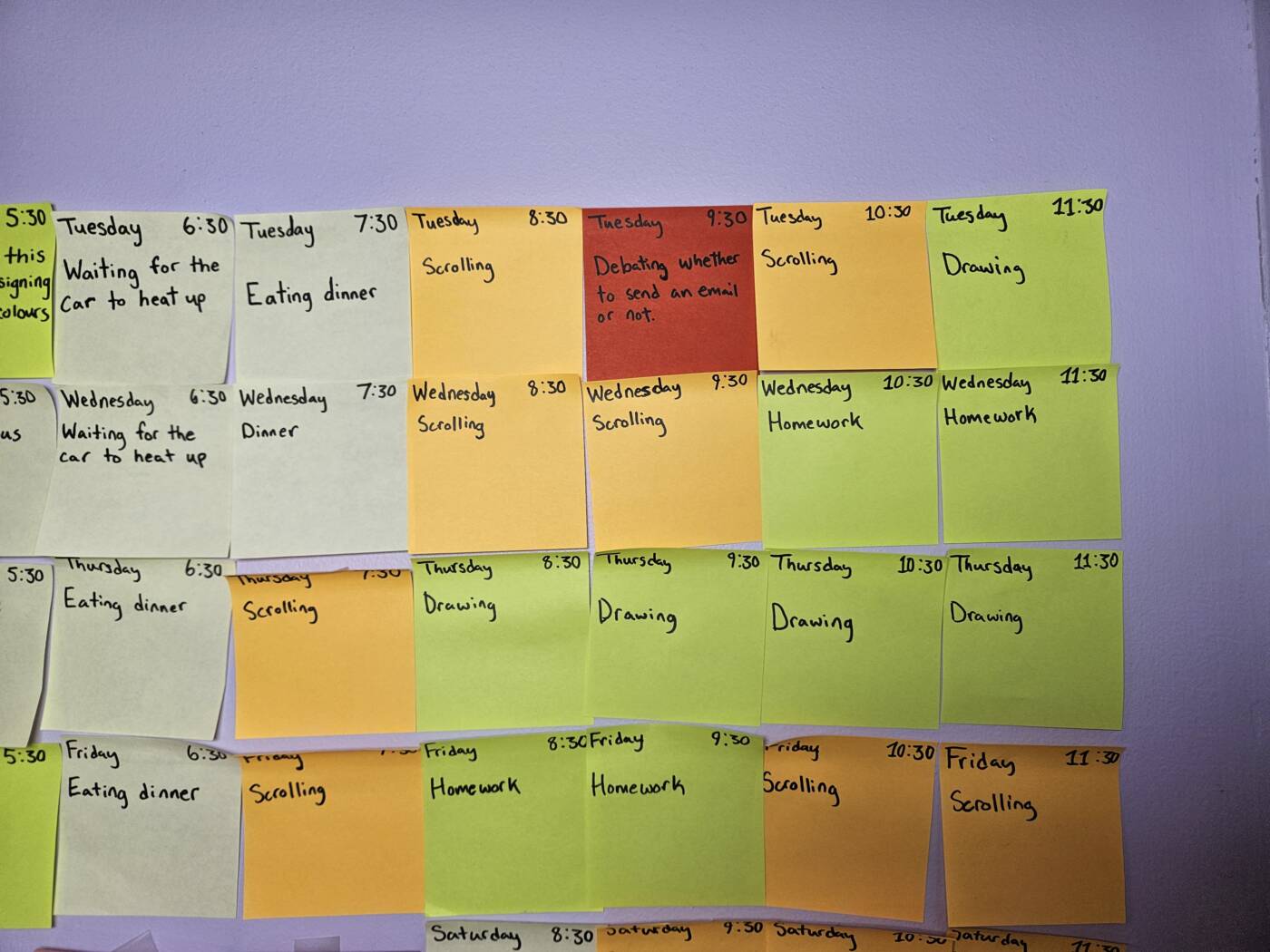
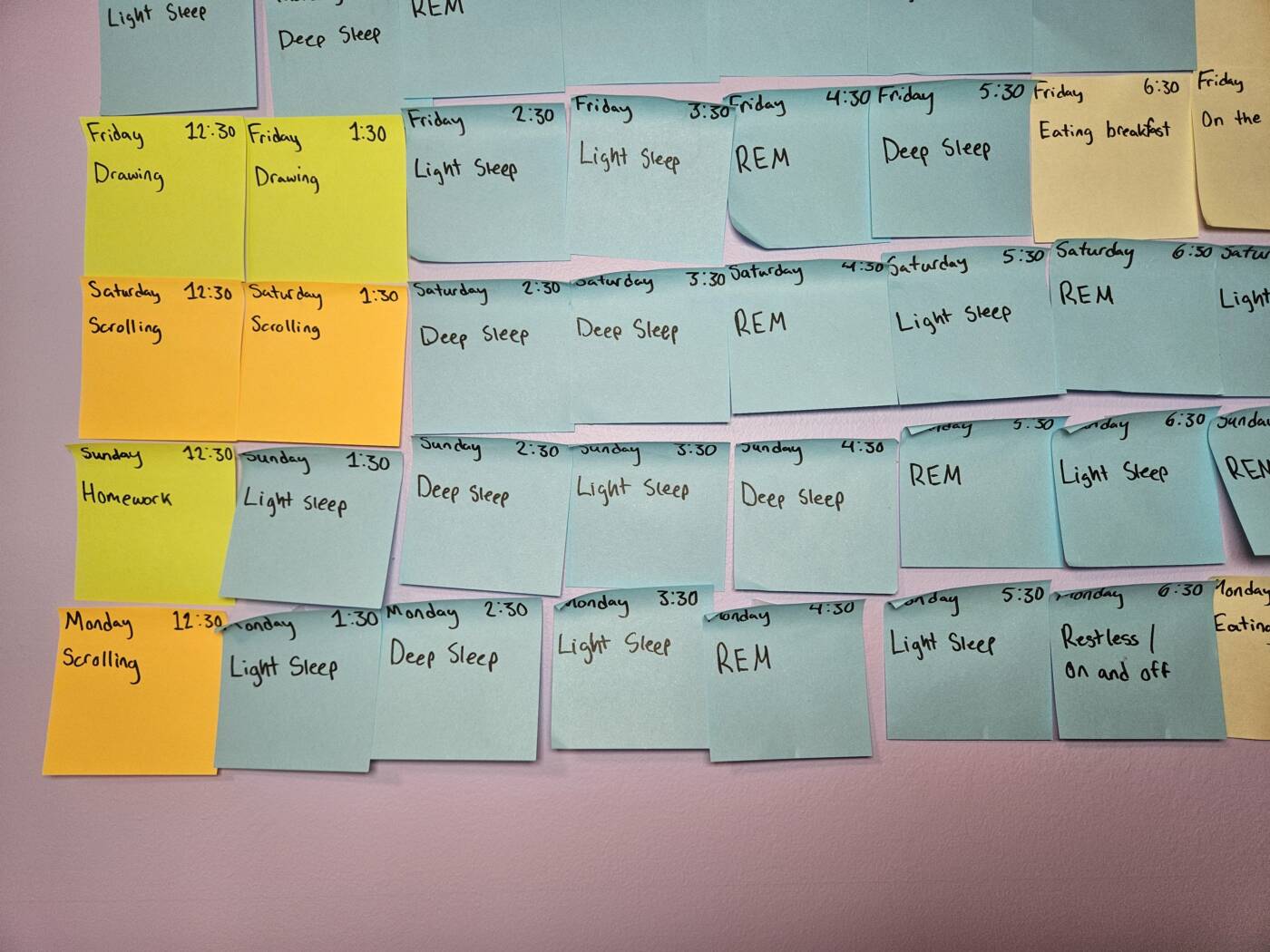
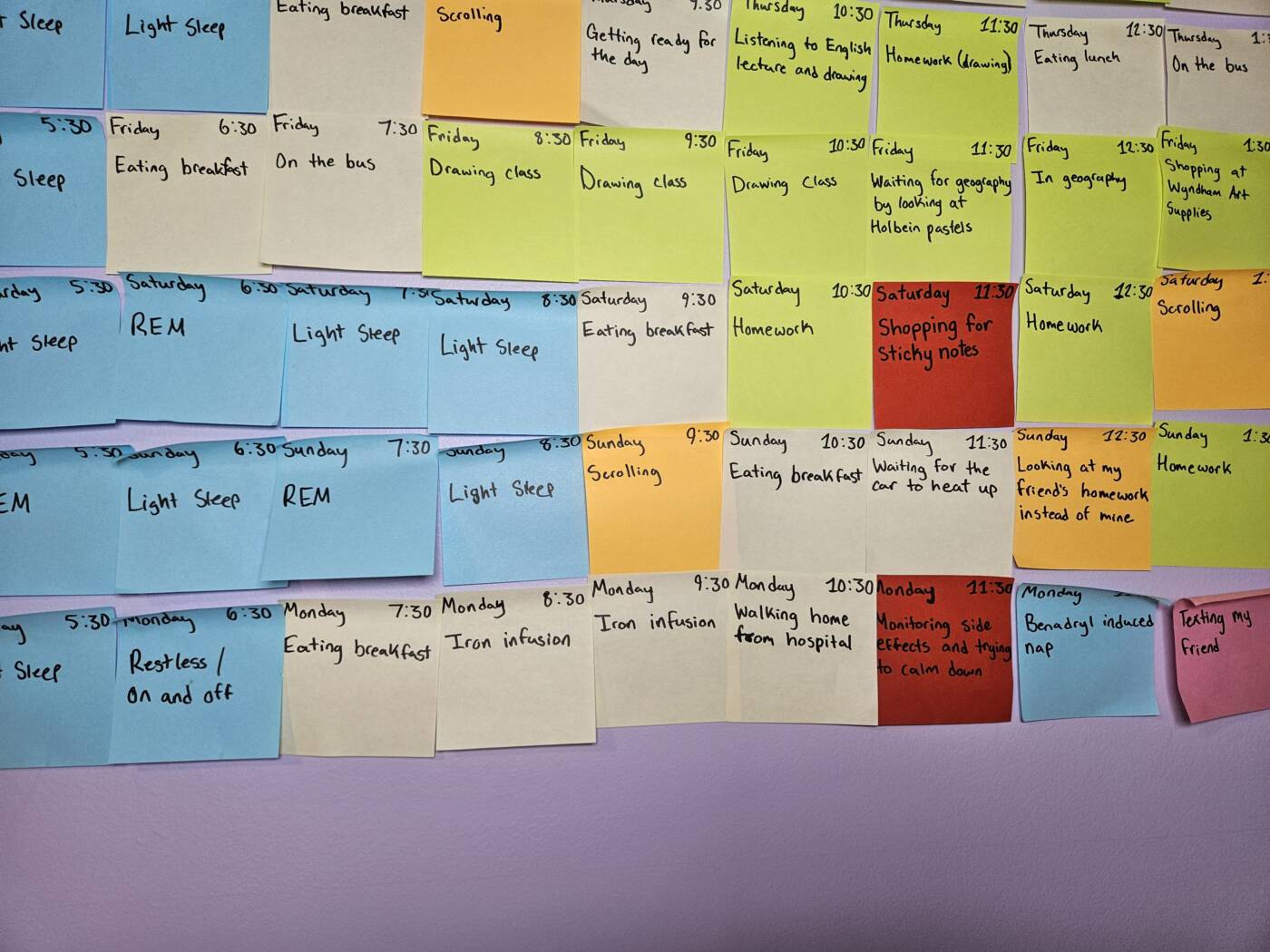
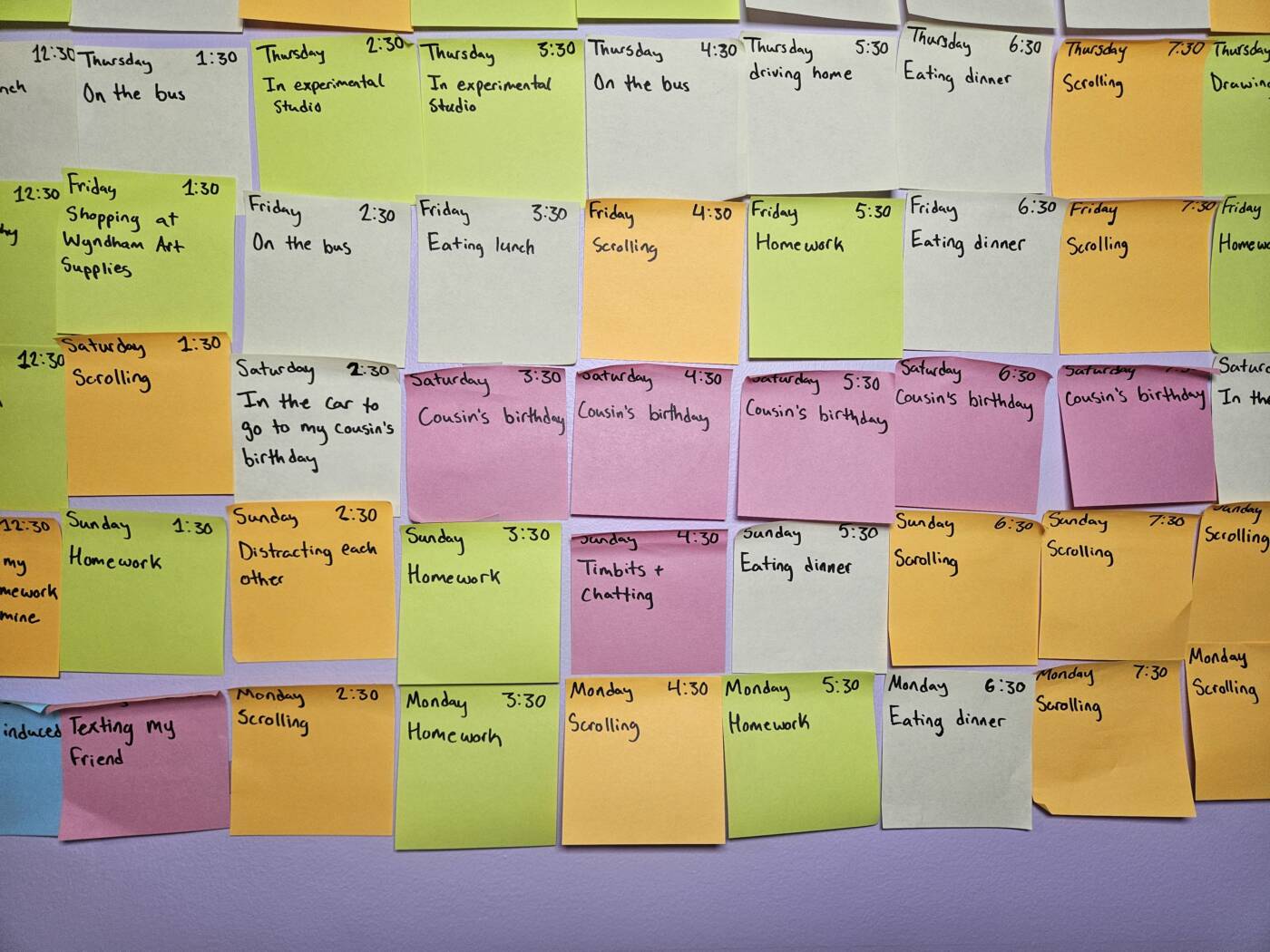
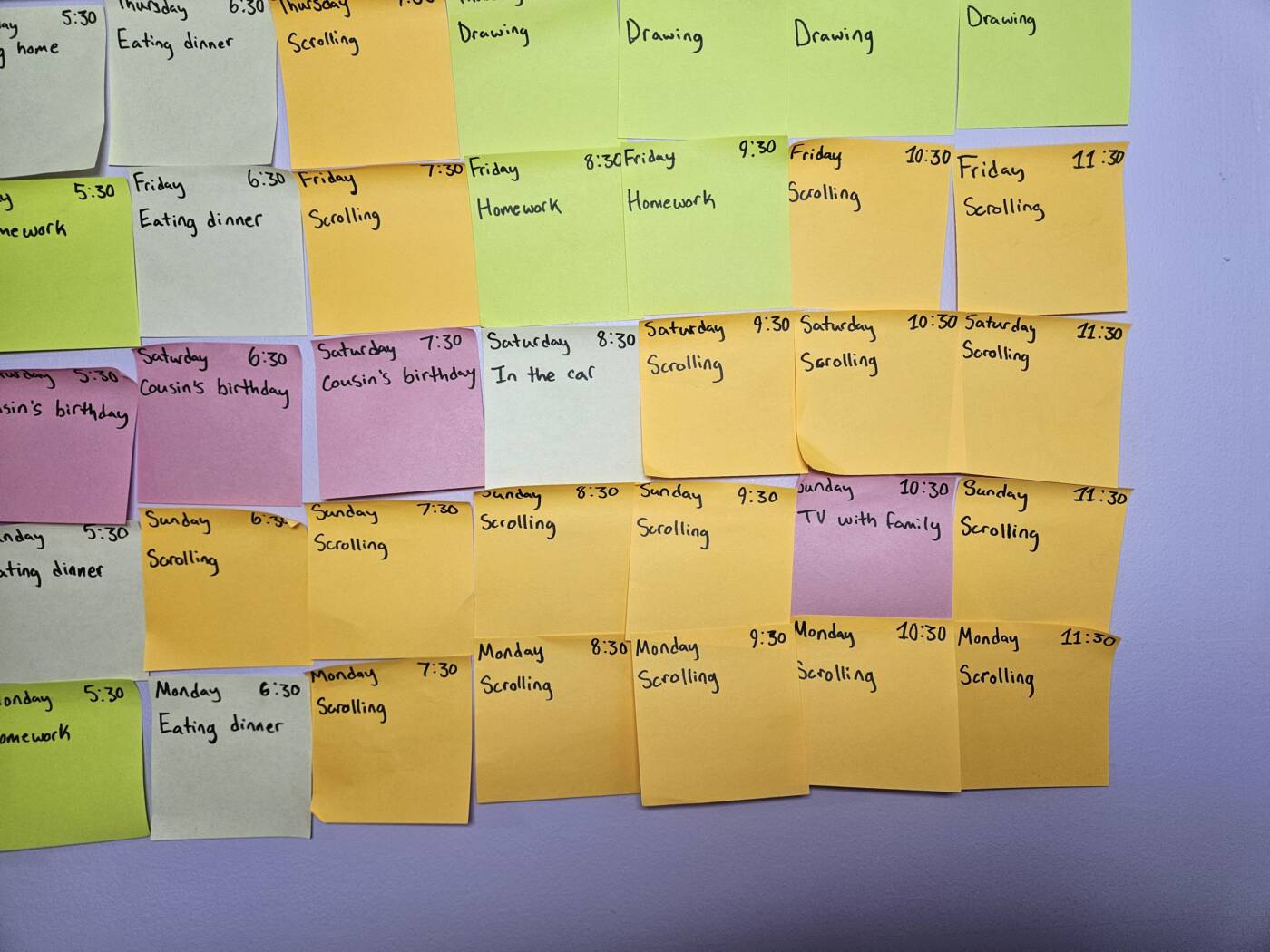
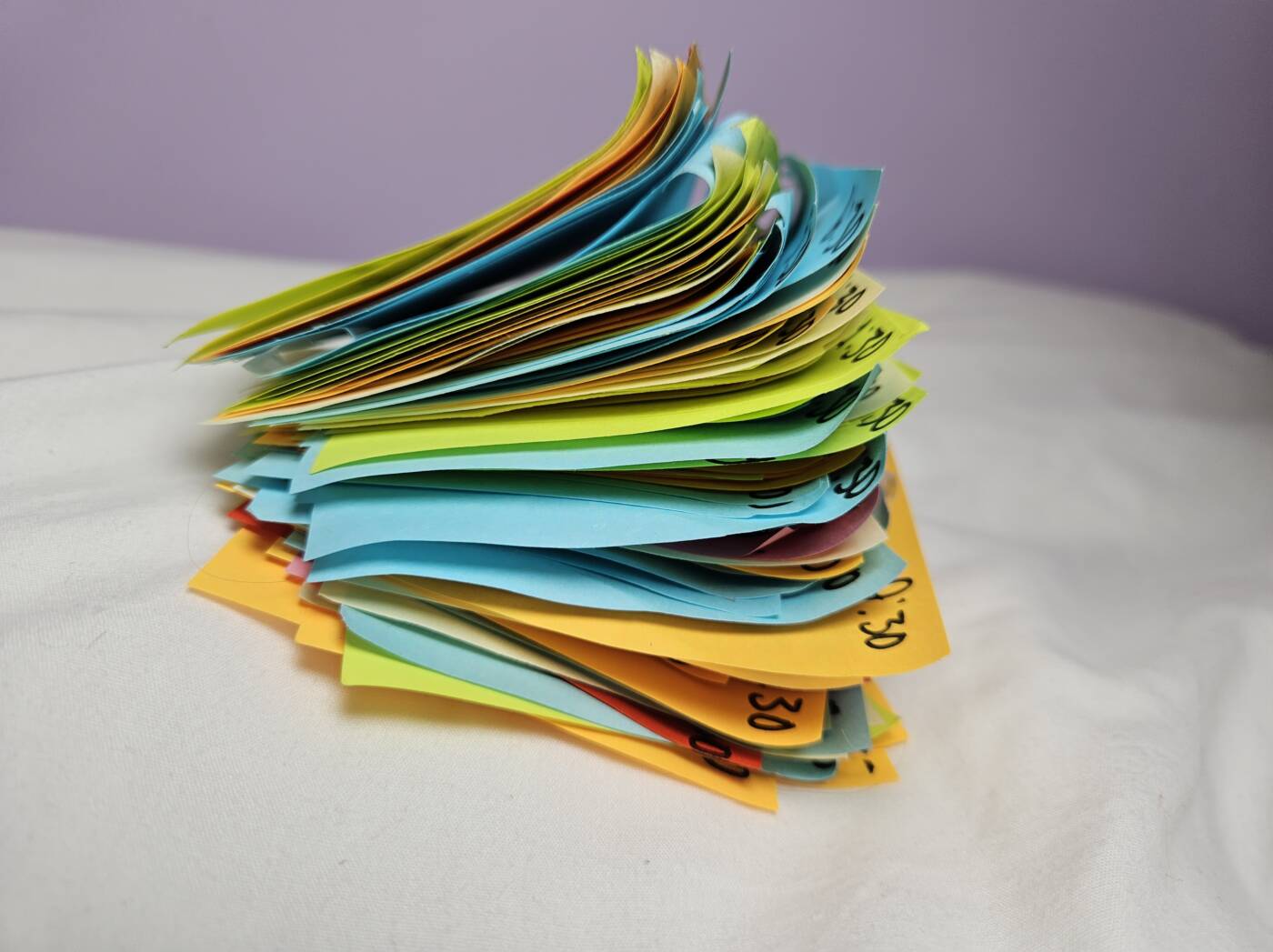
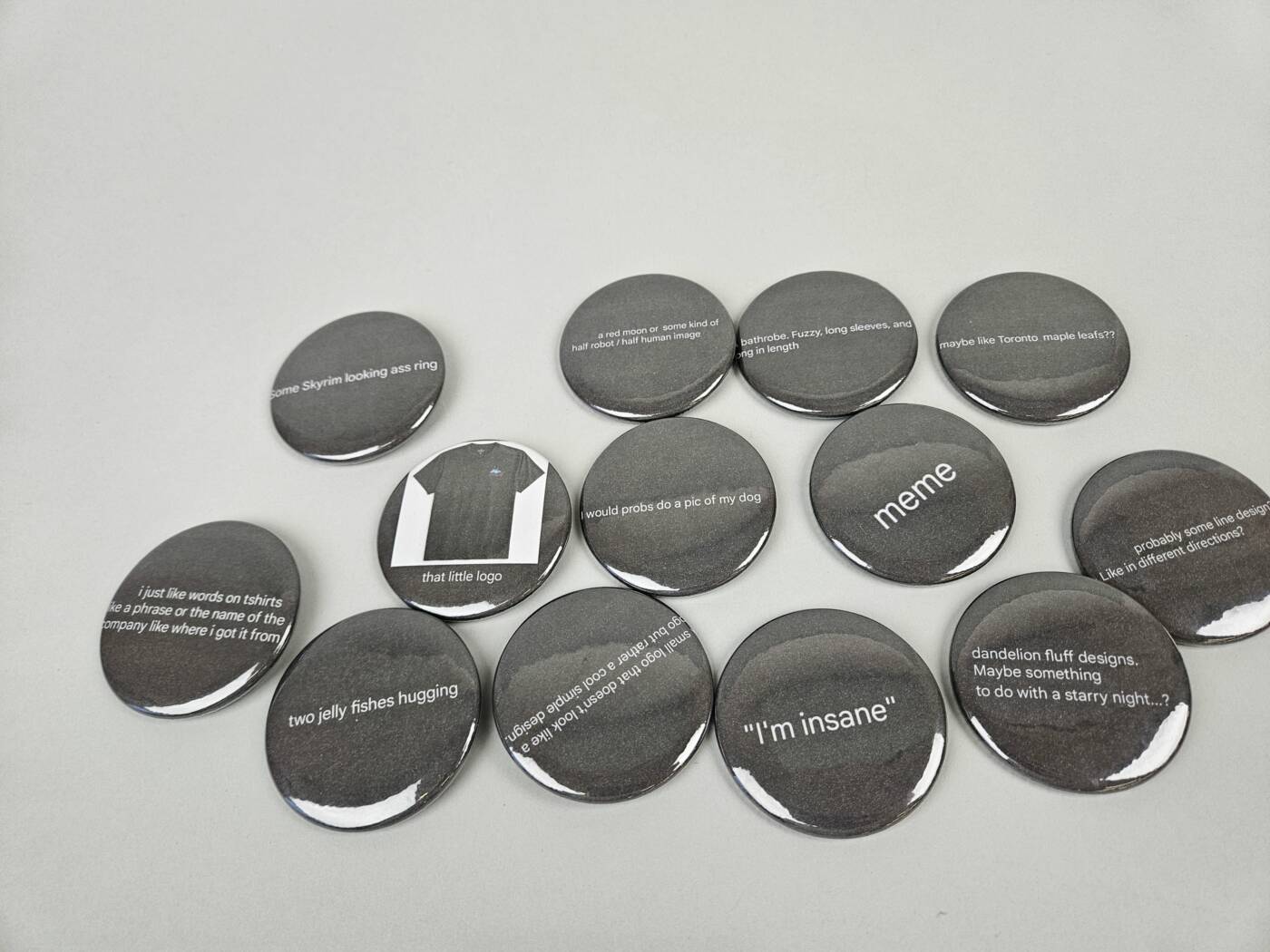
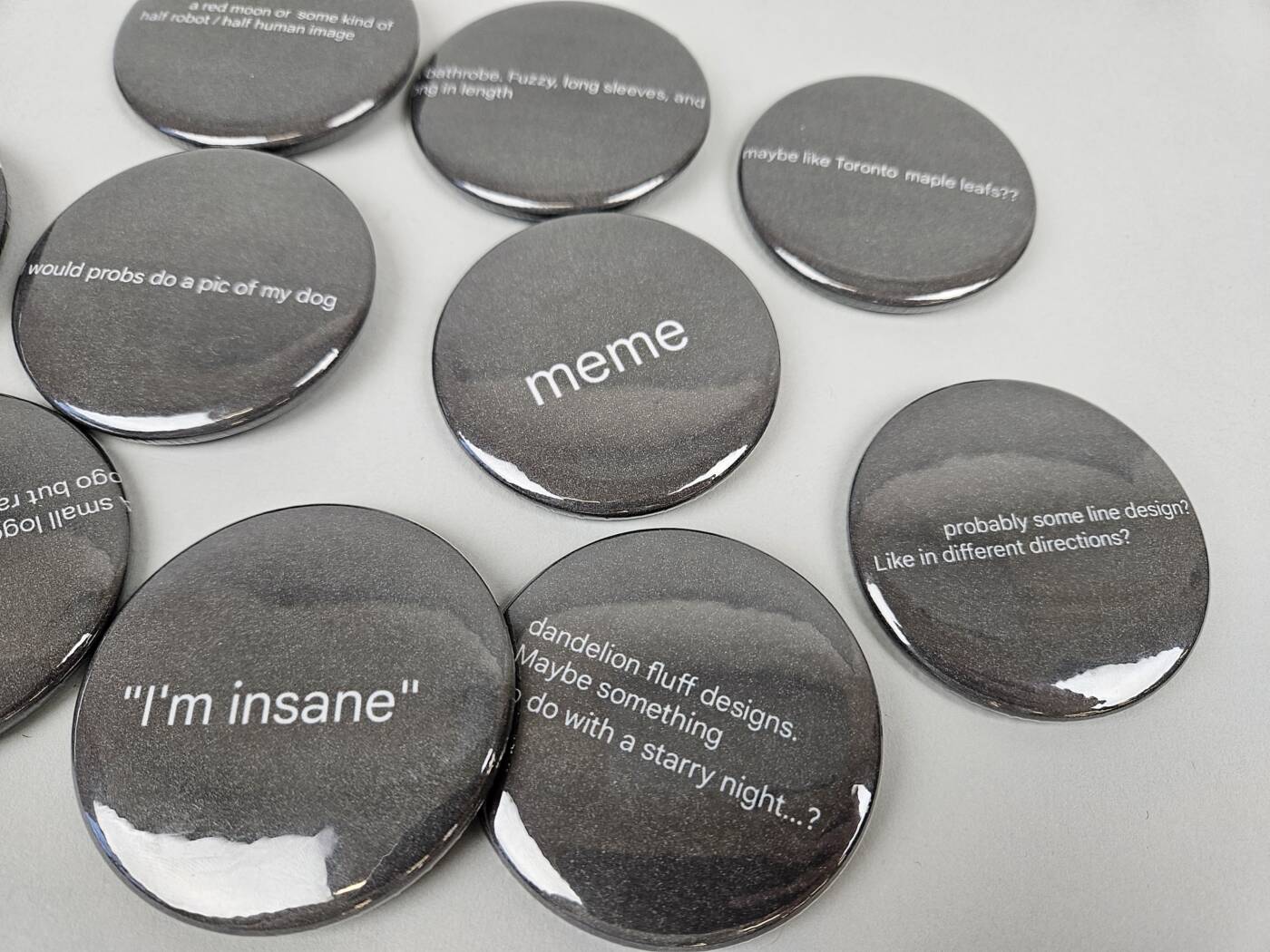








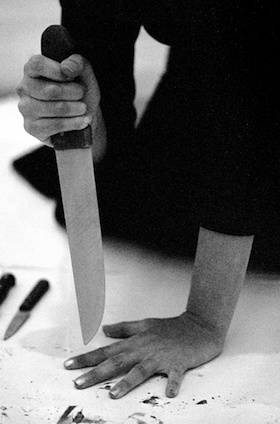
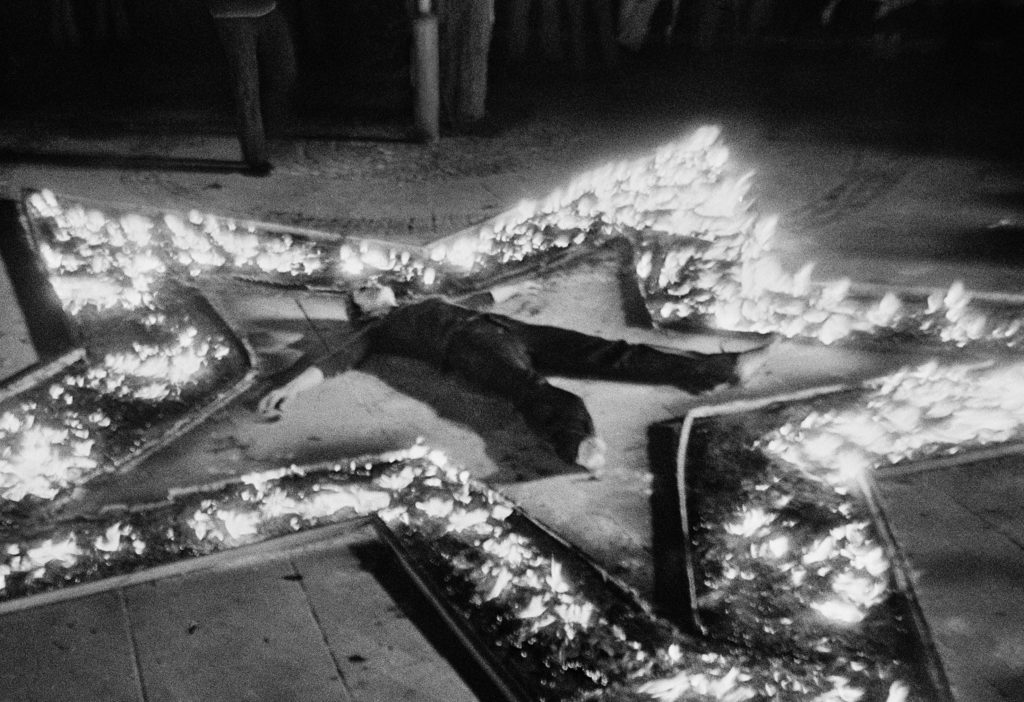
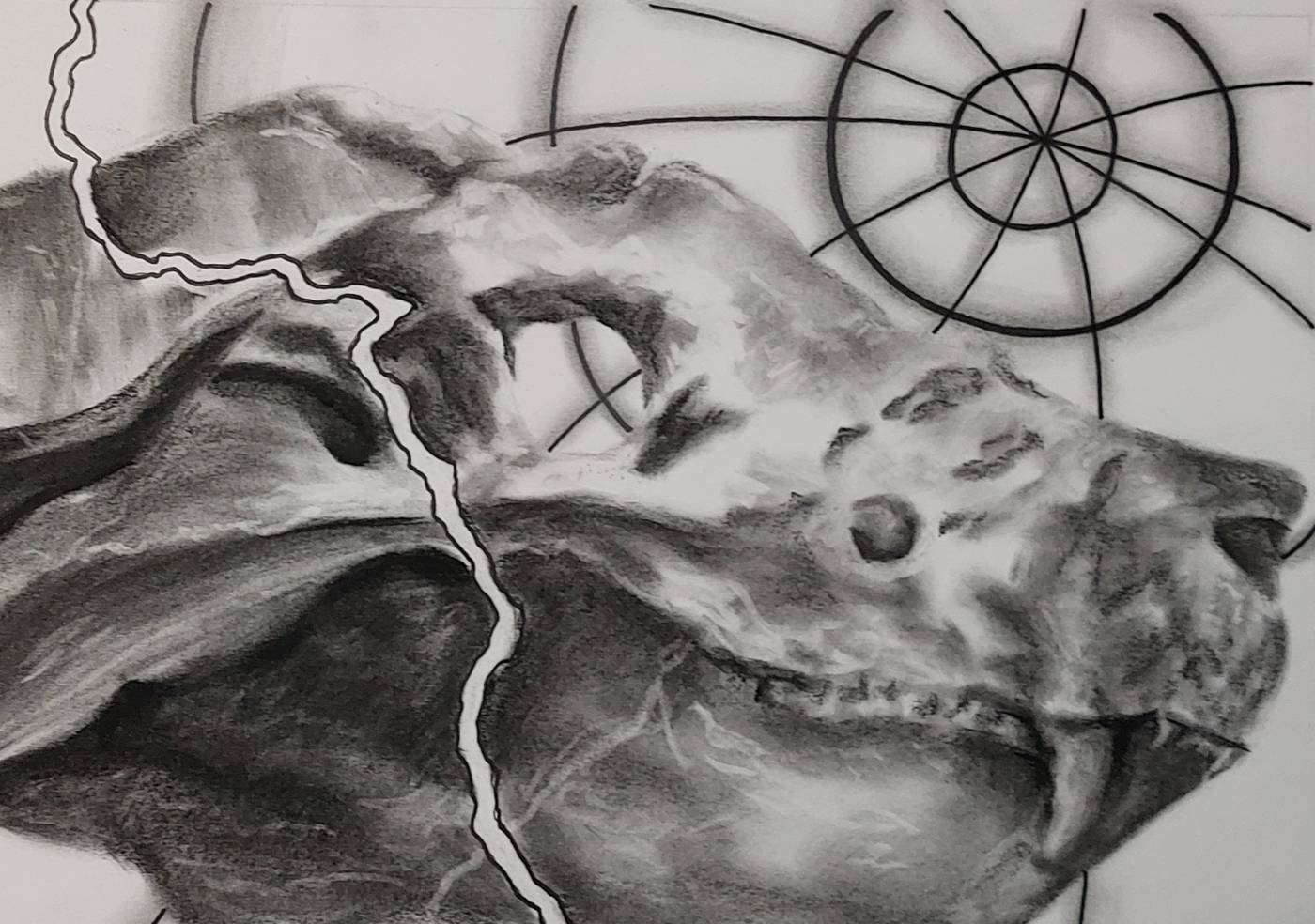
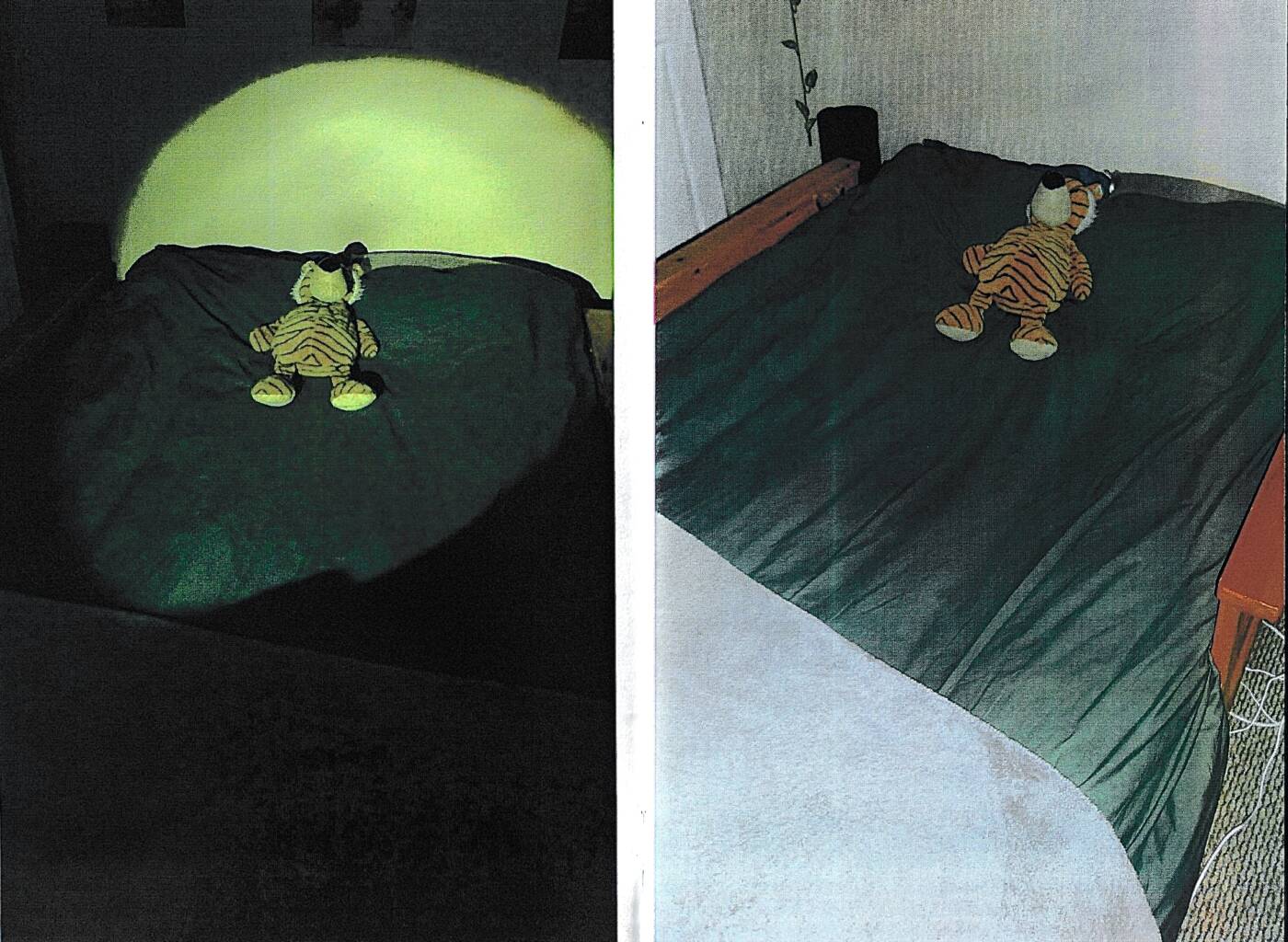
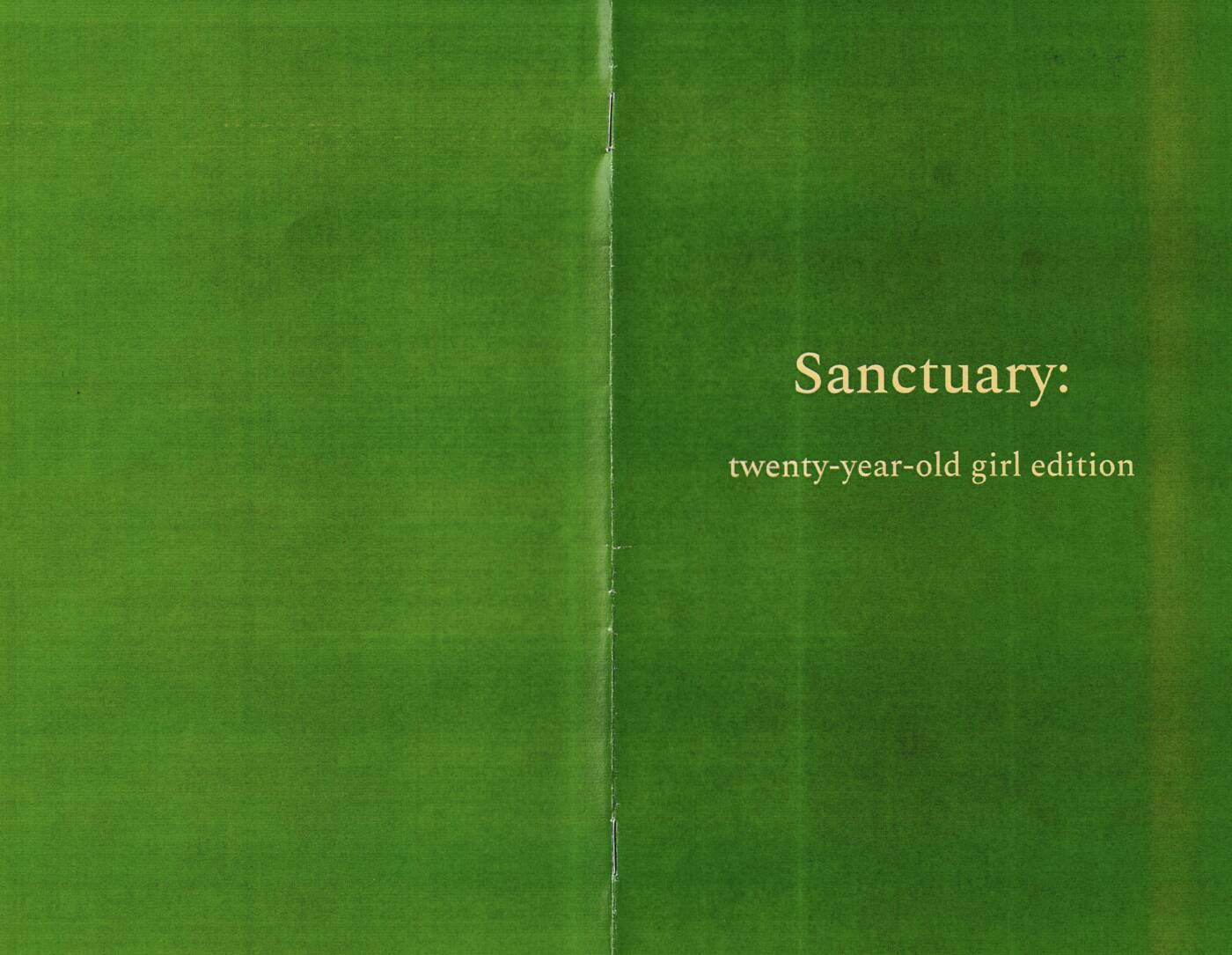

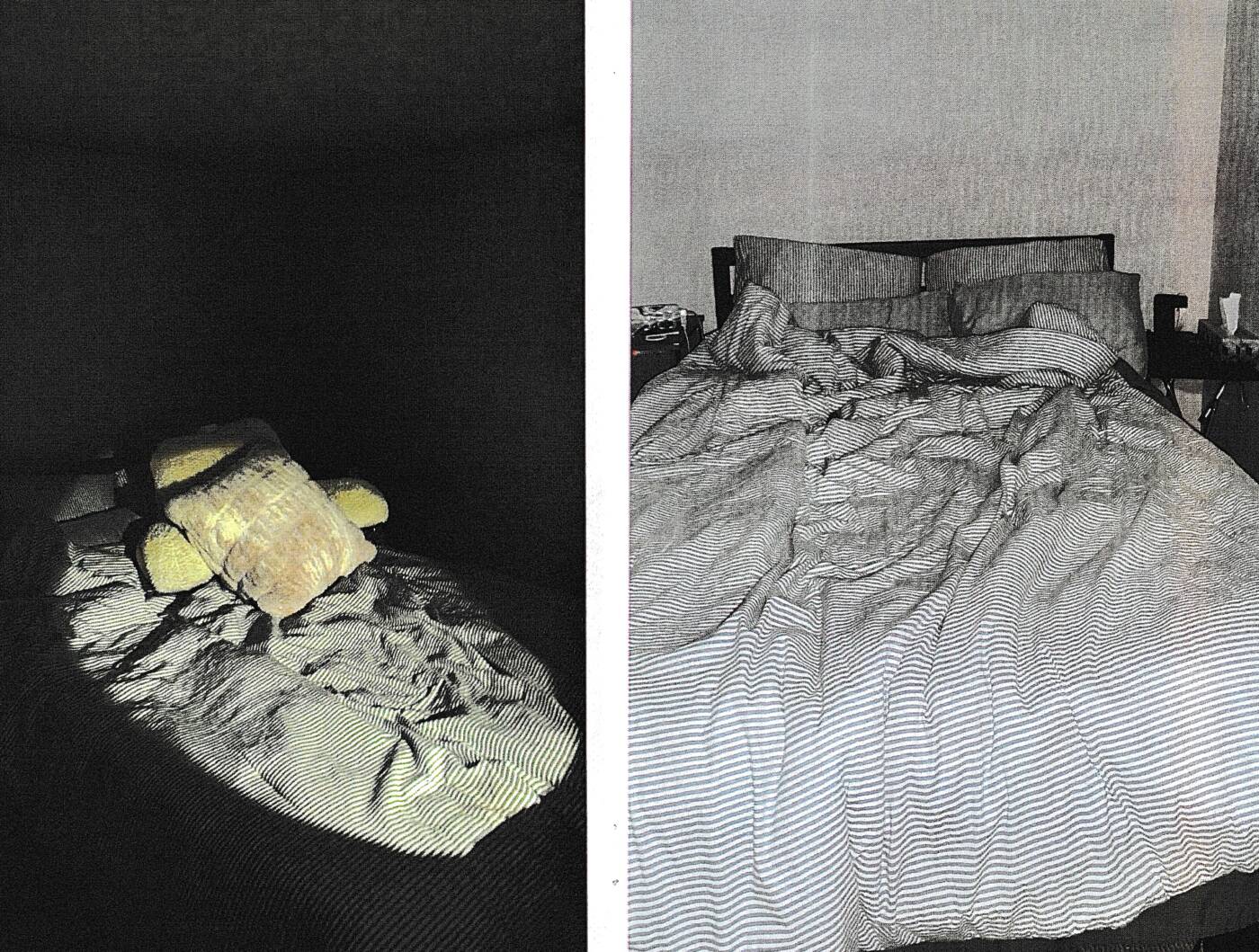
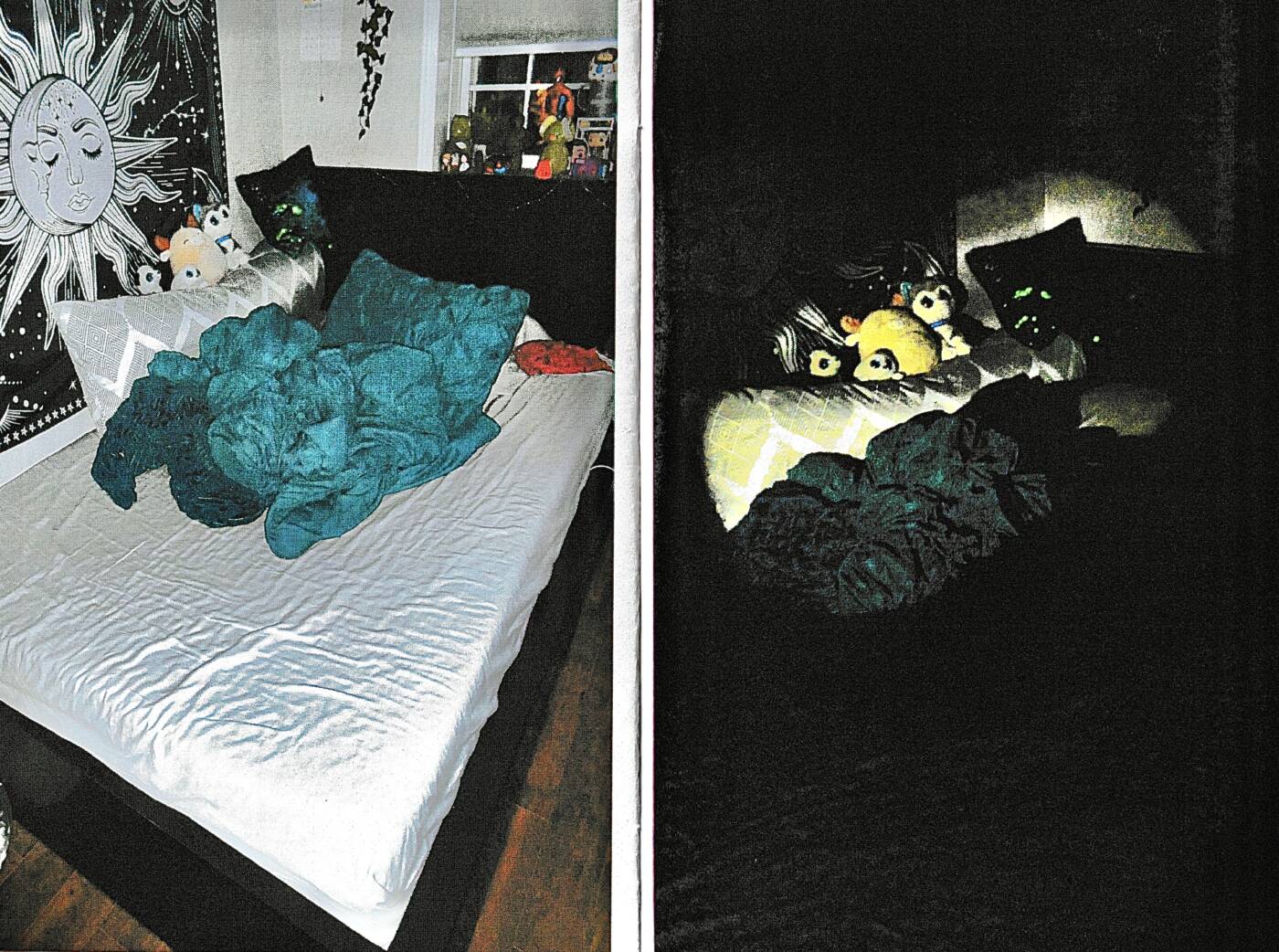
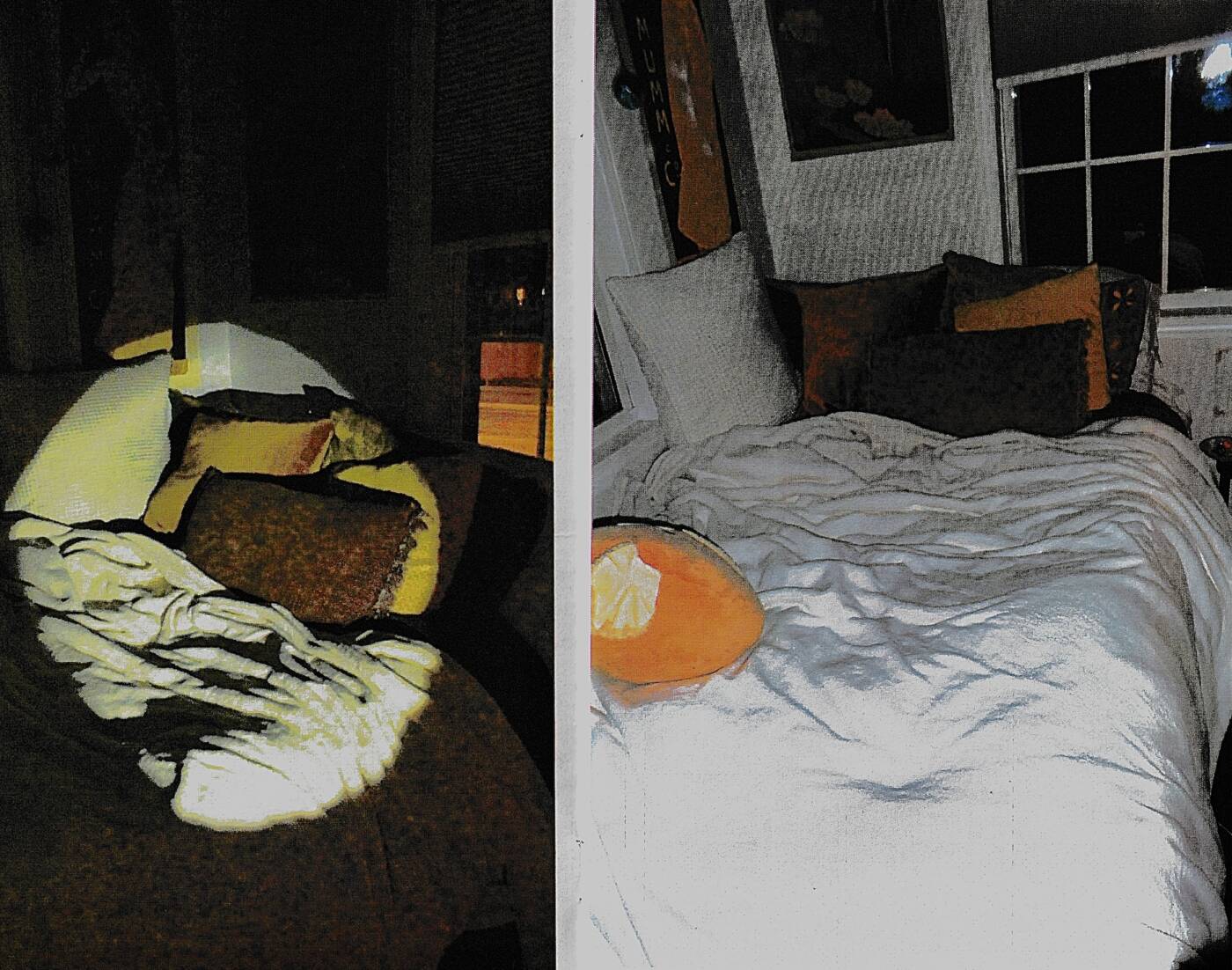
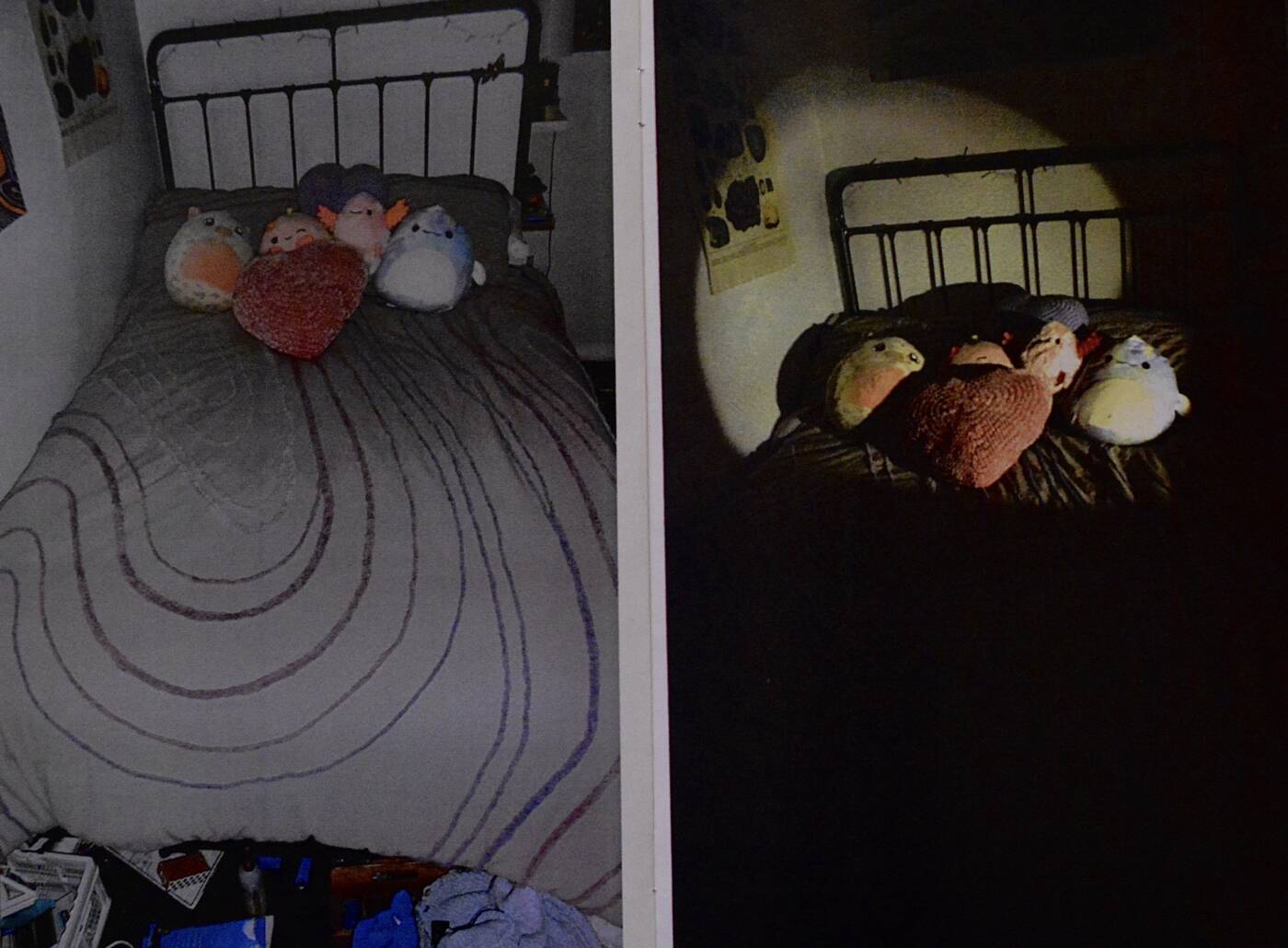
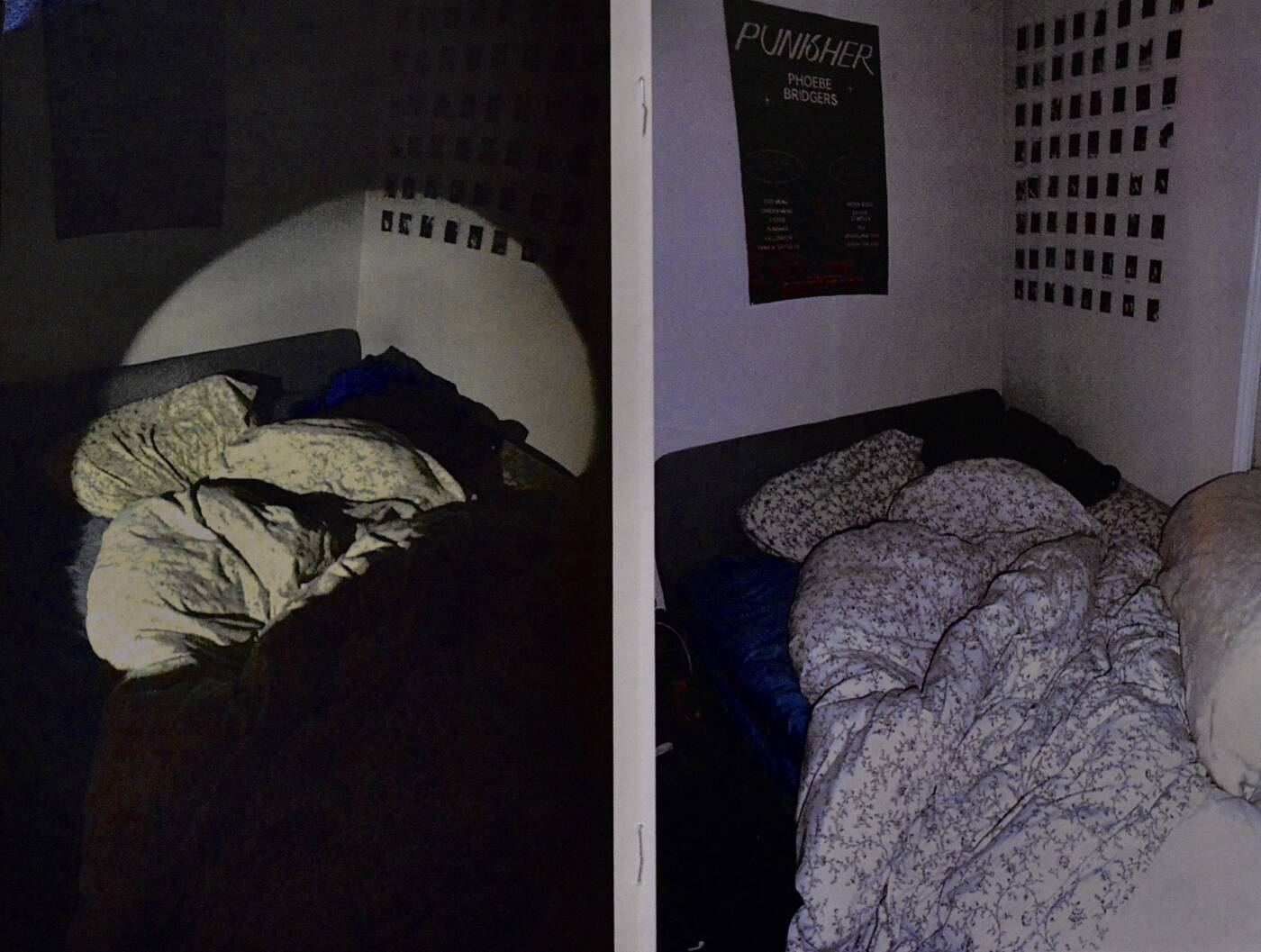

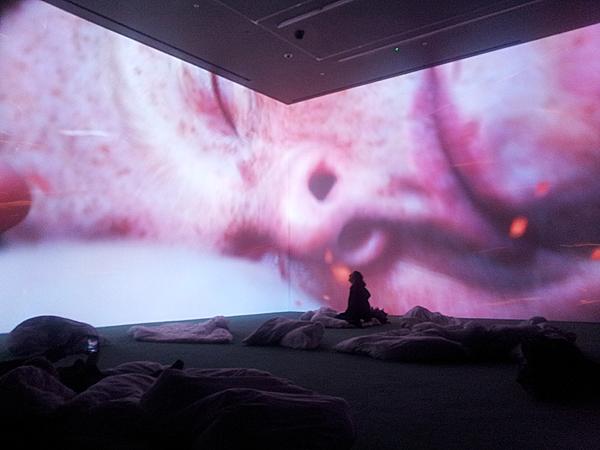
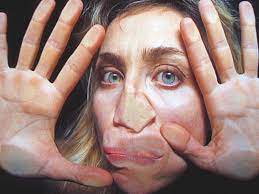
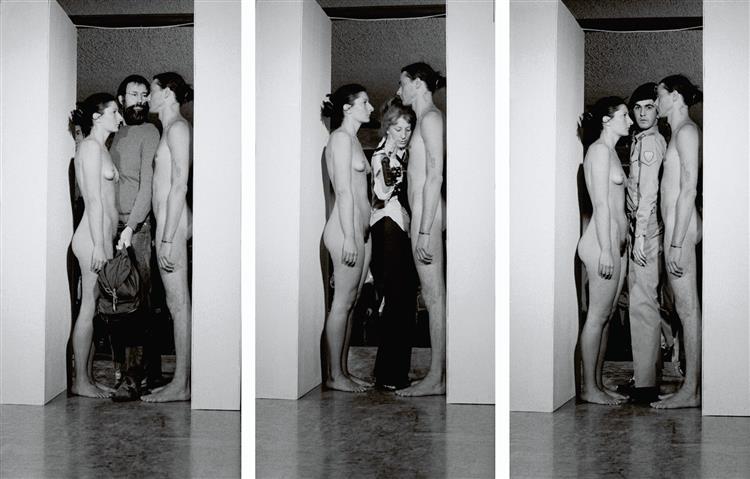
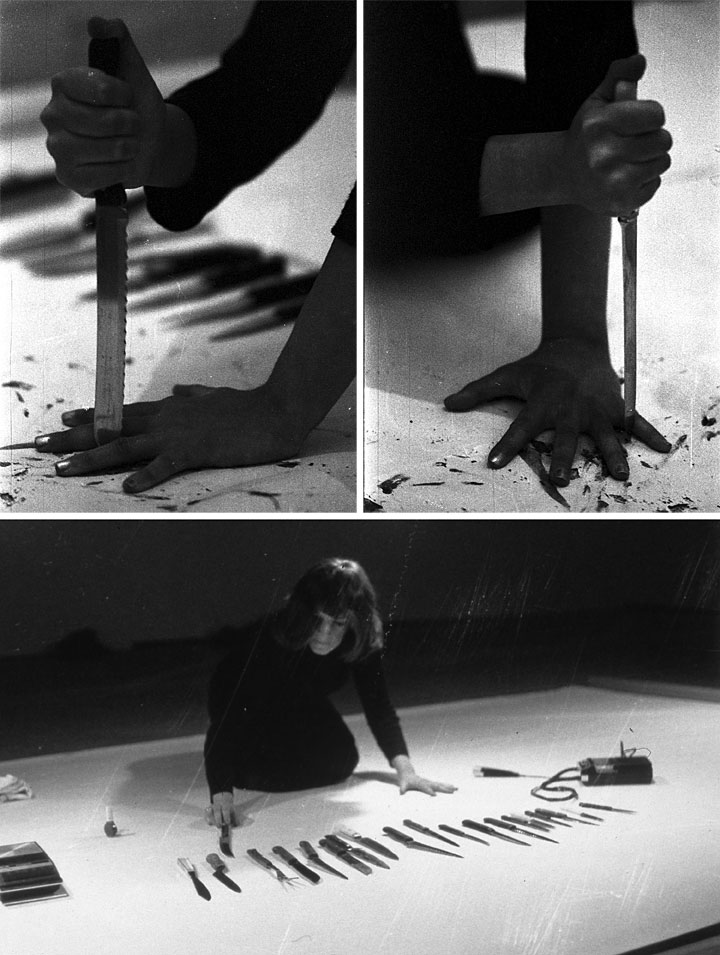

You must be logged in to post a comment.